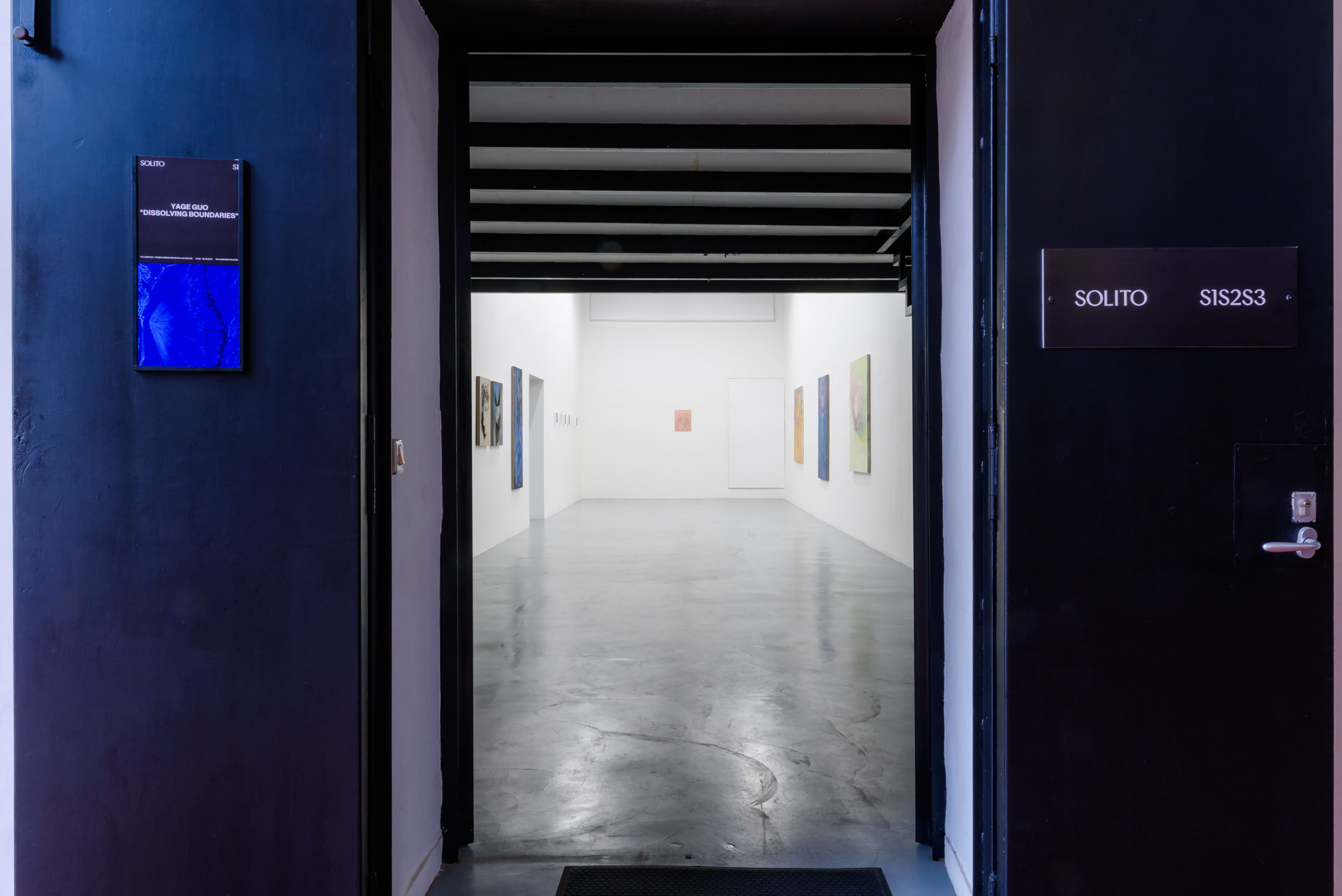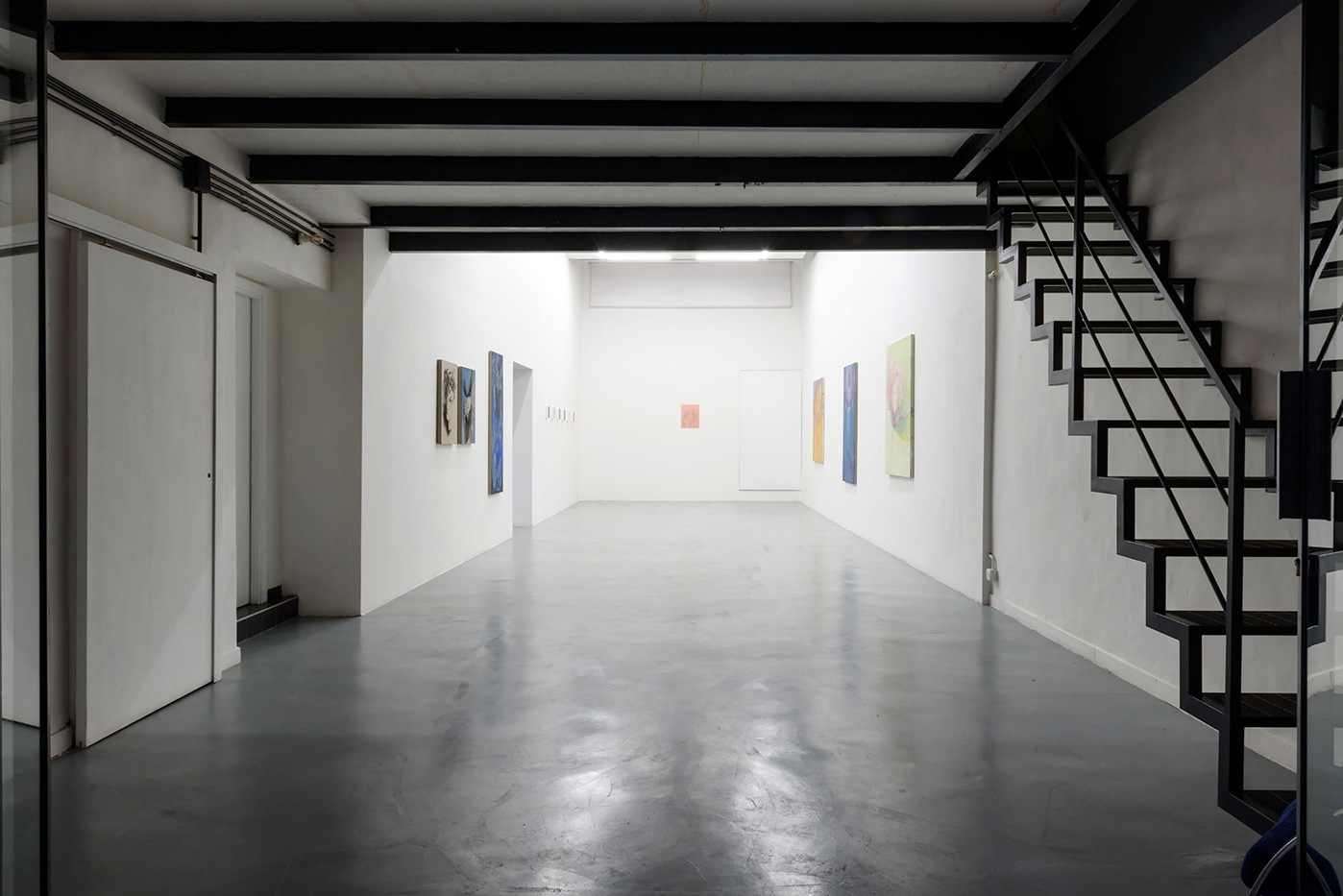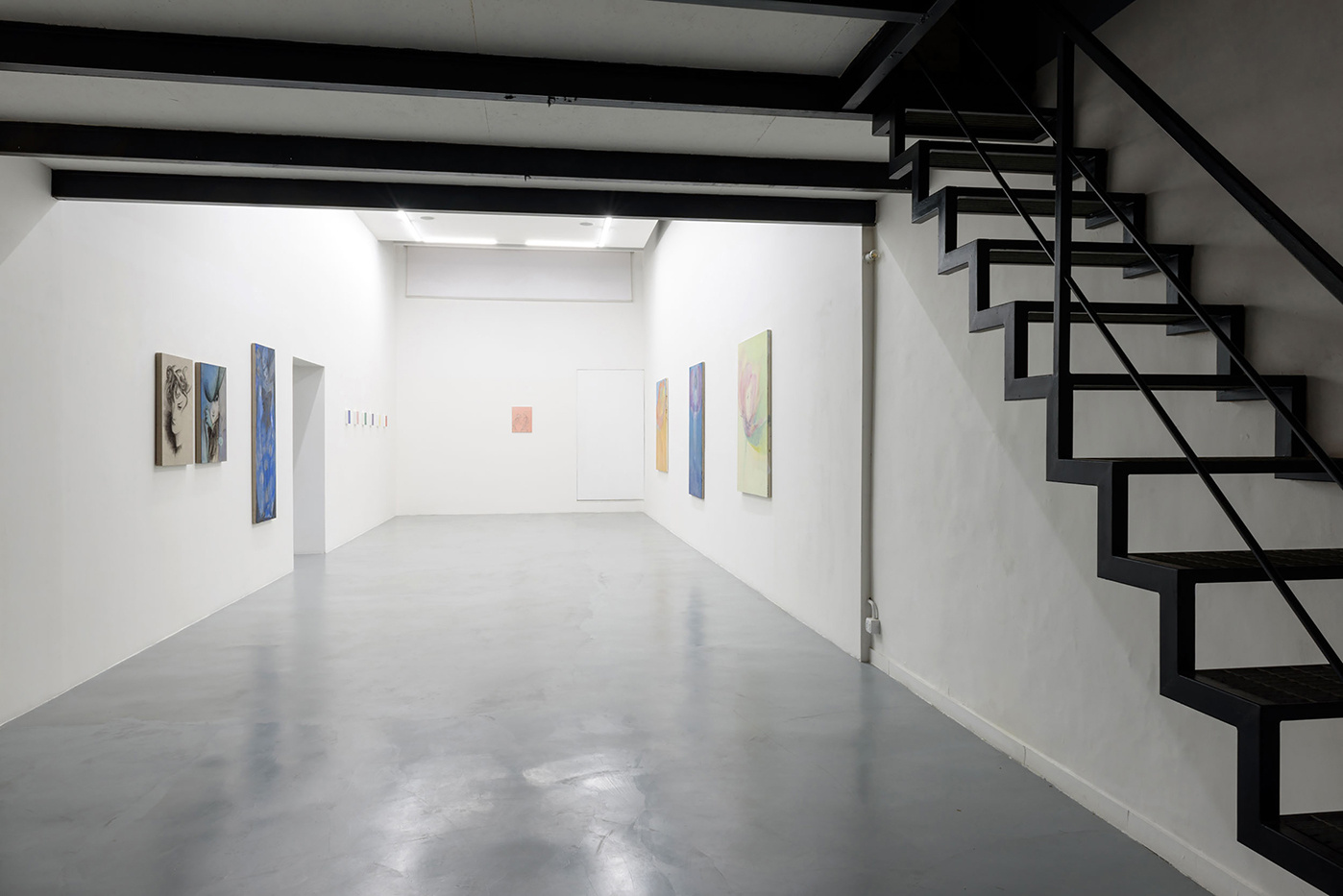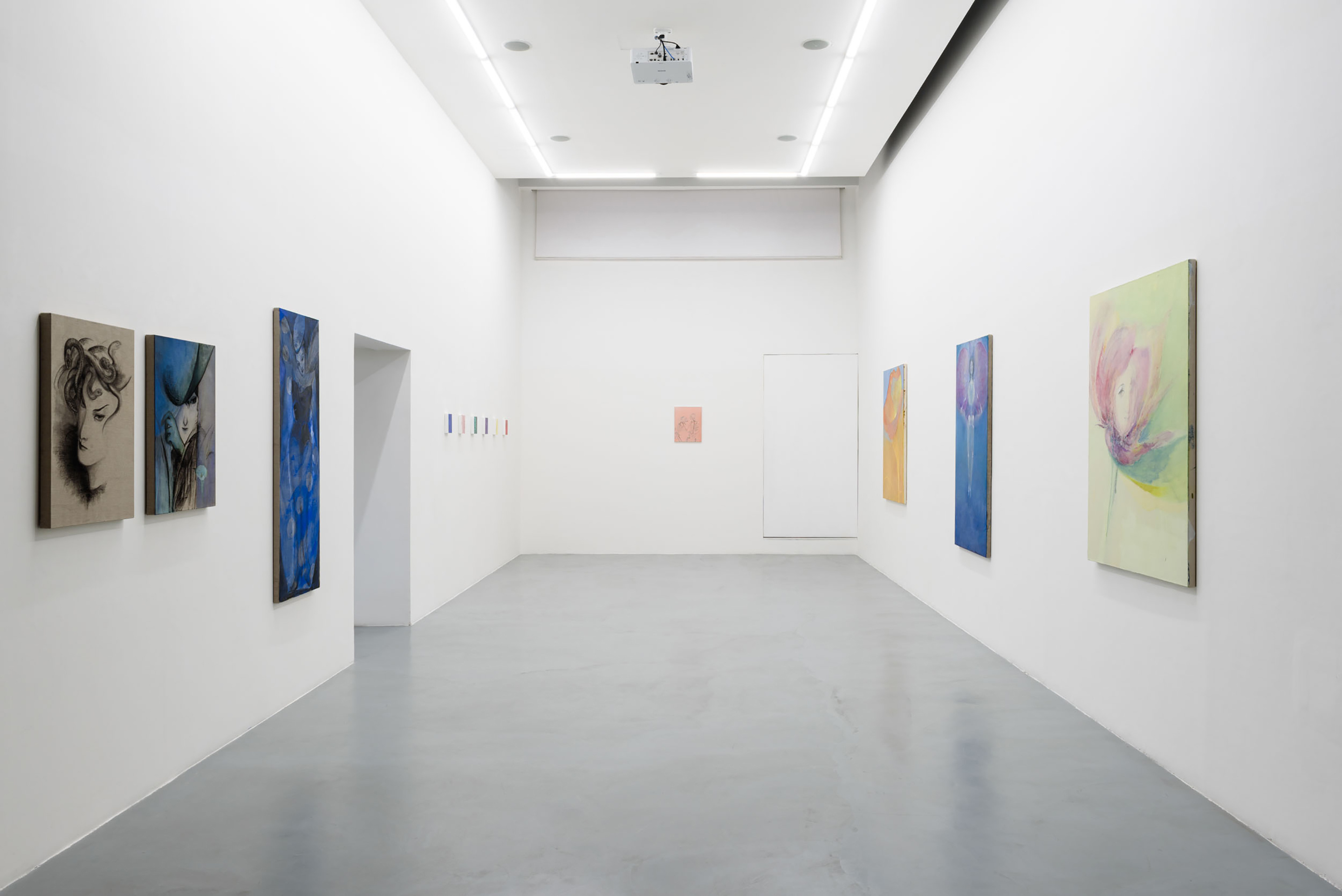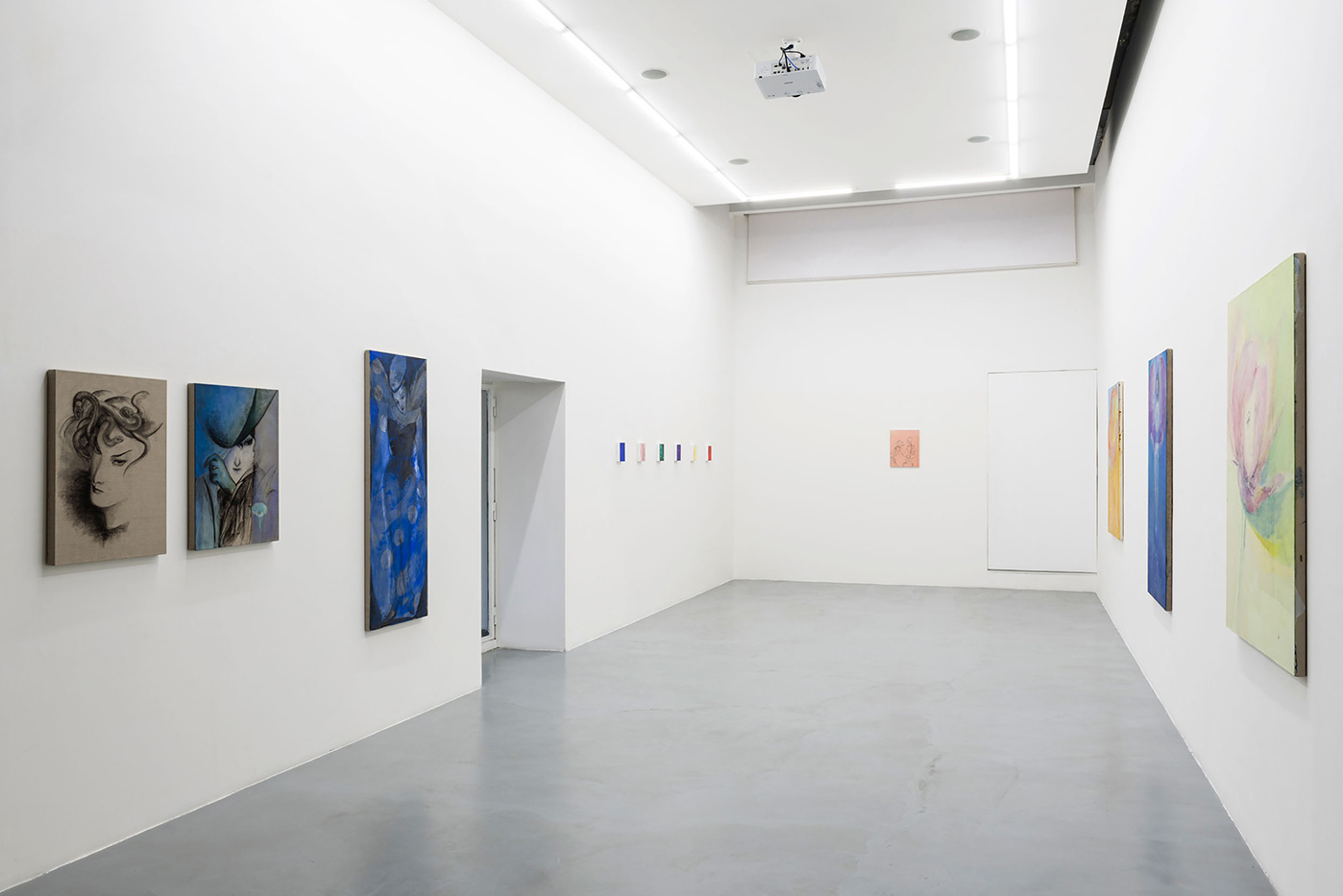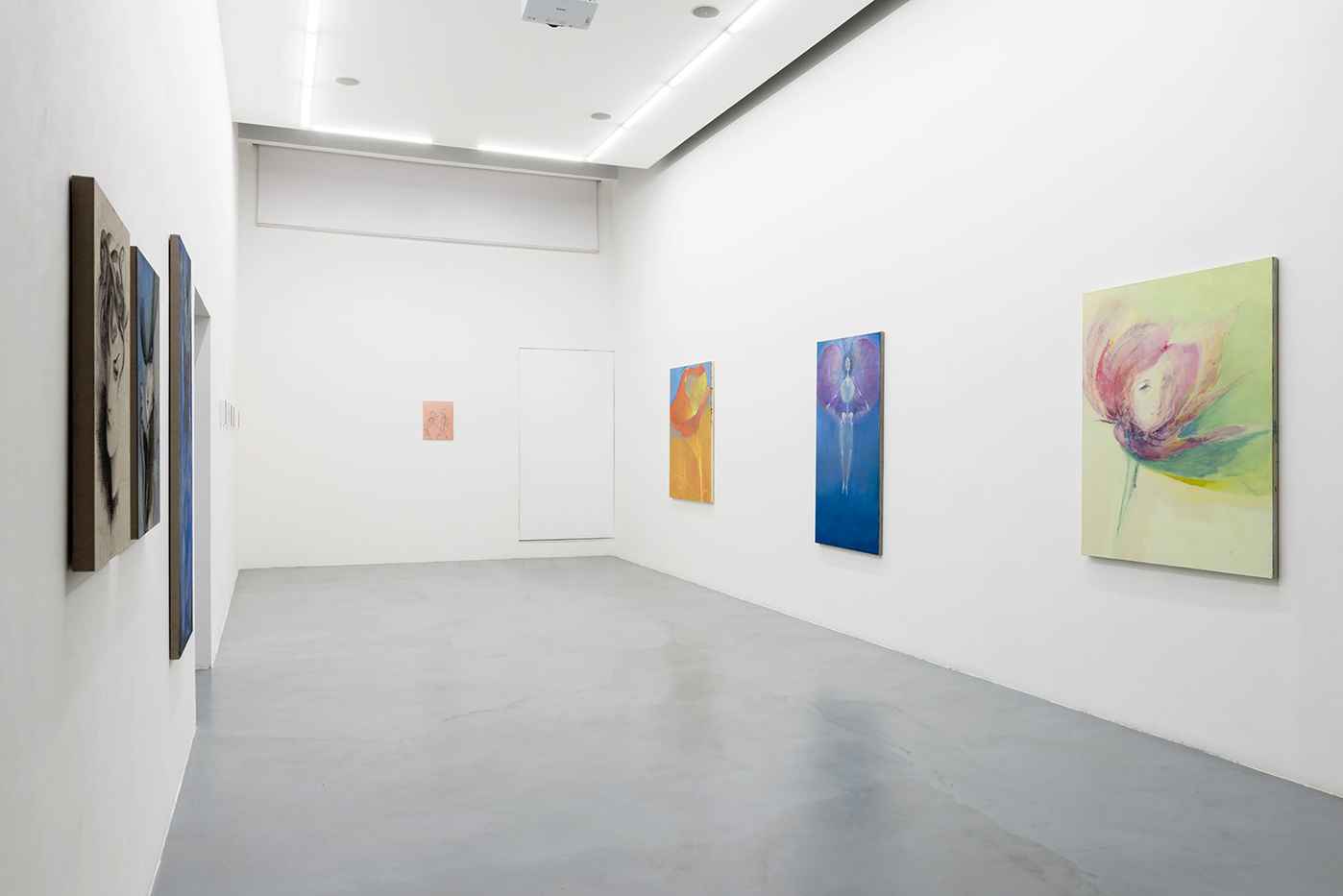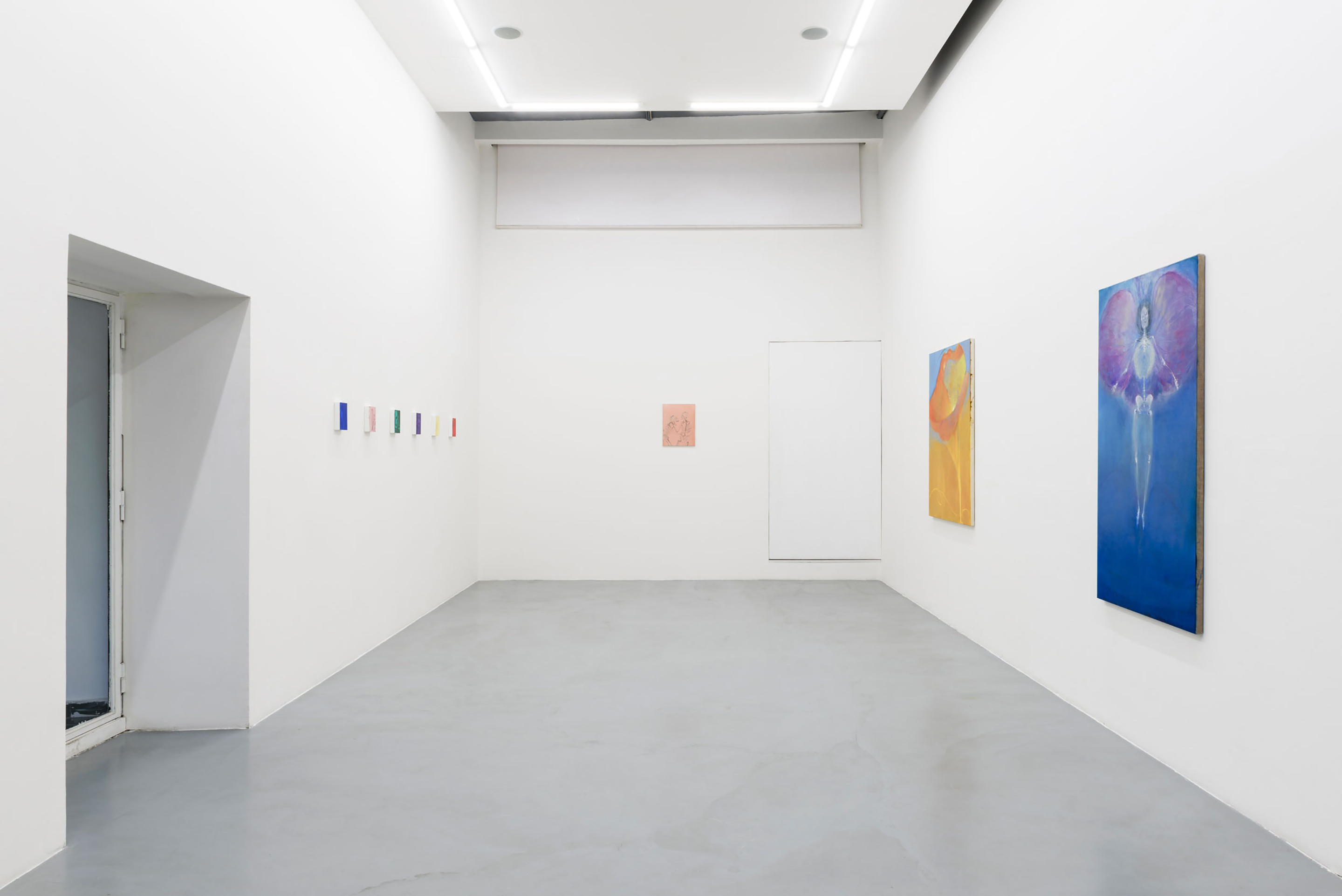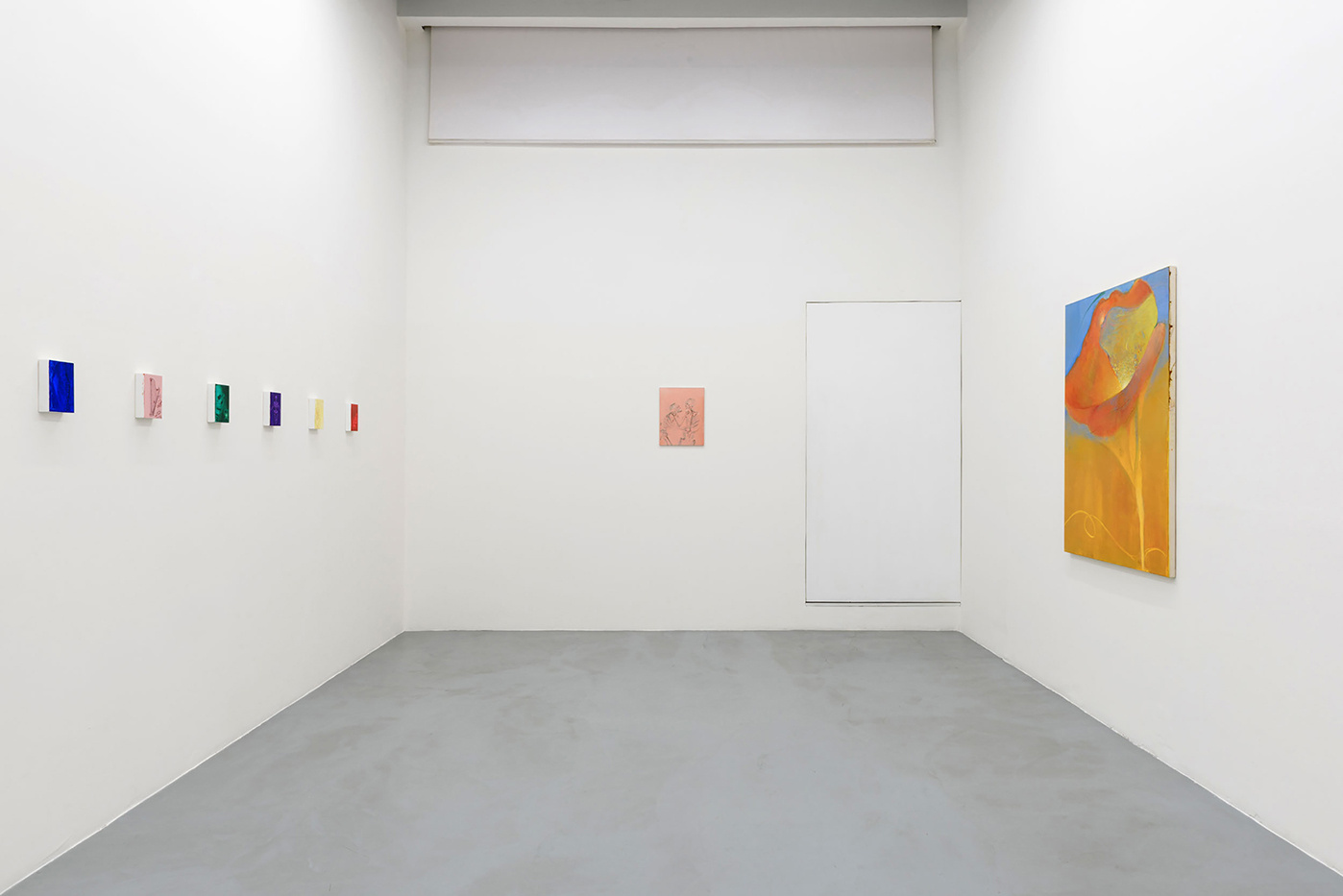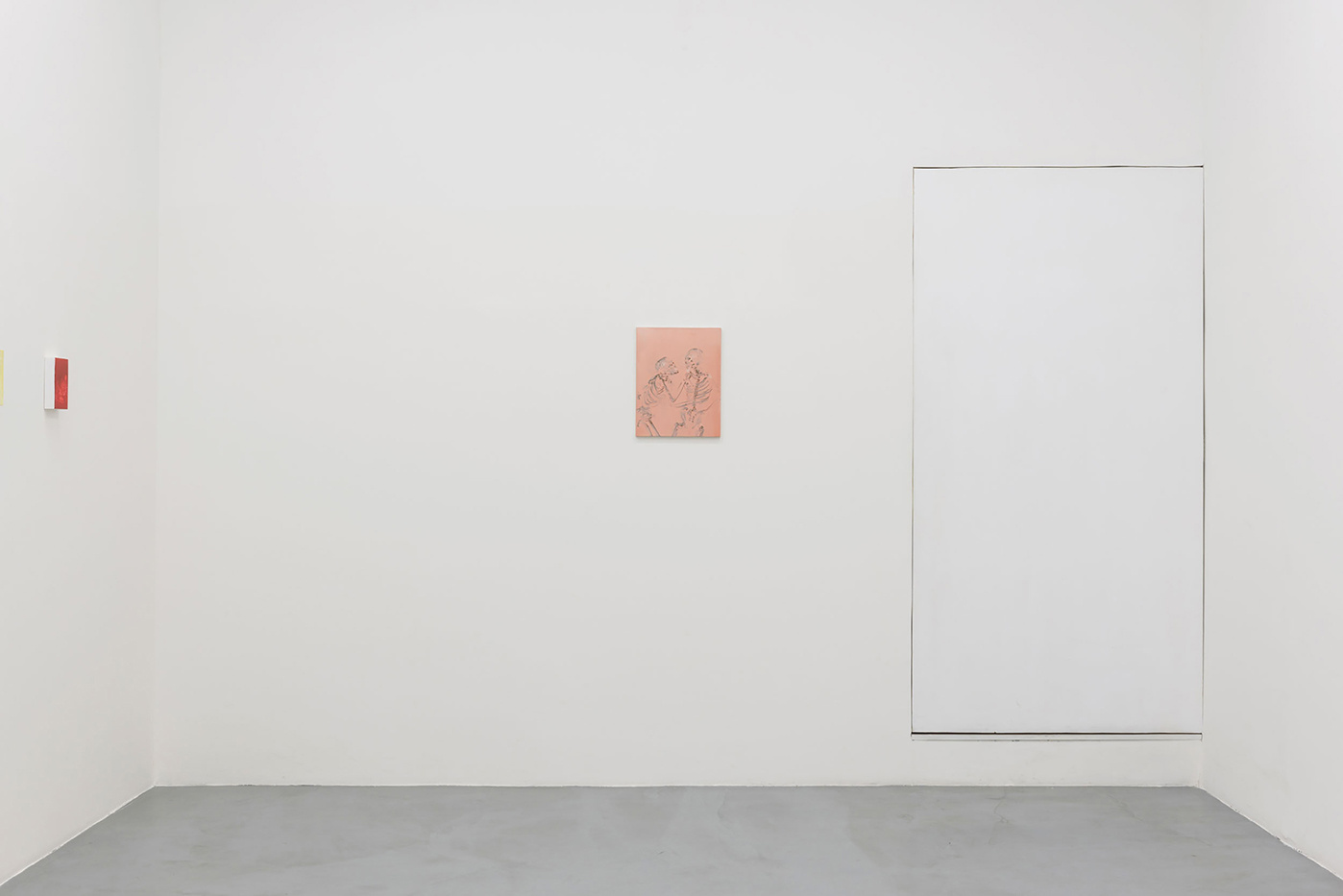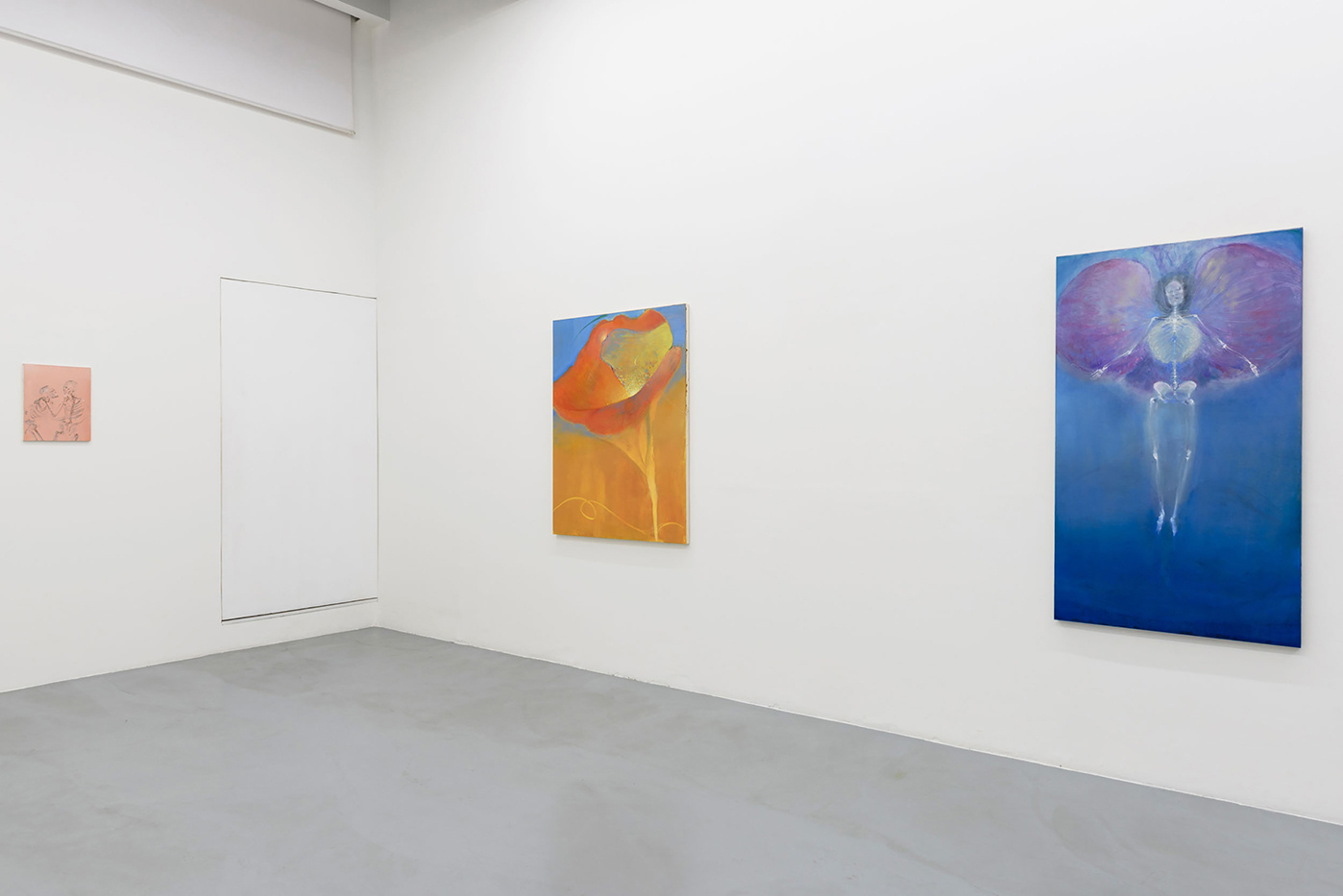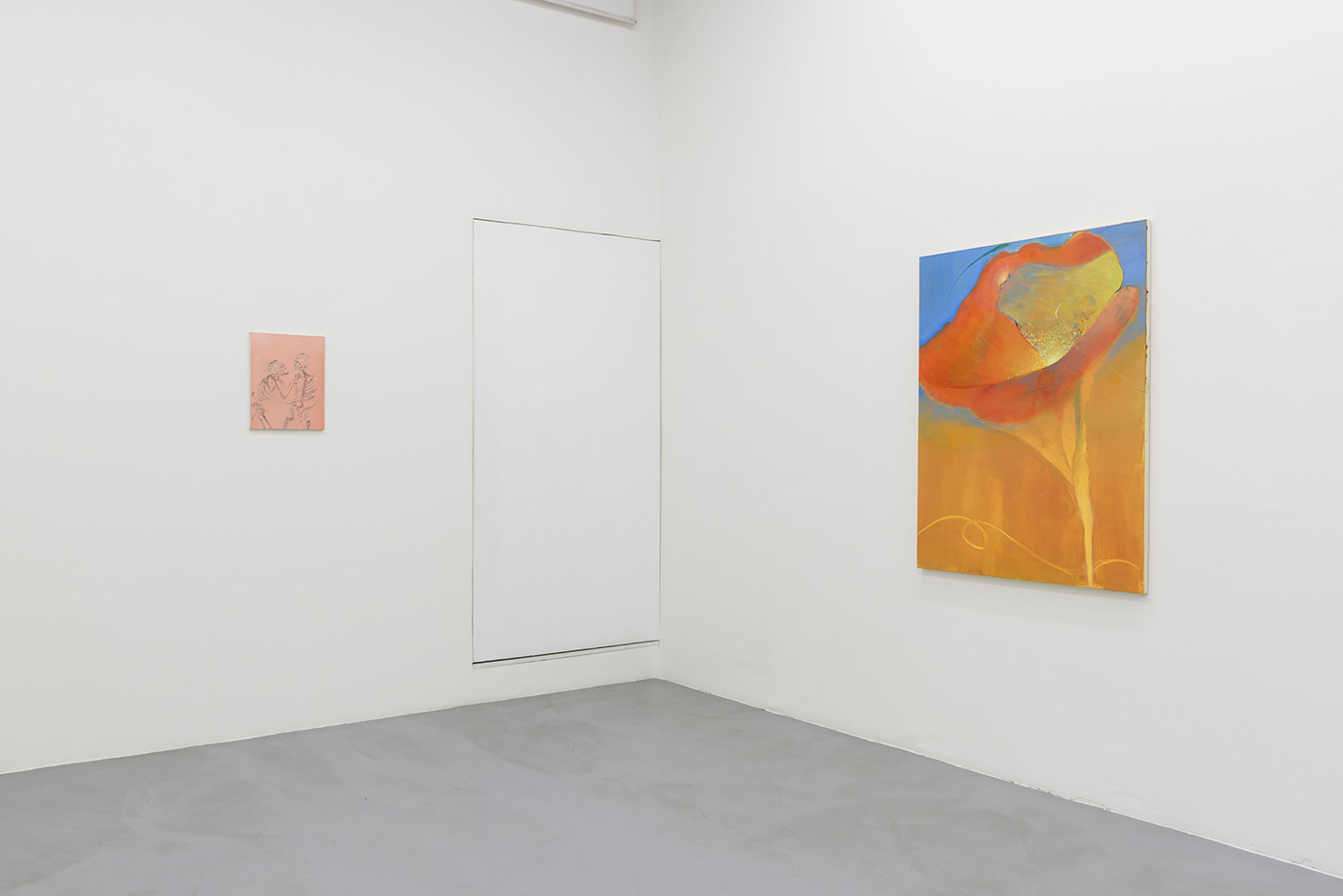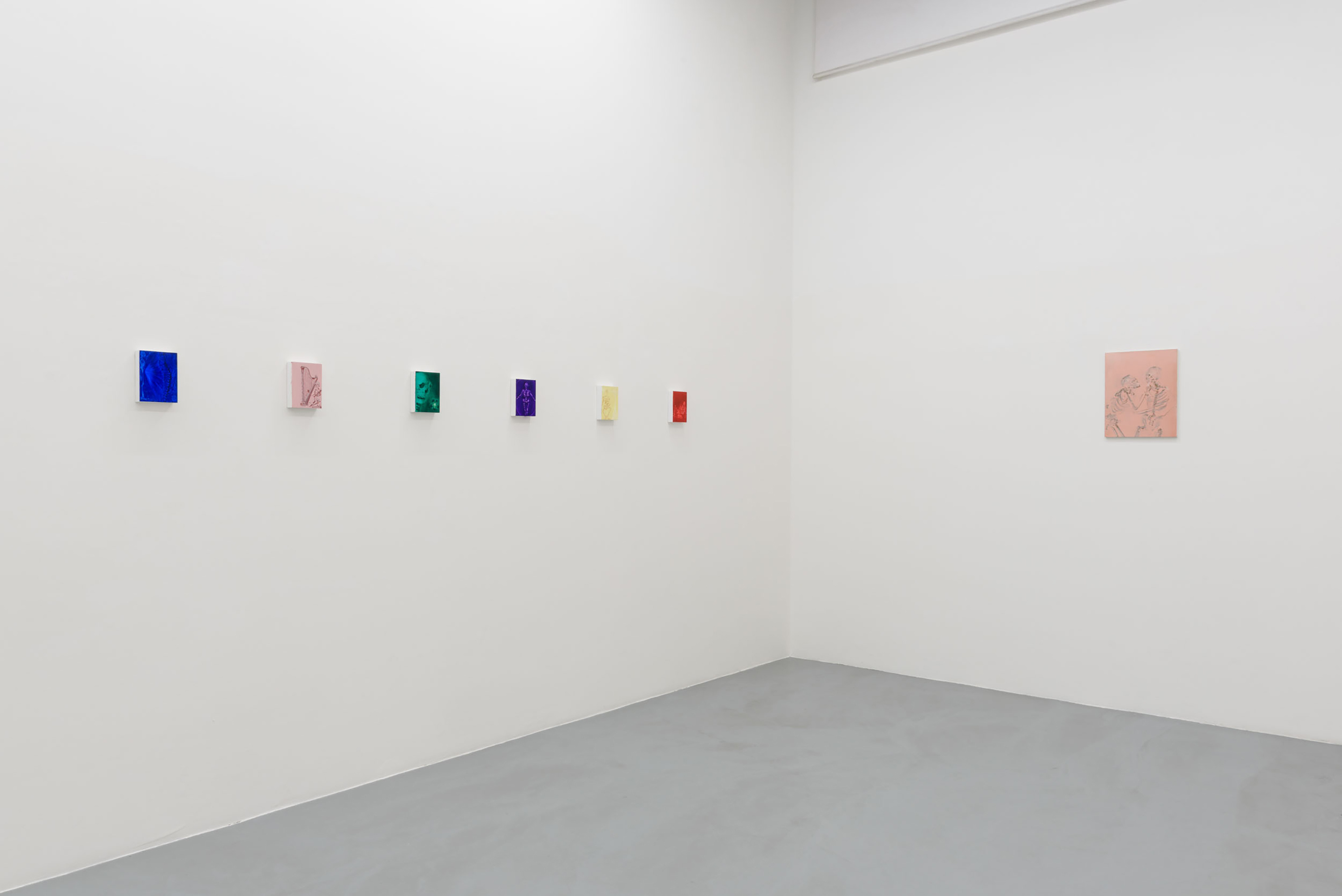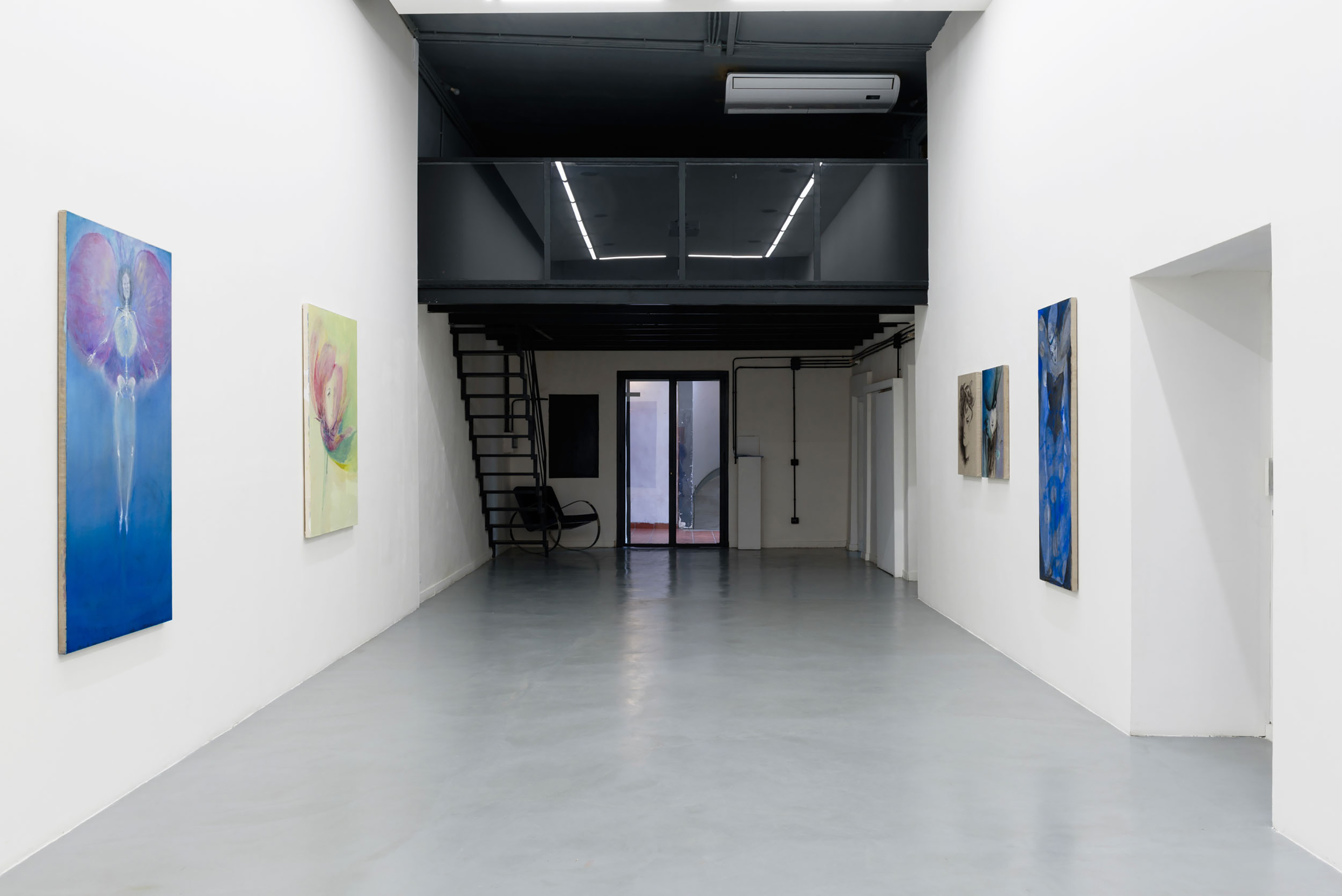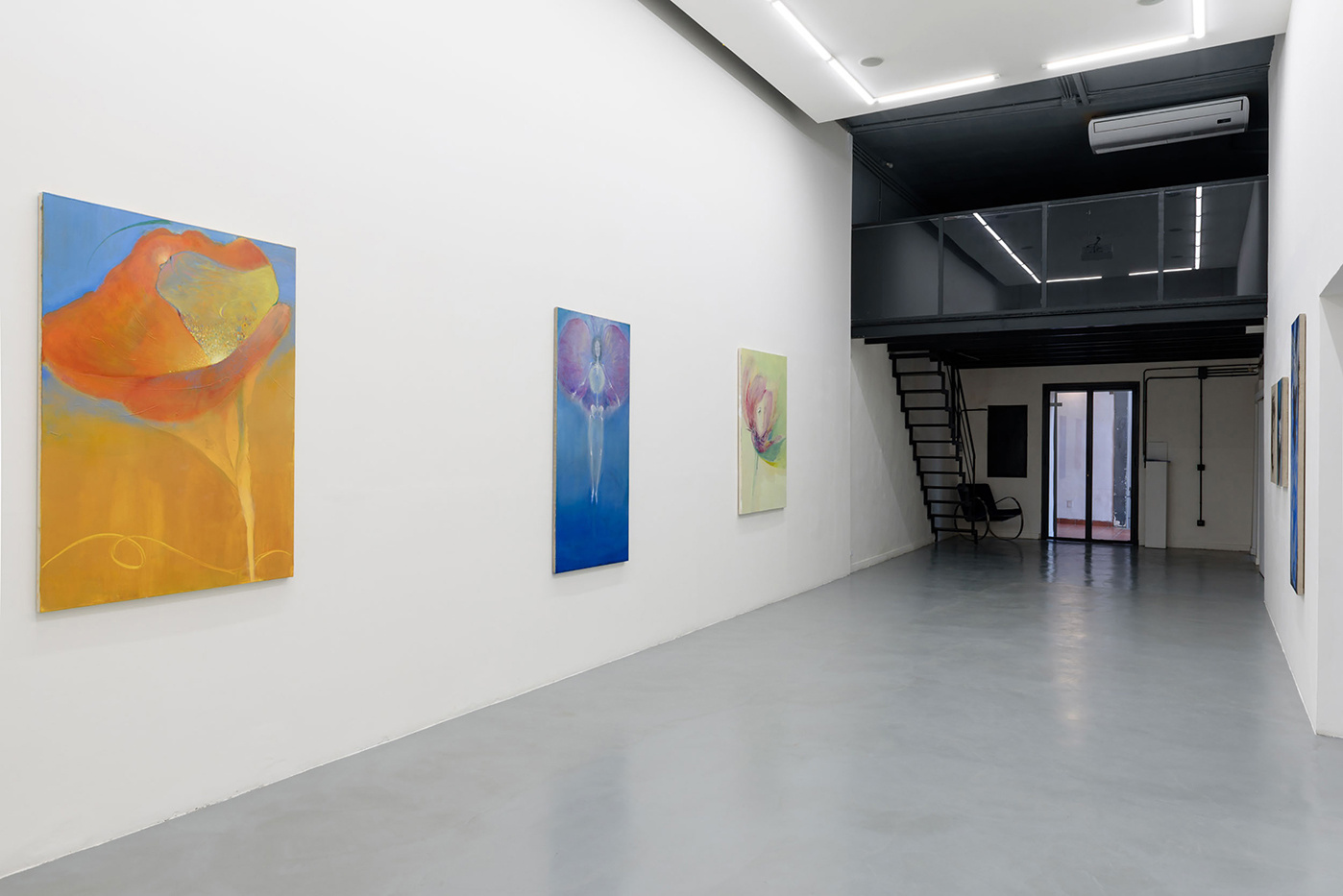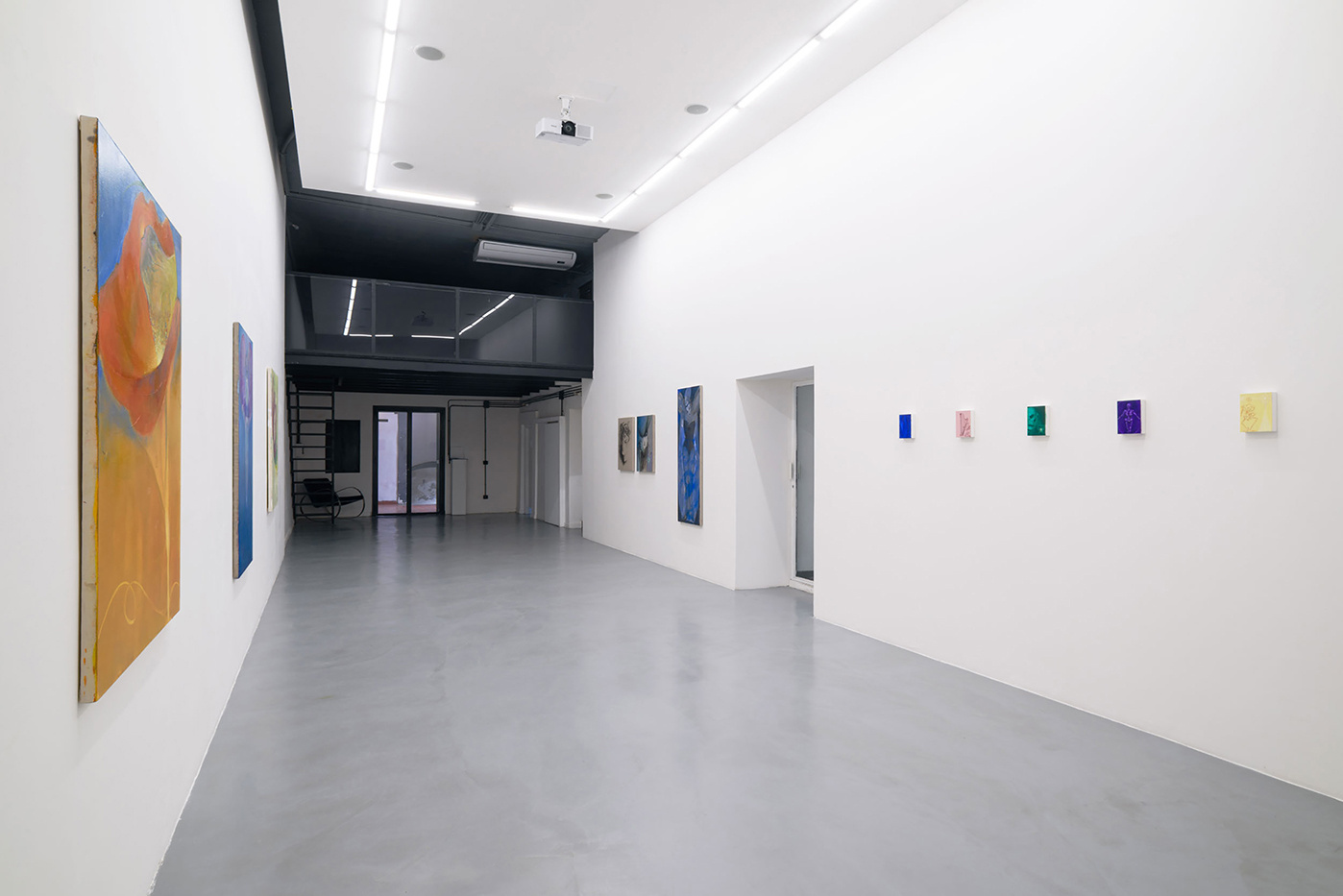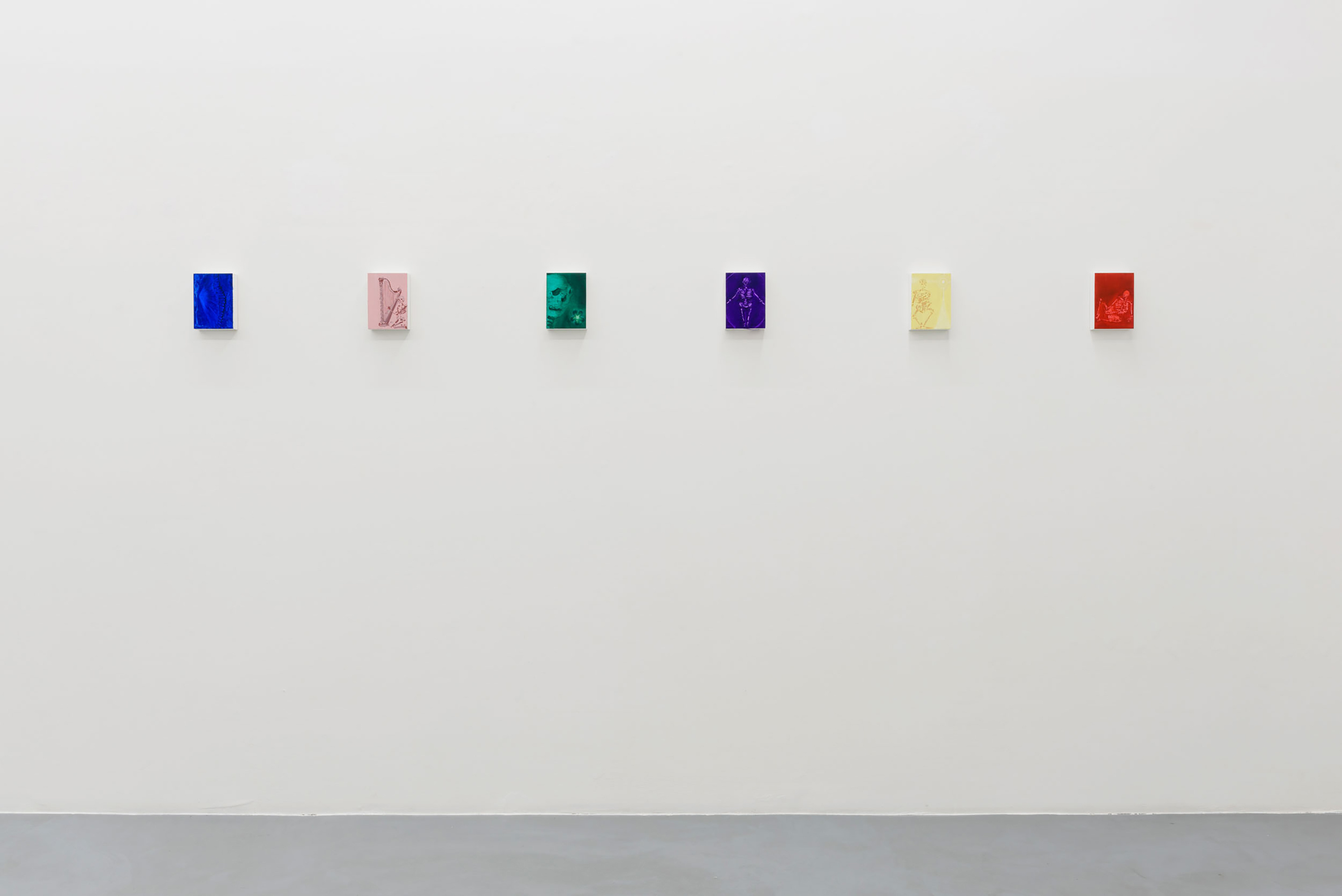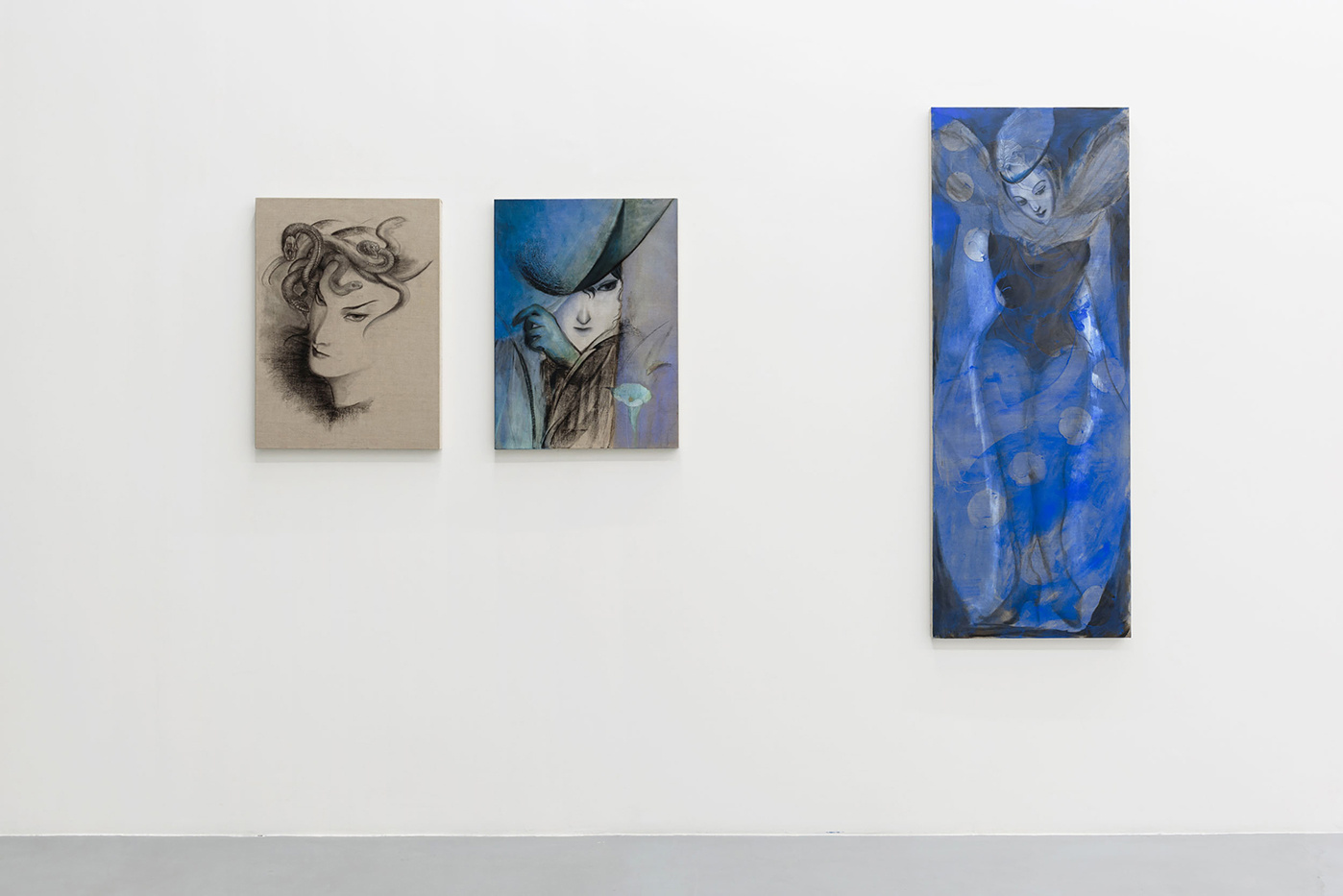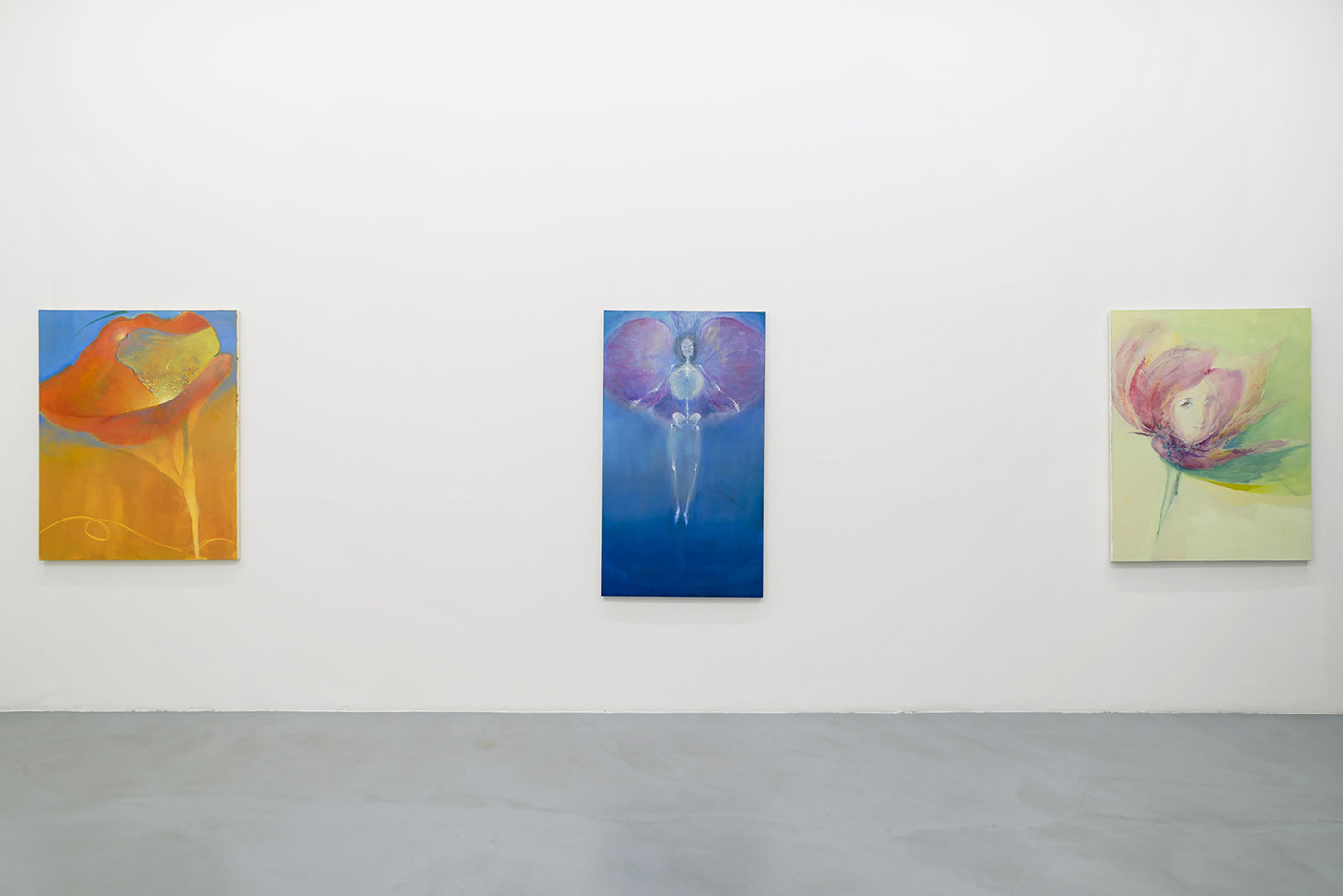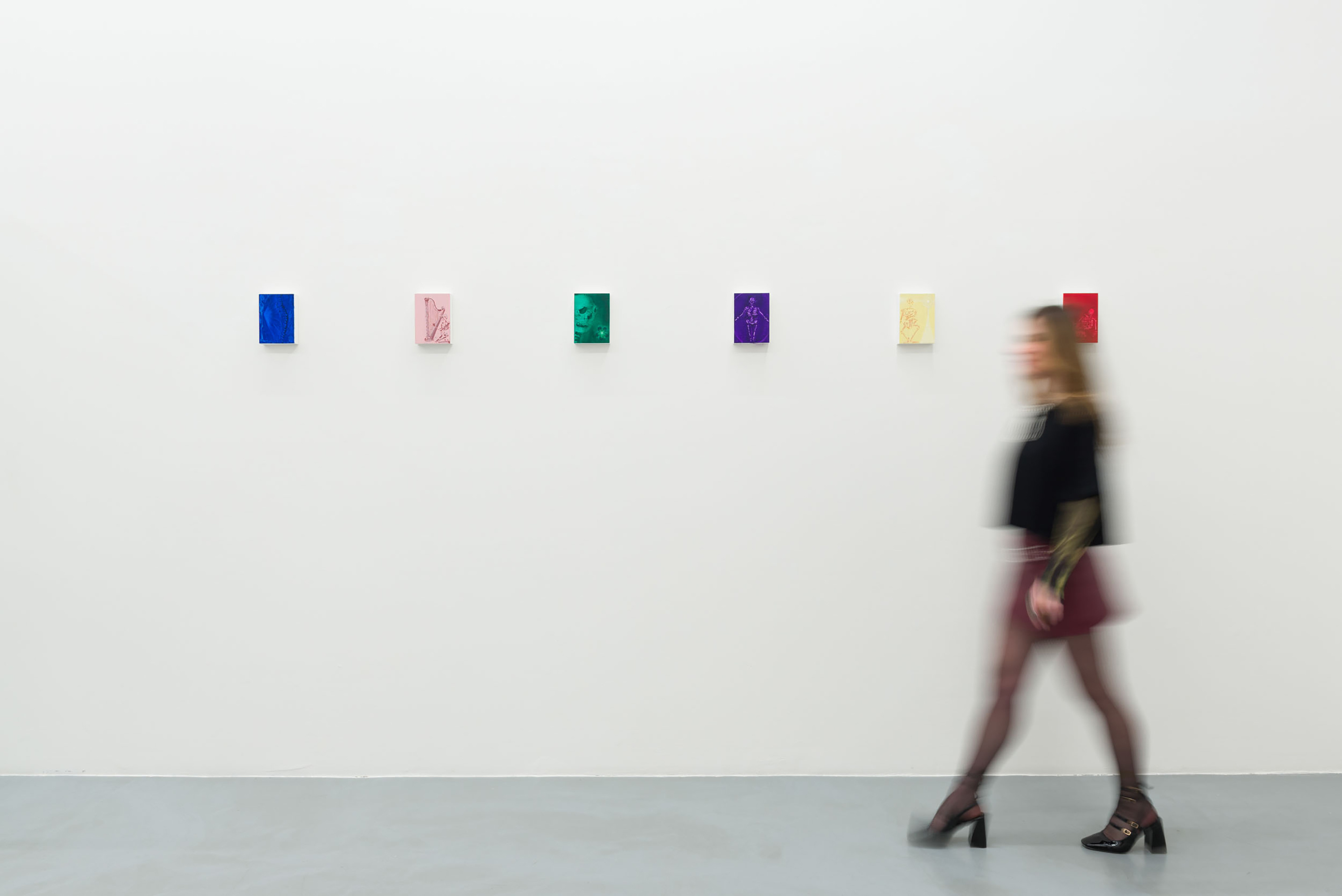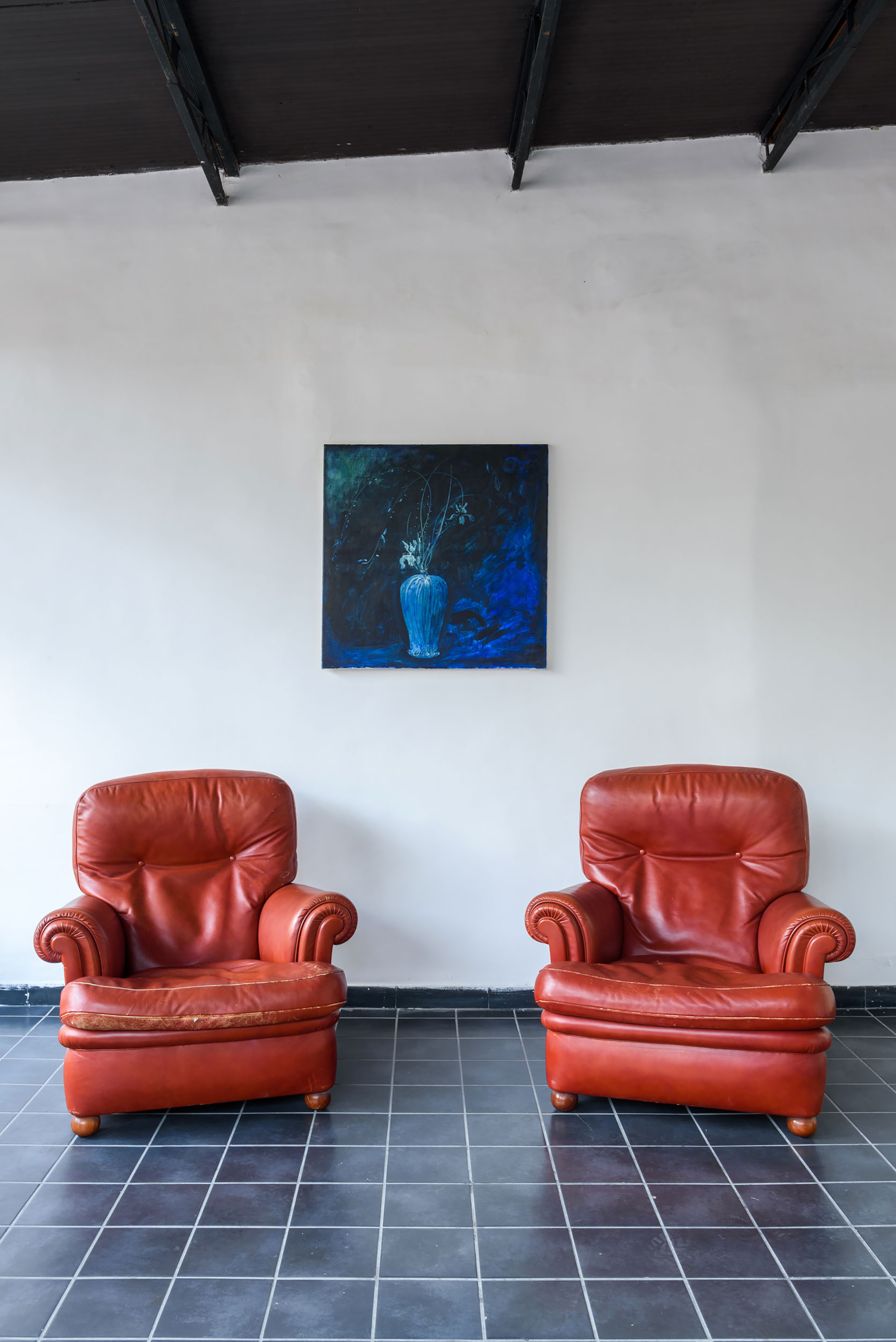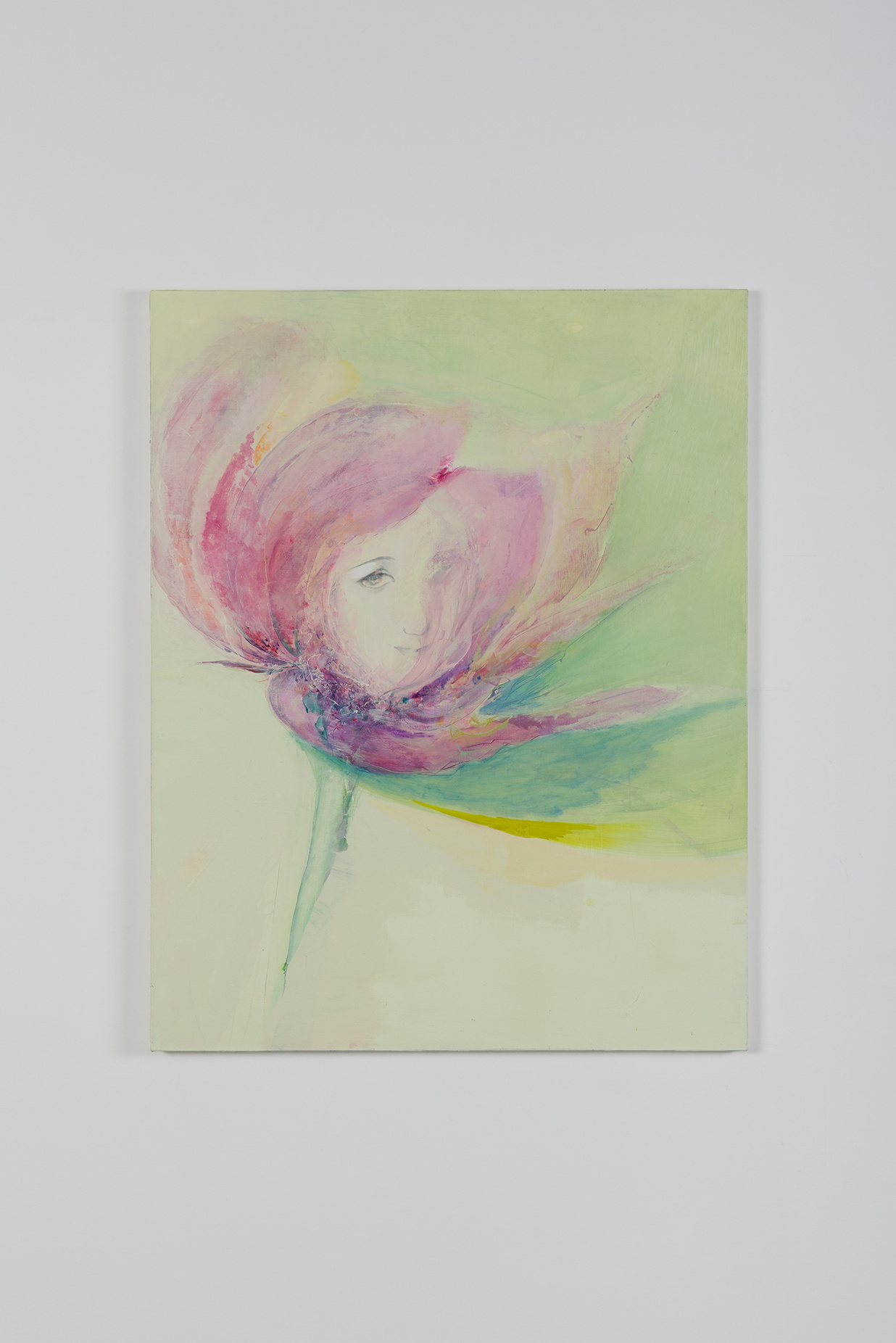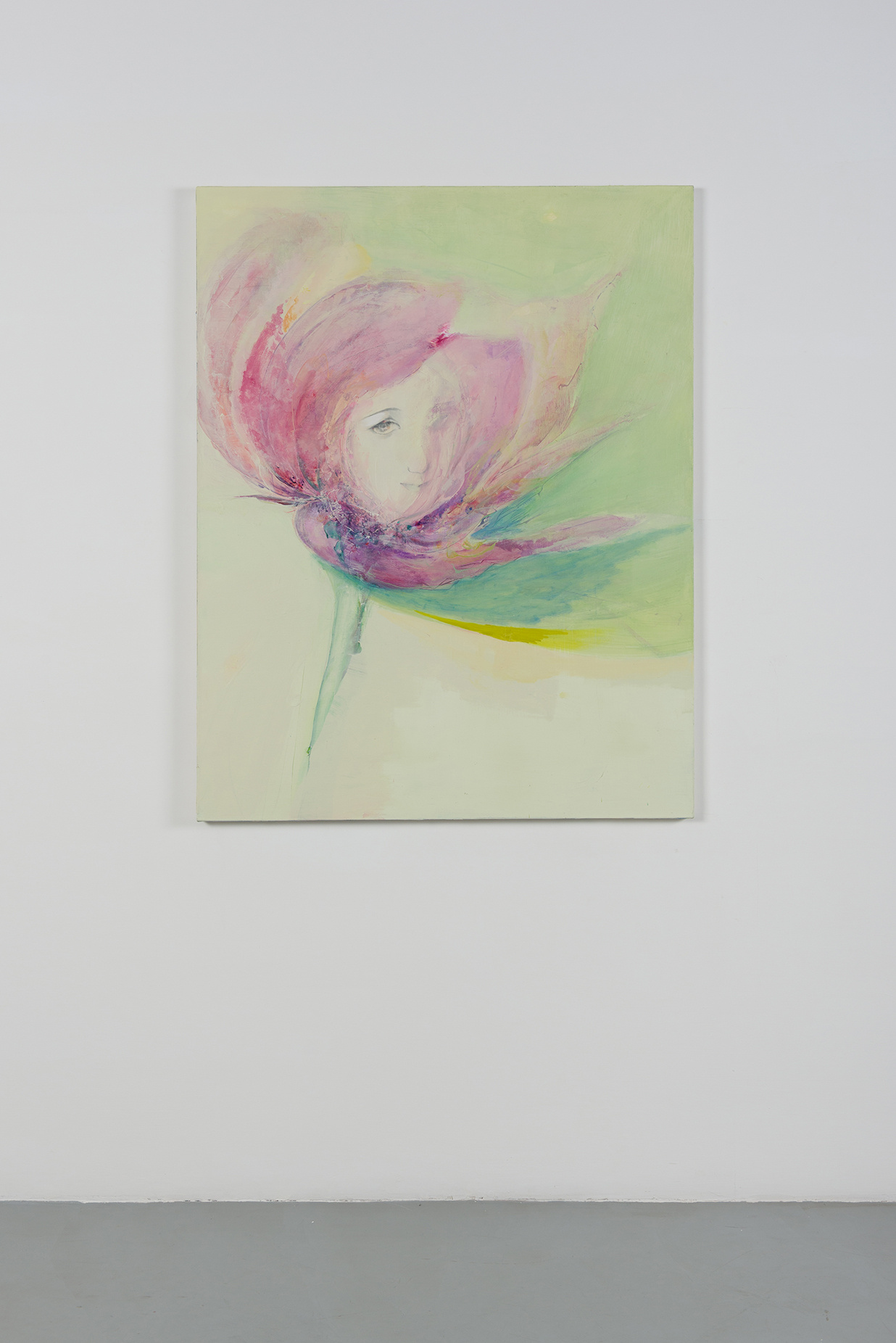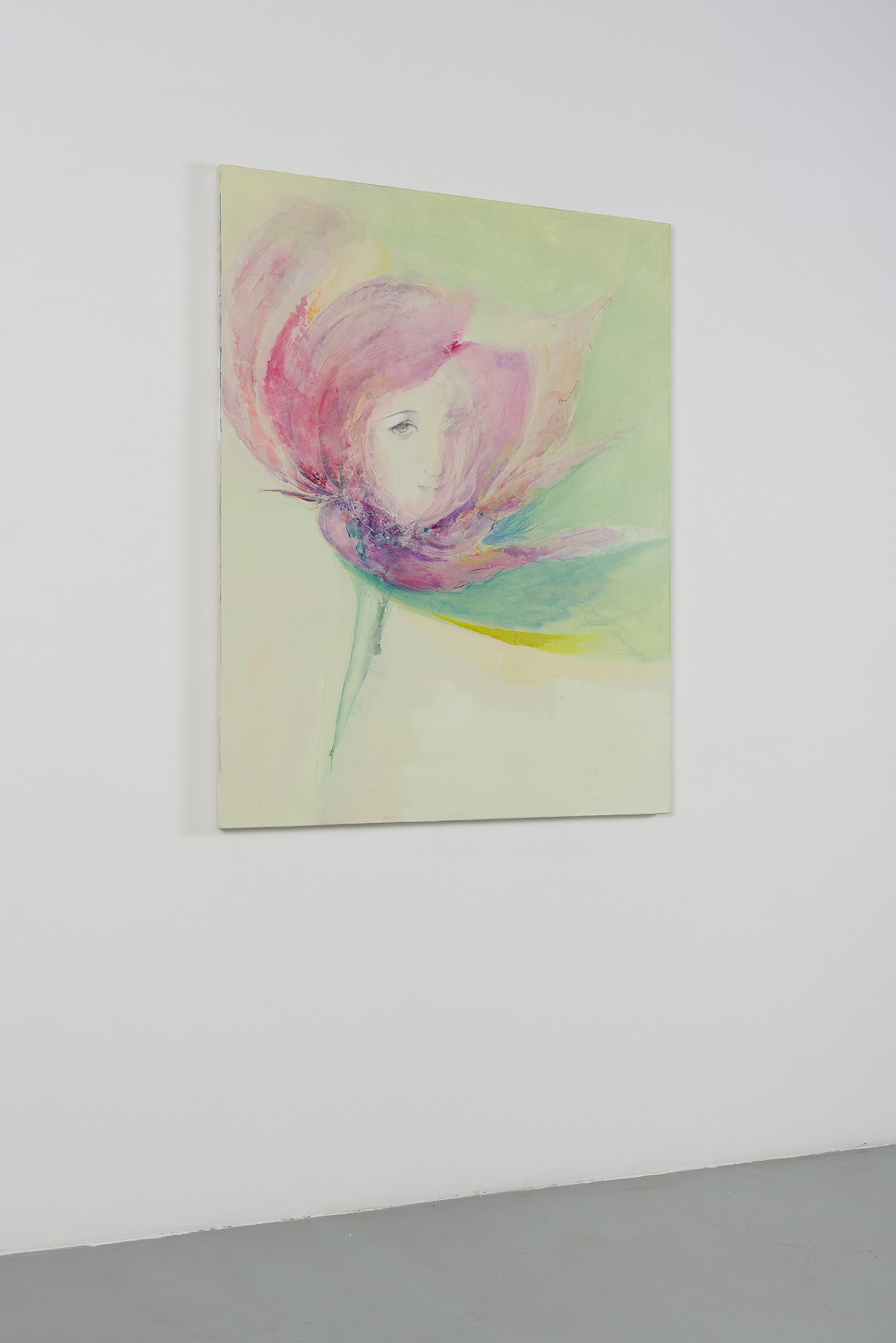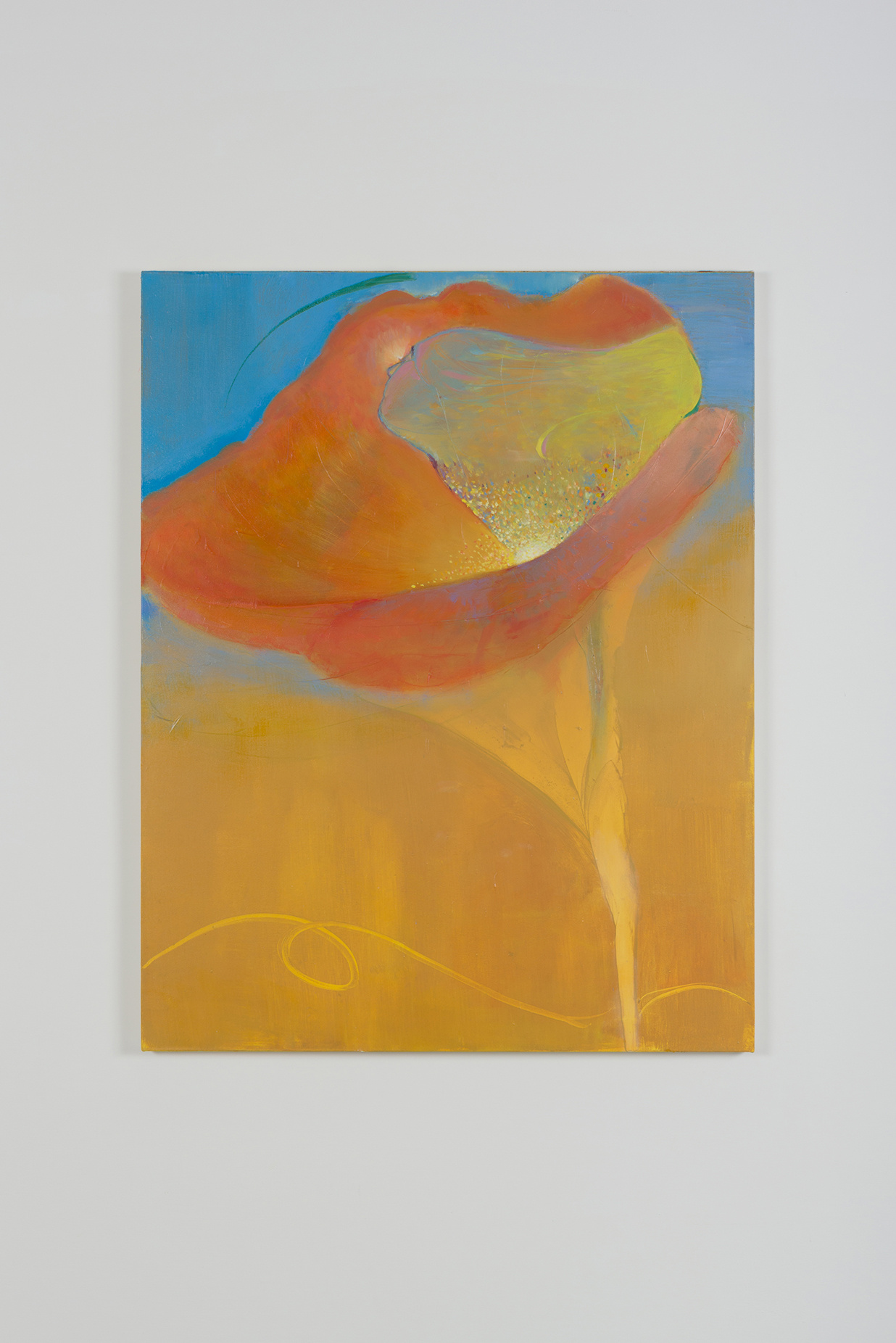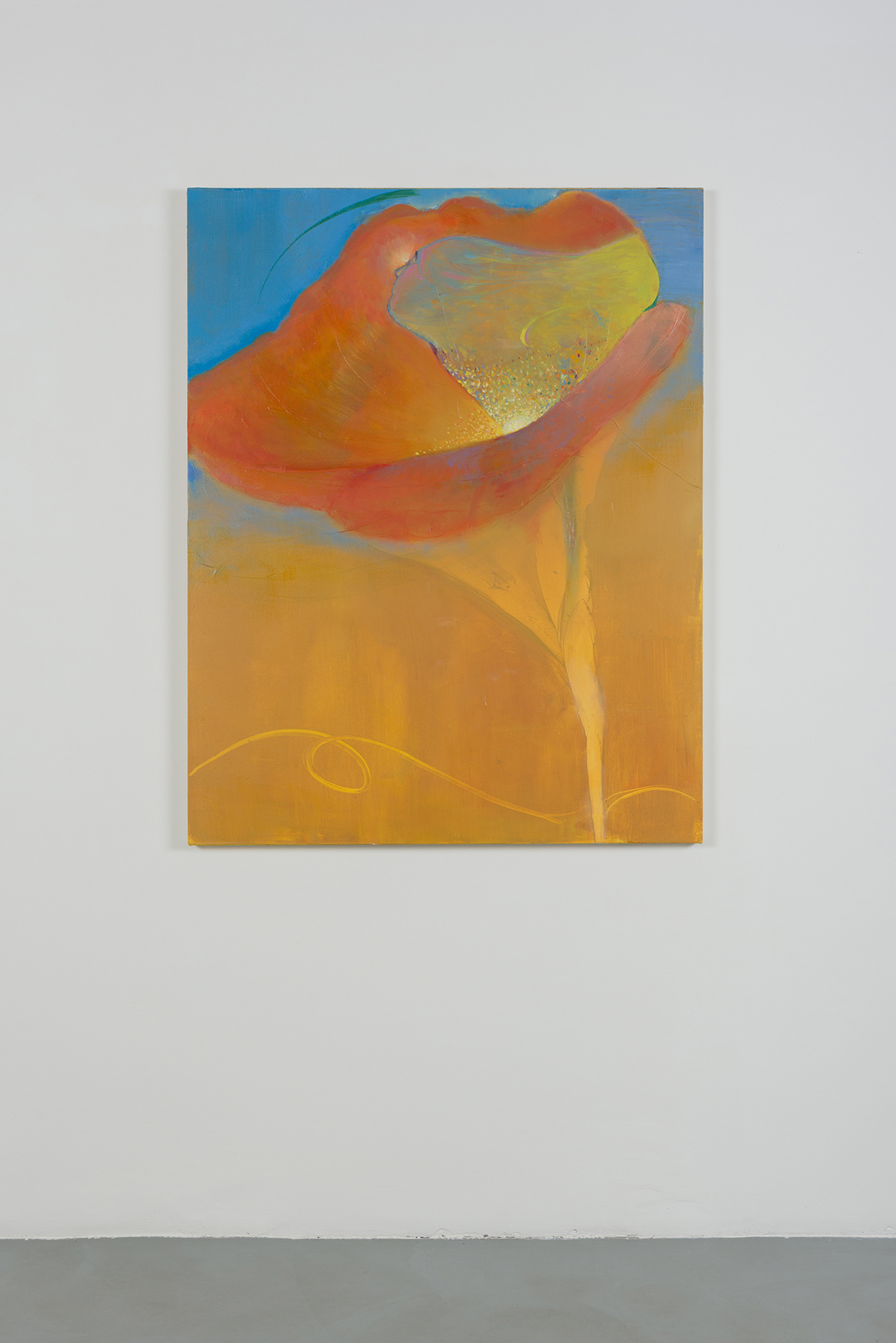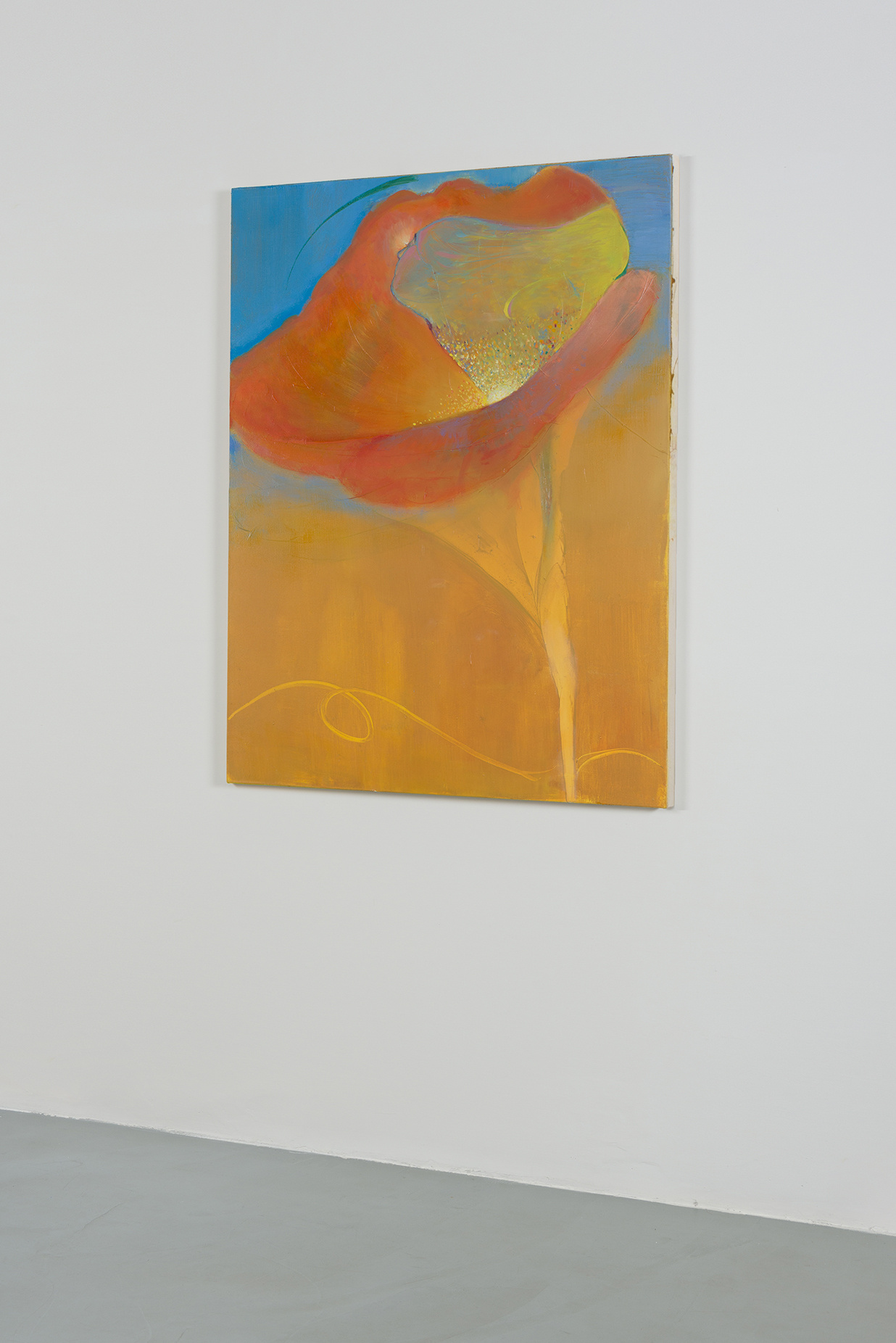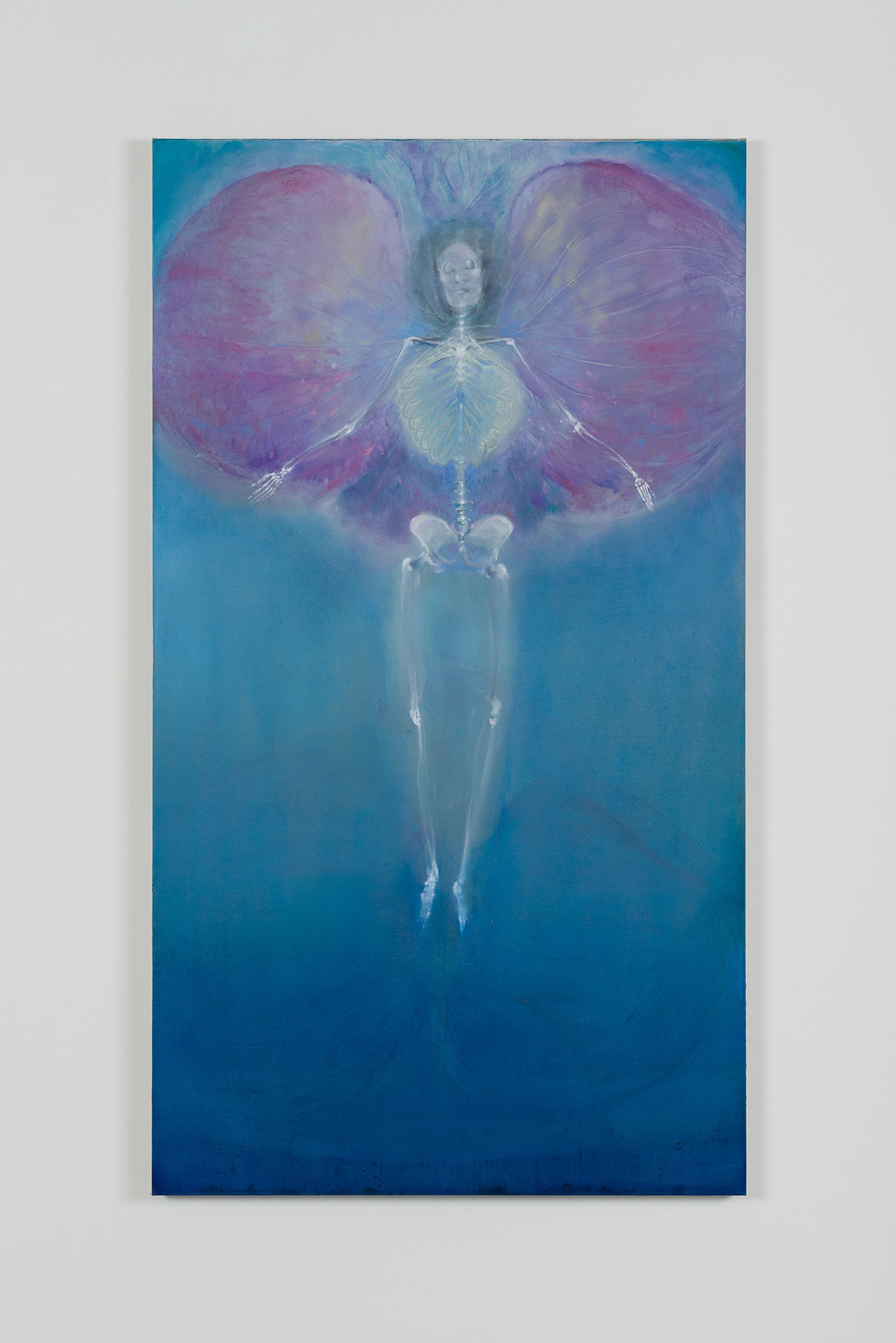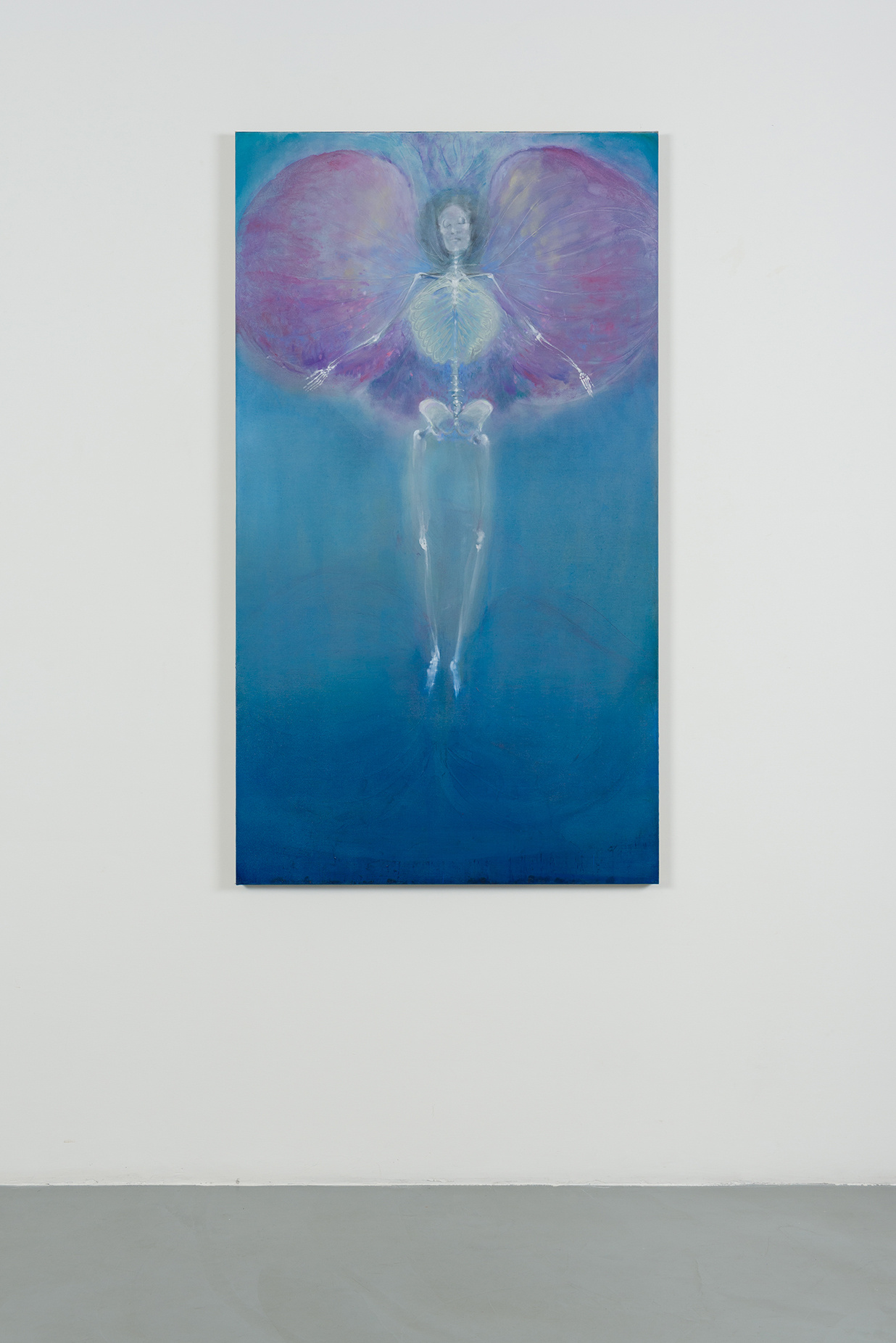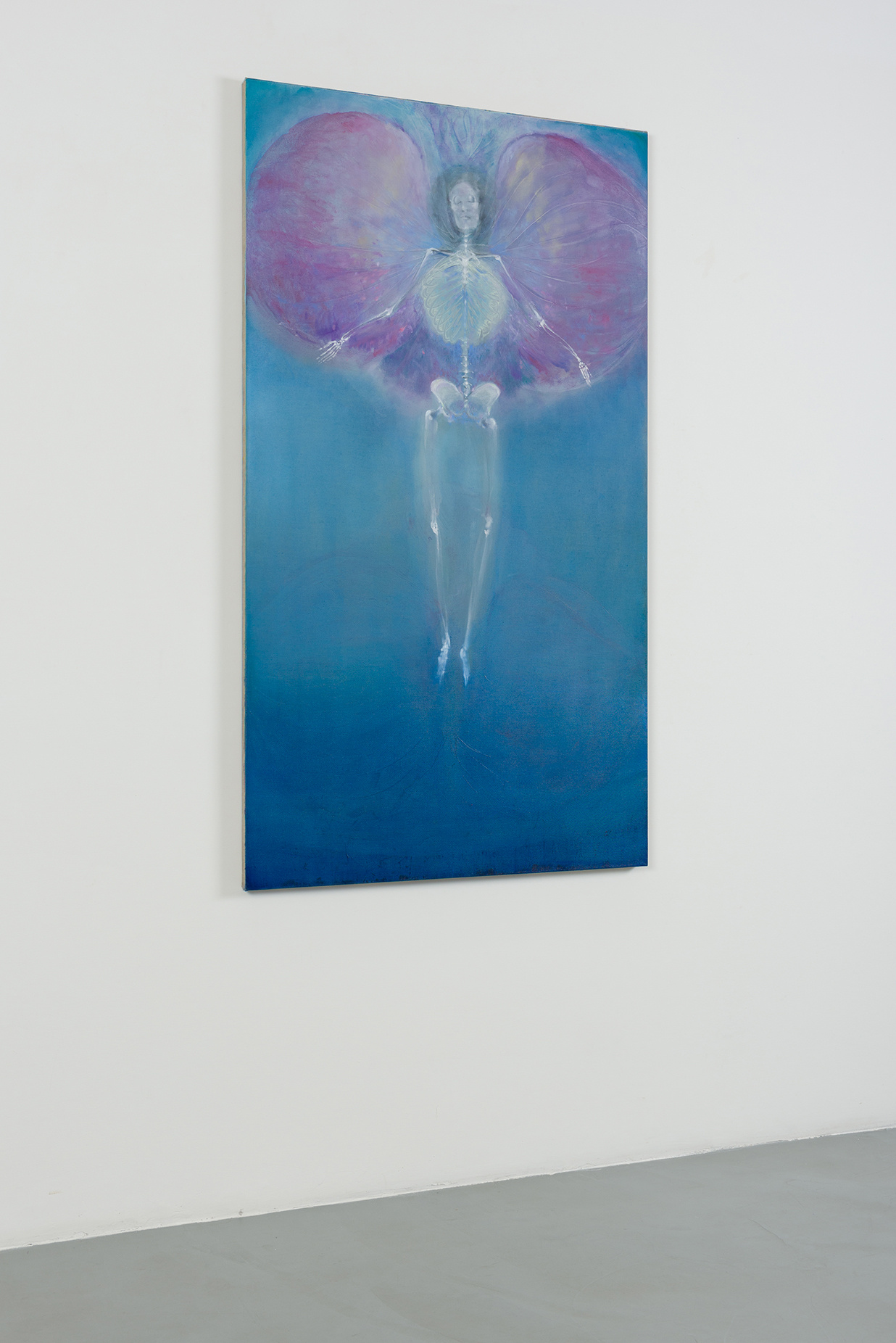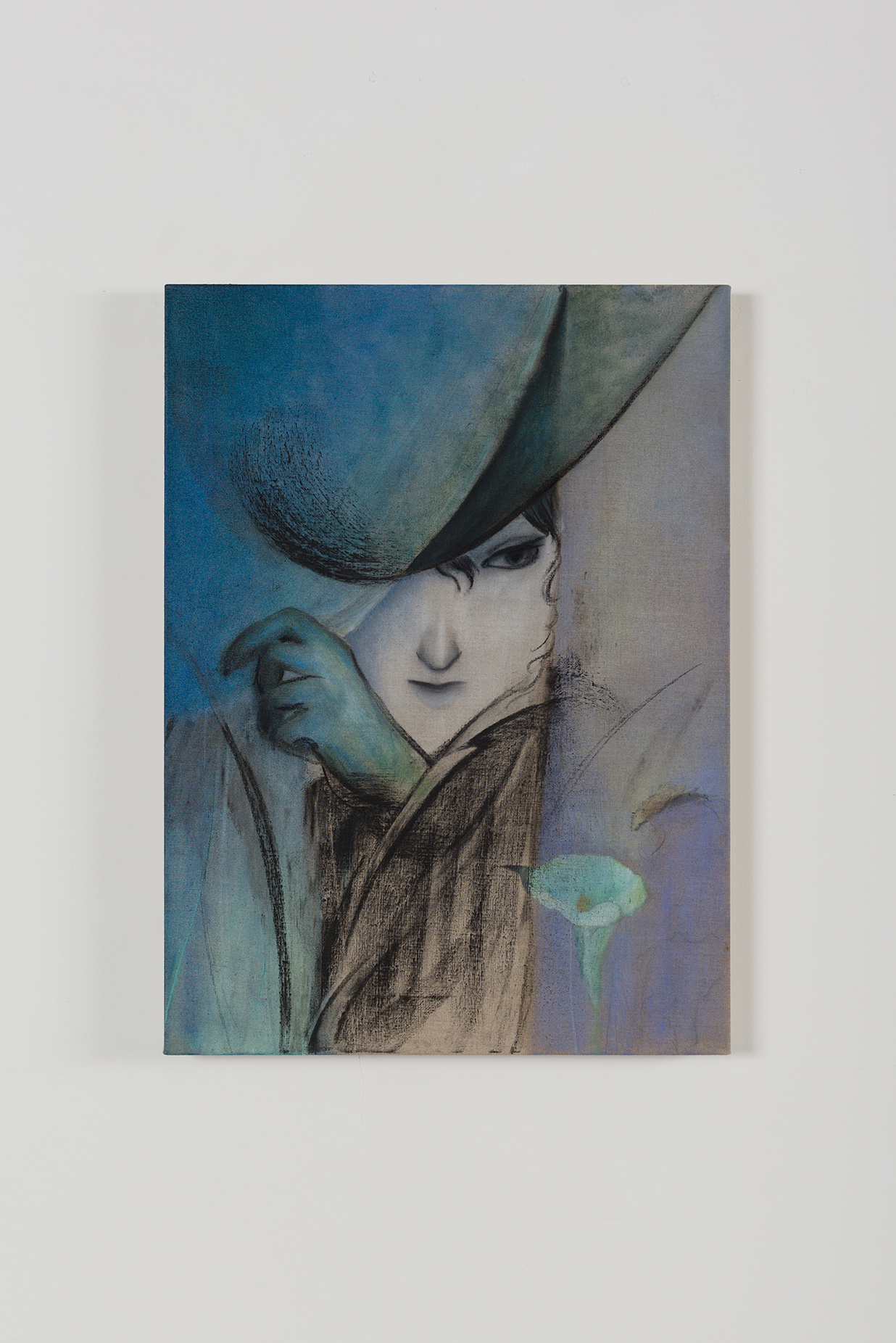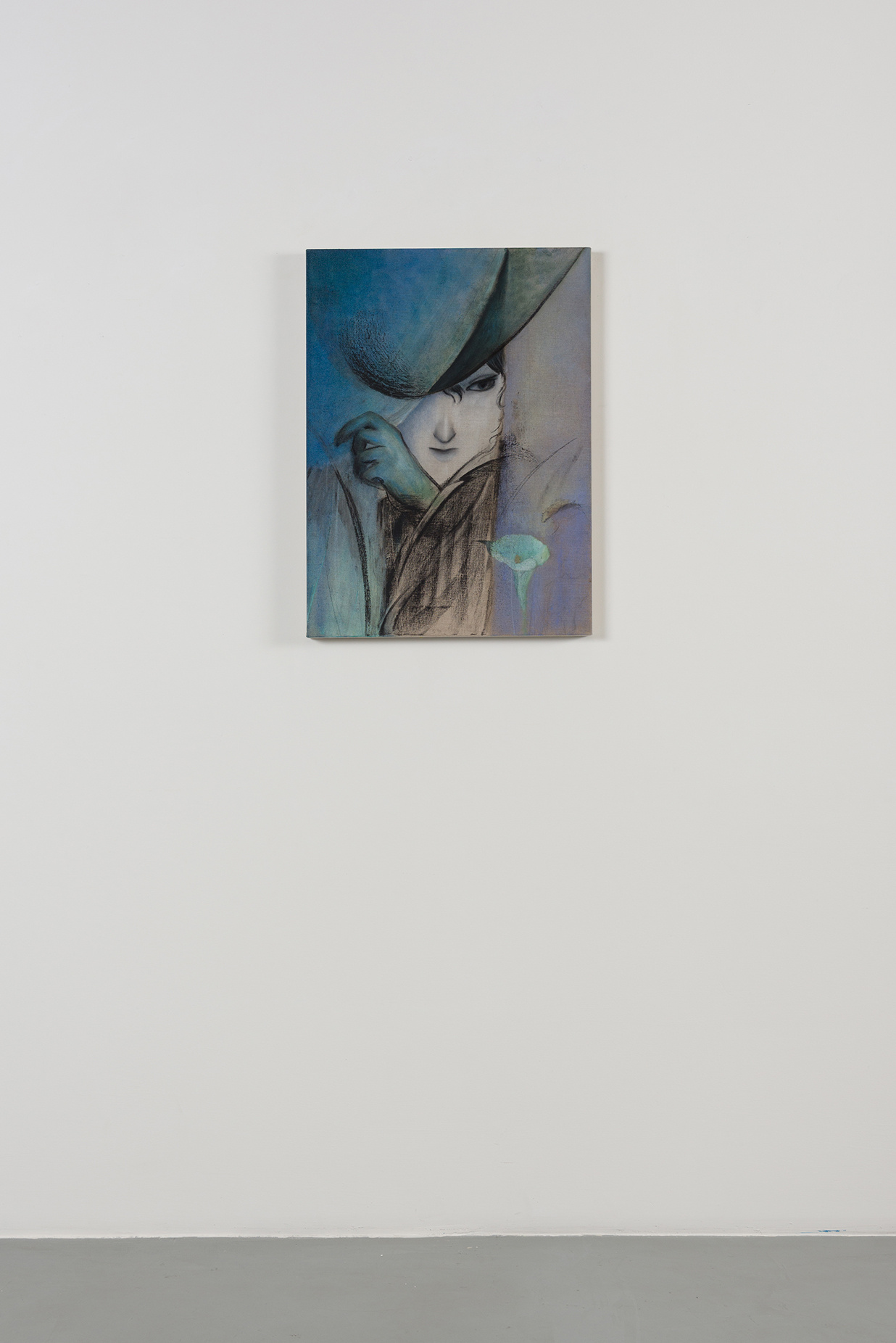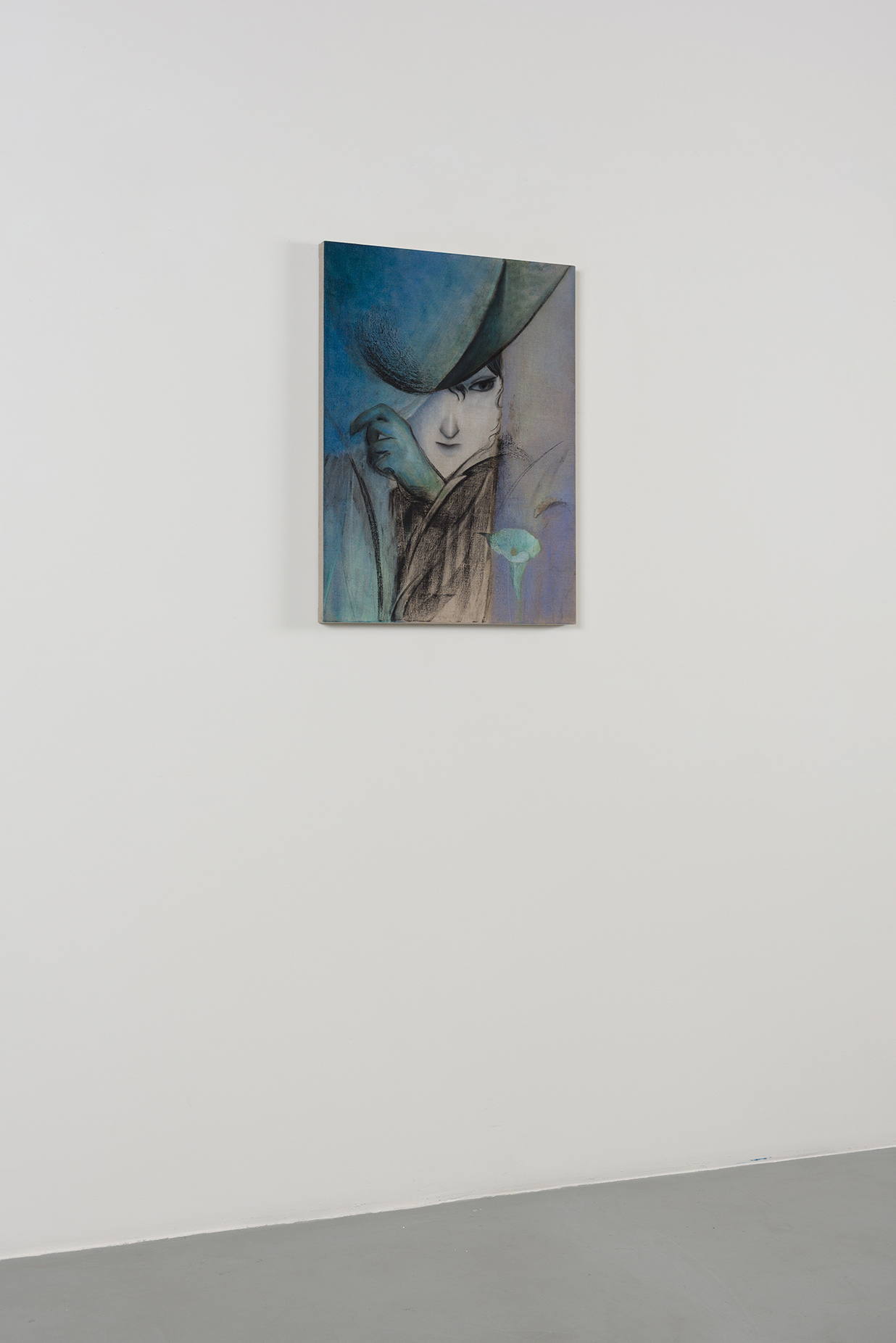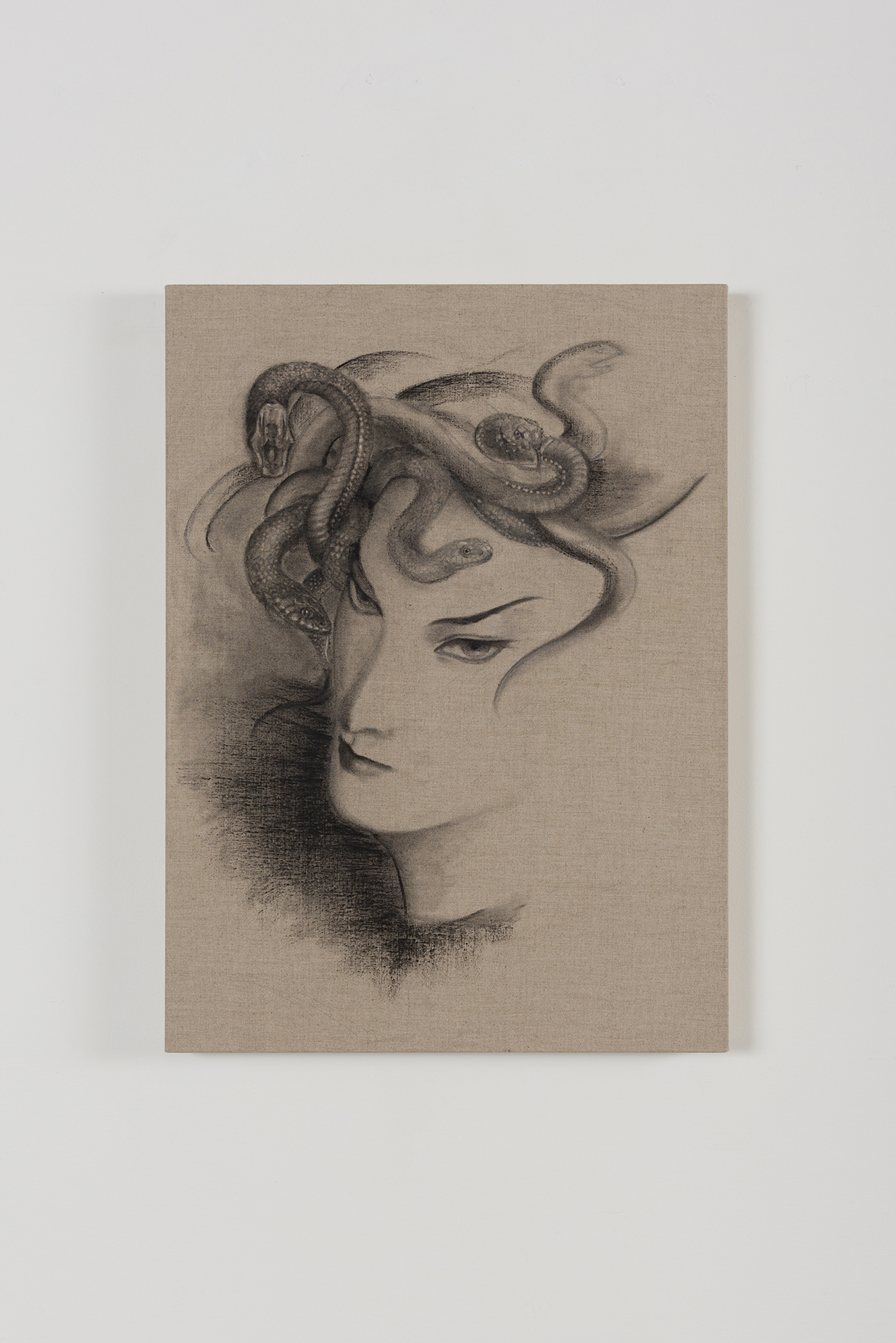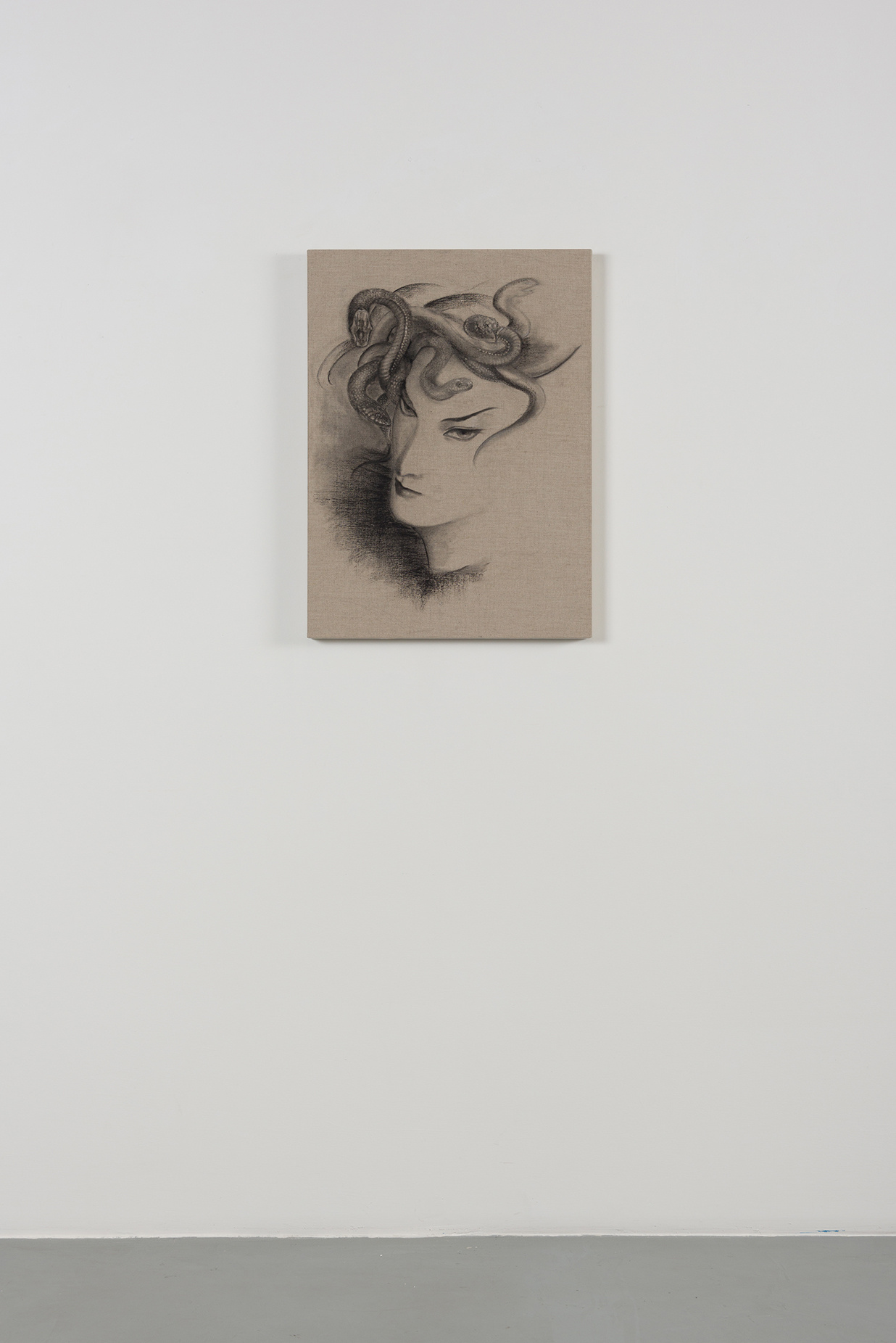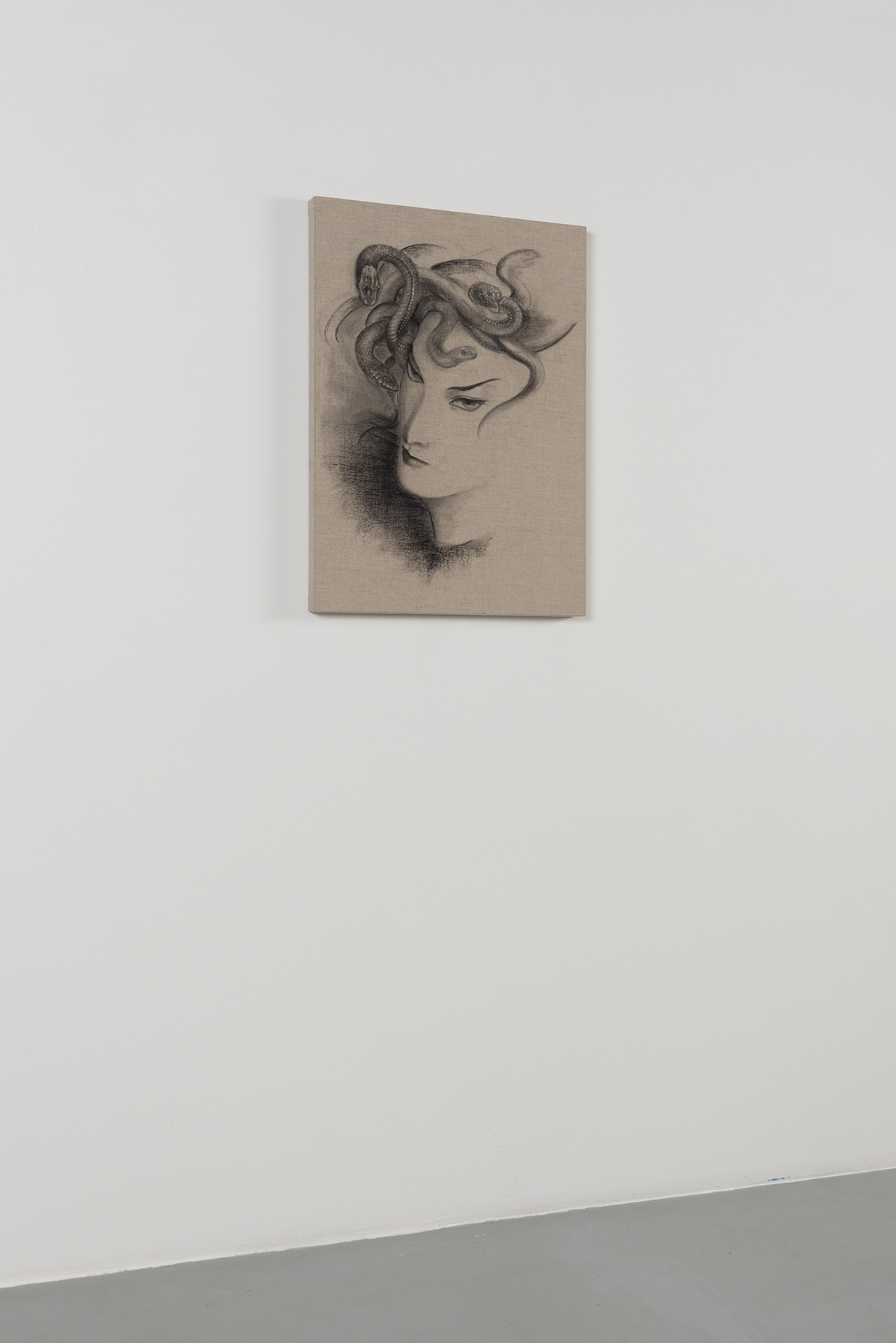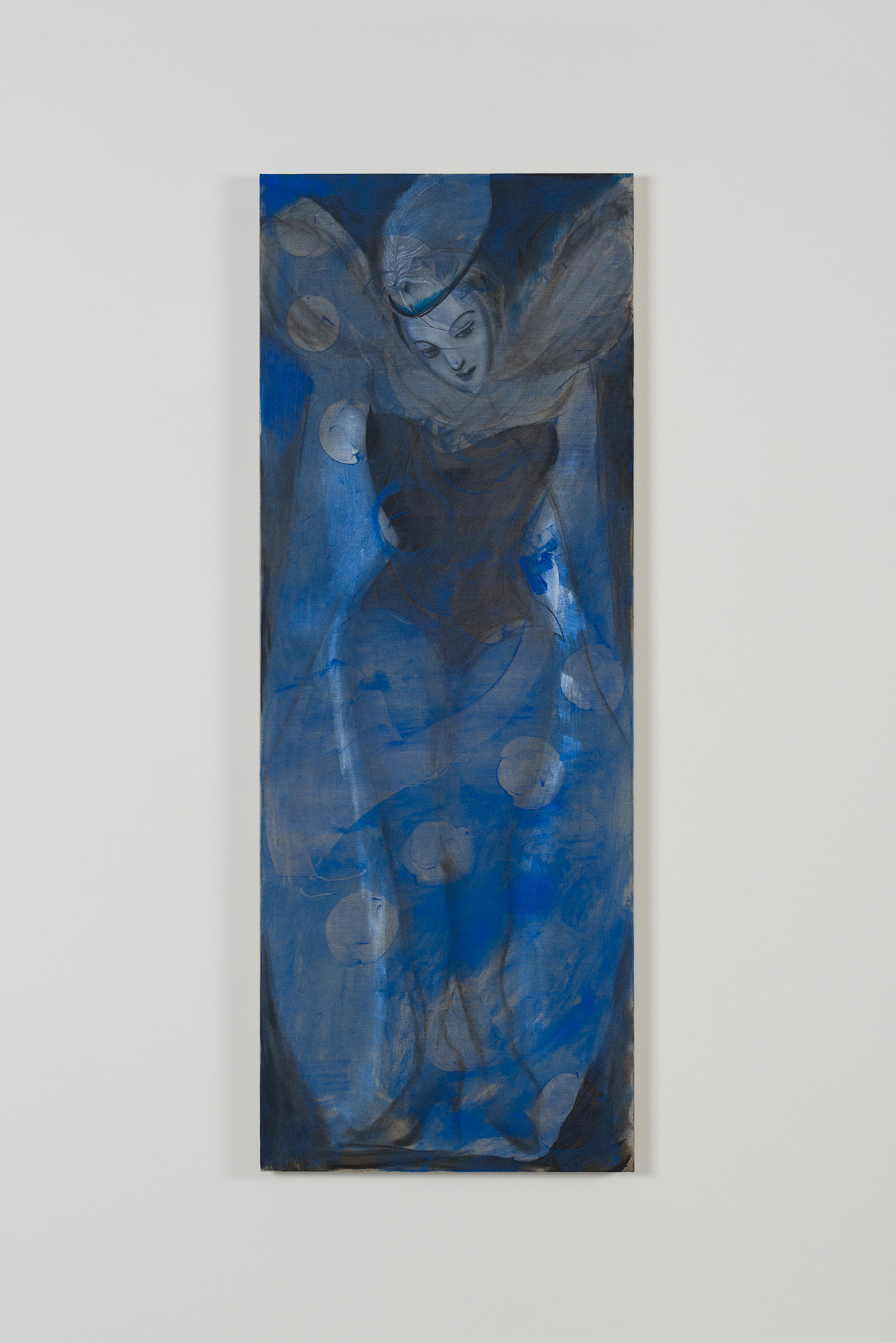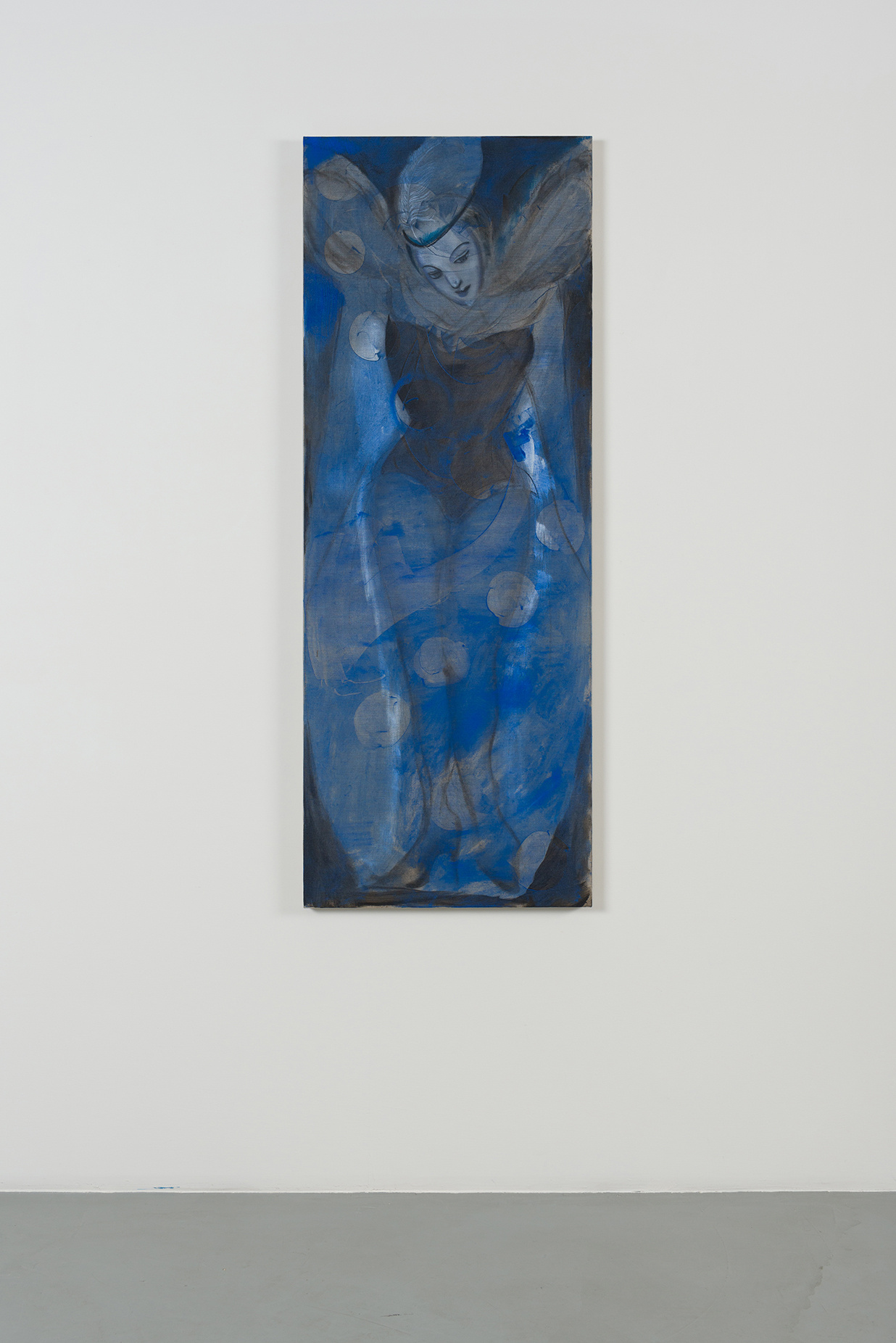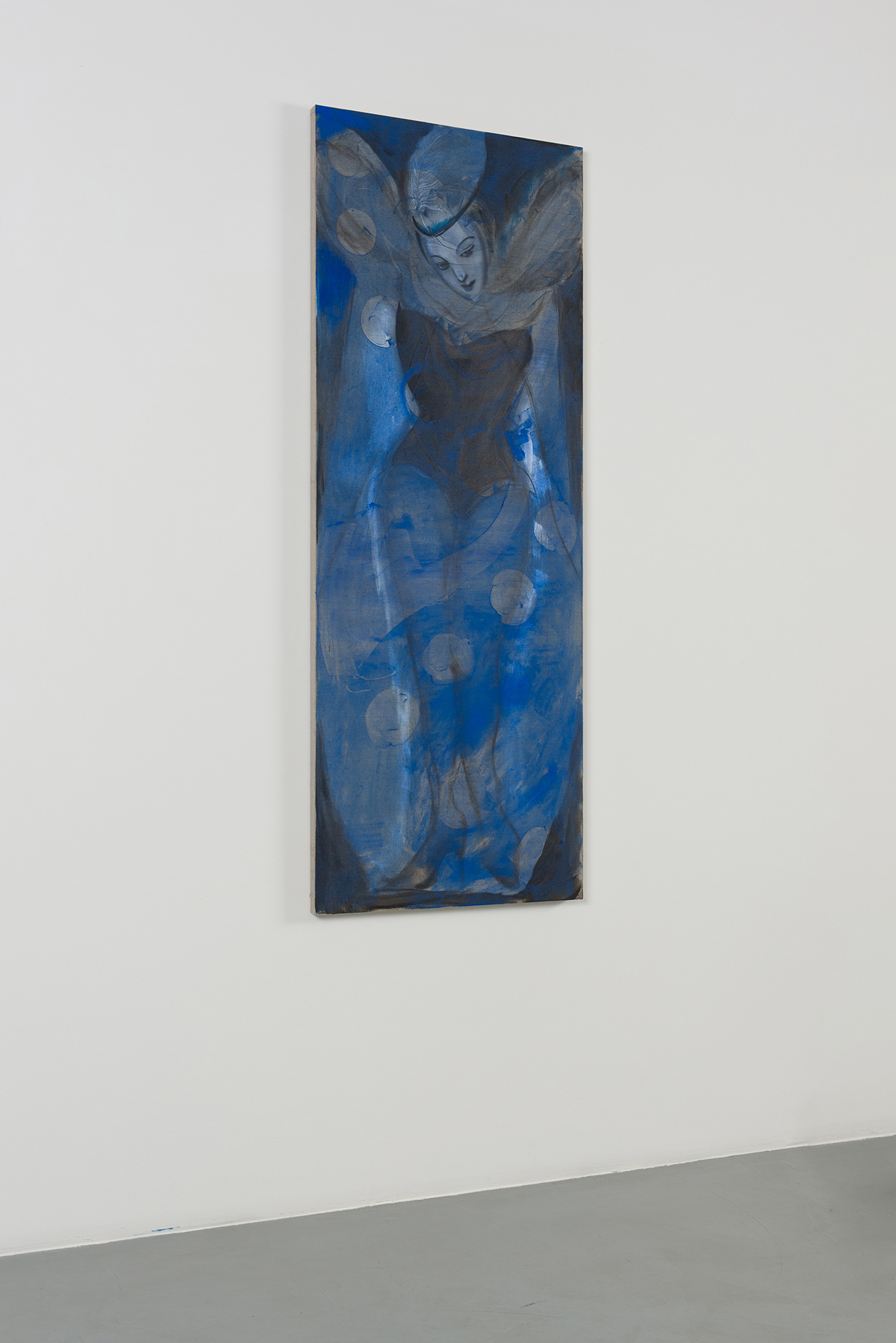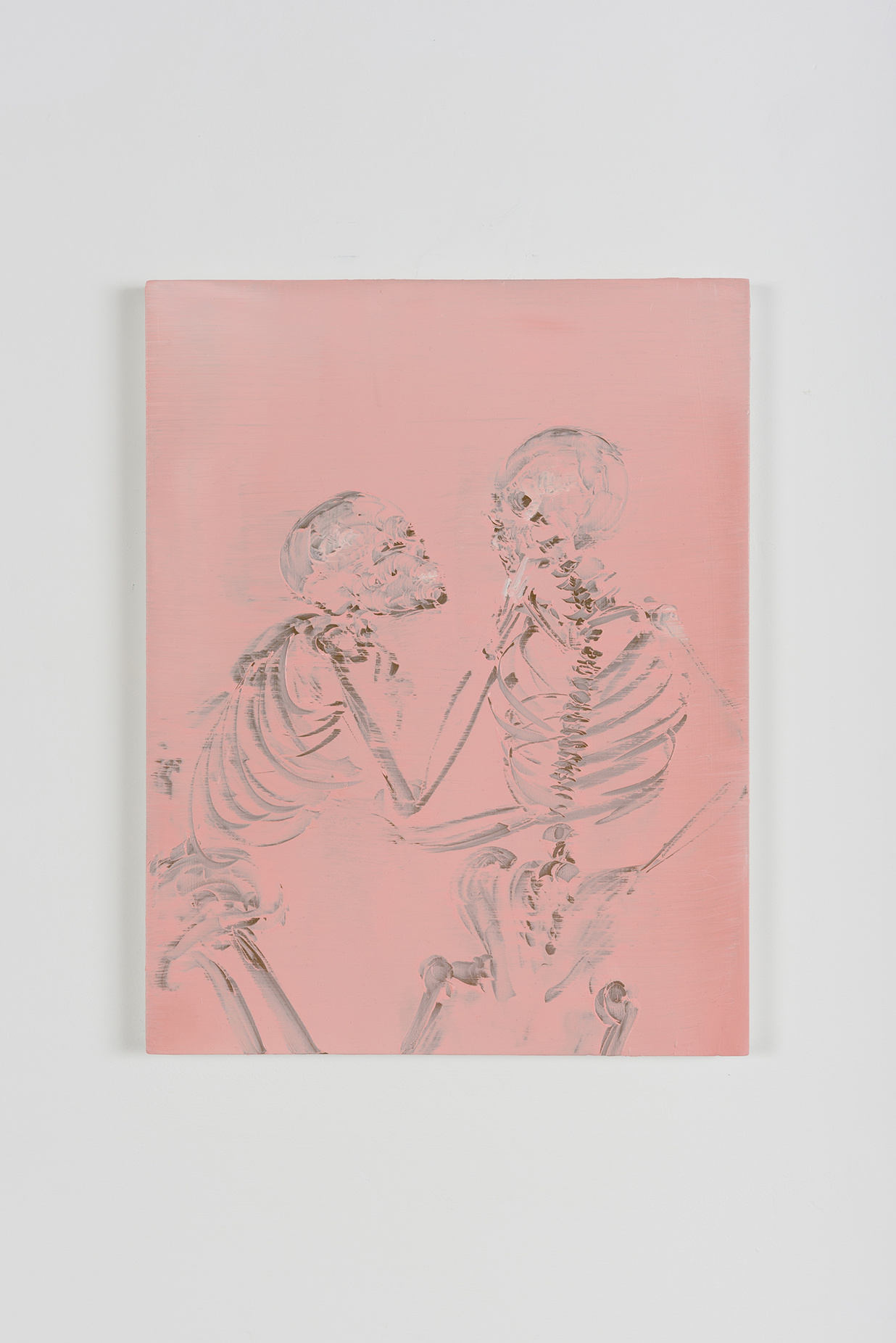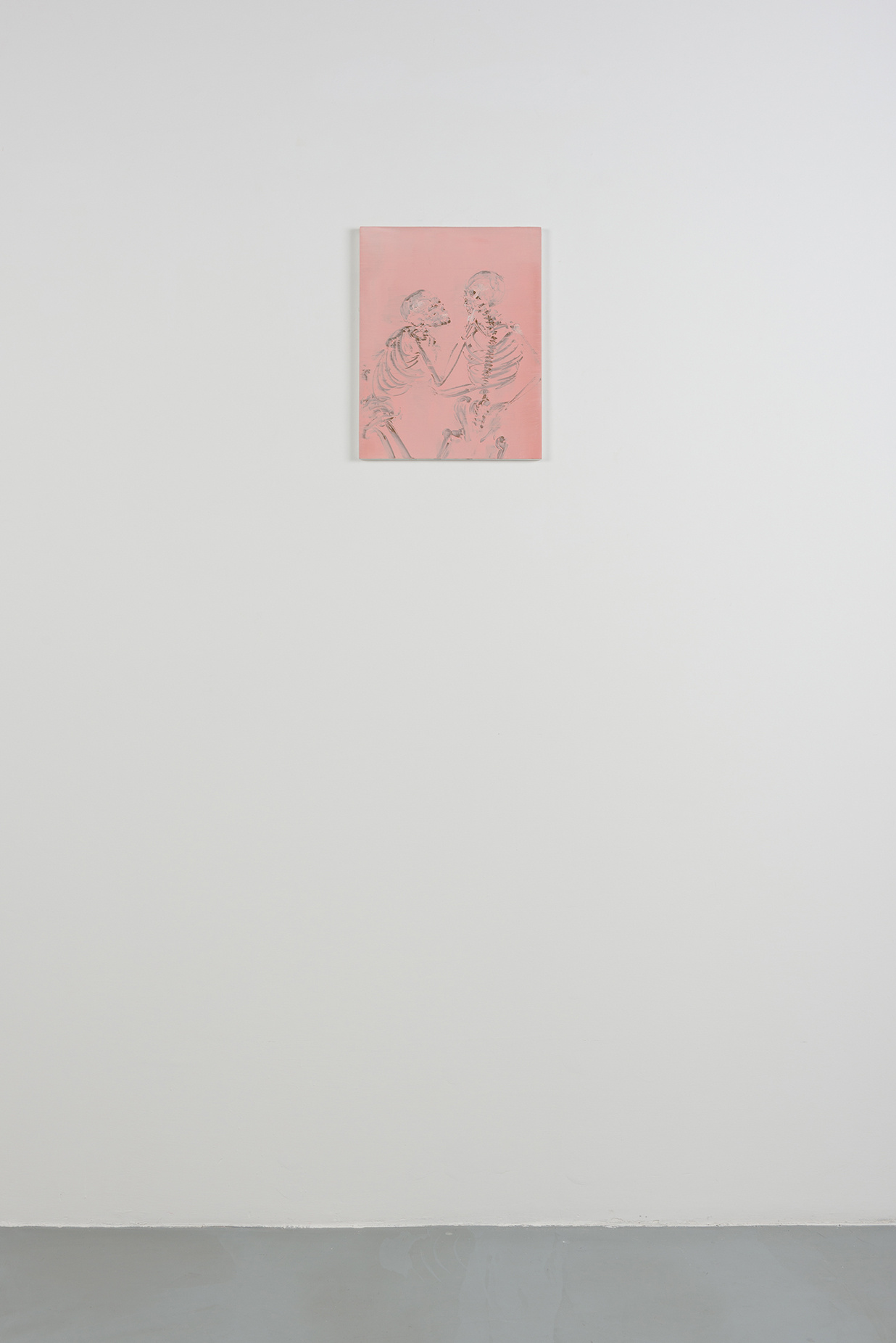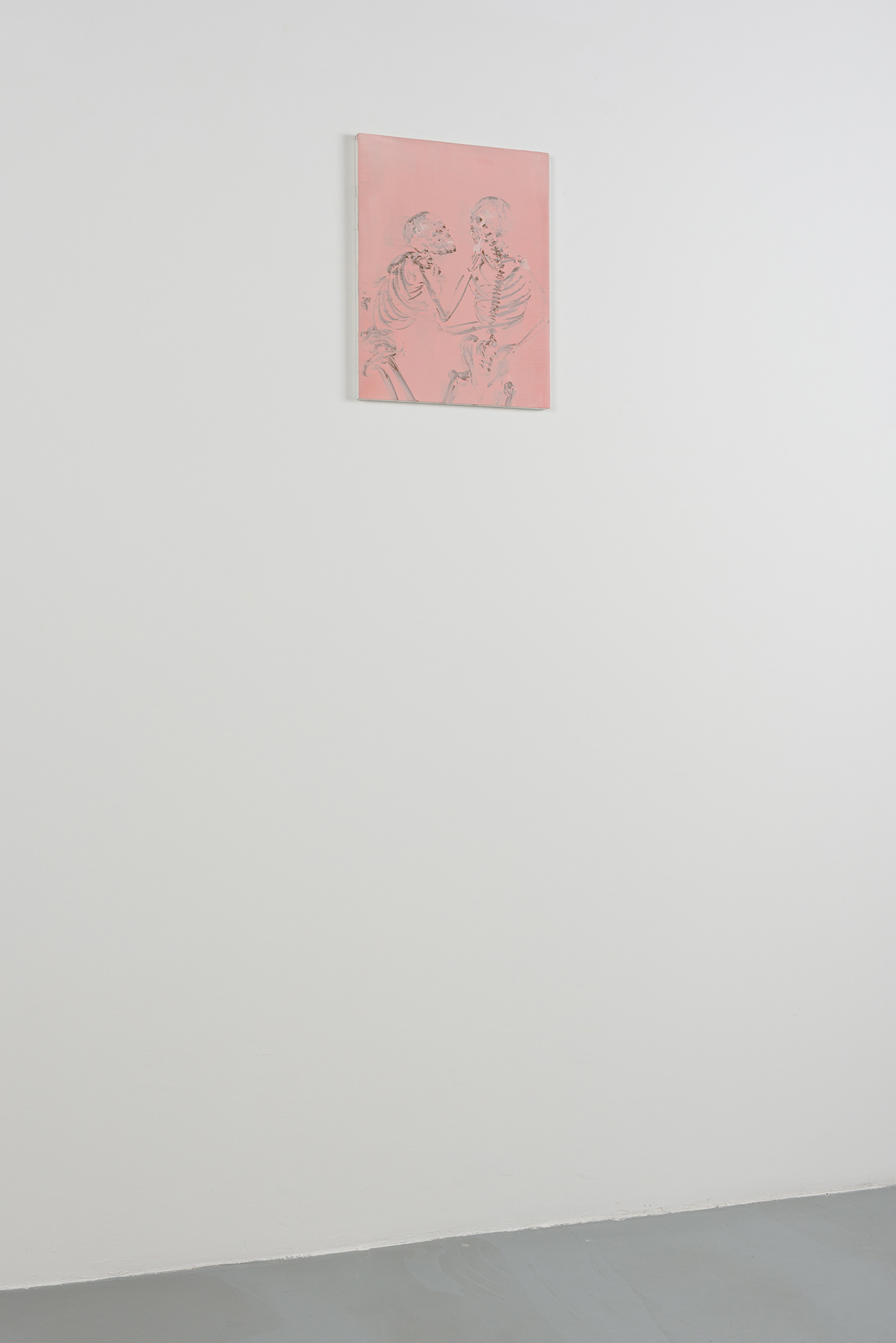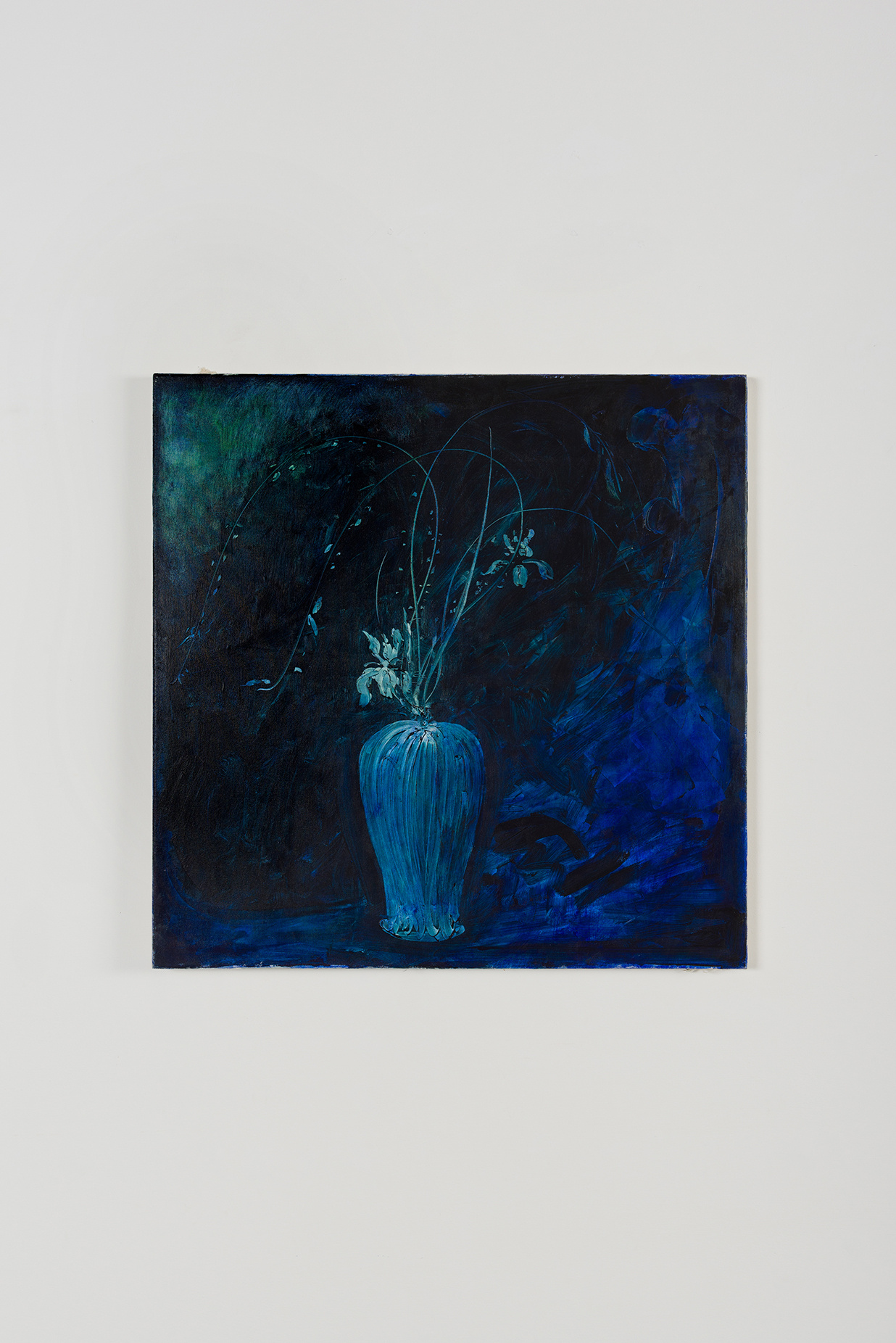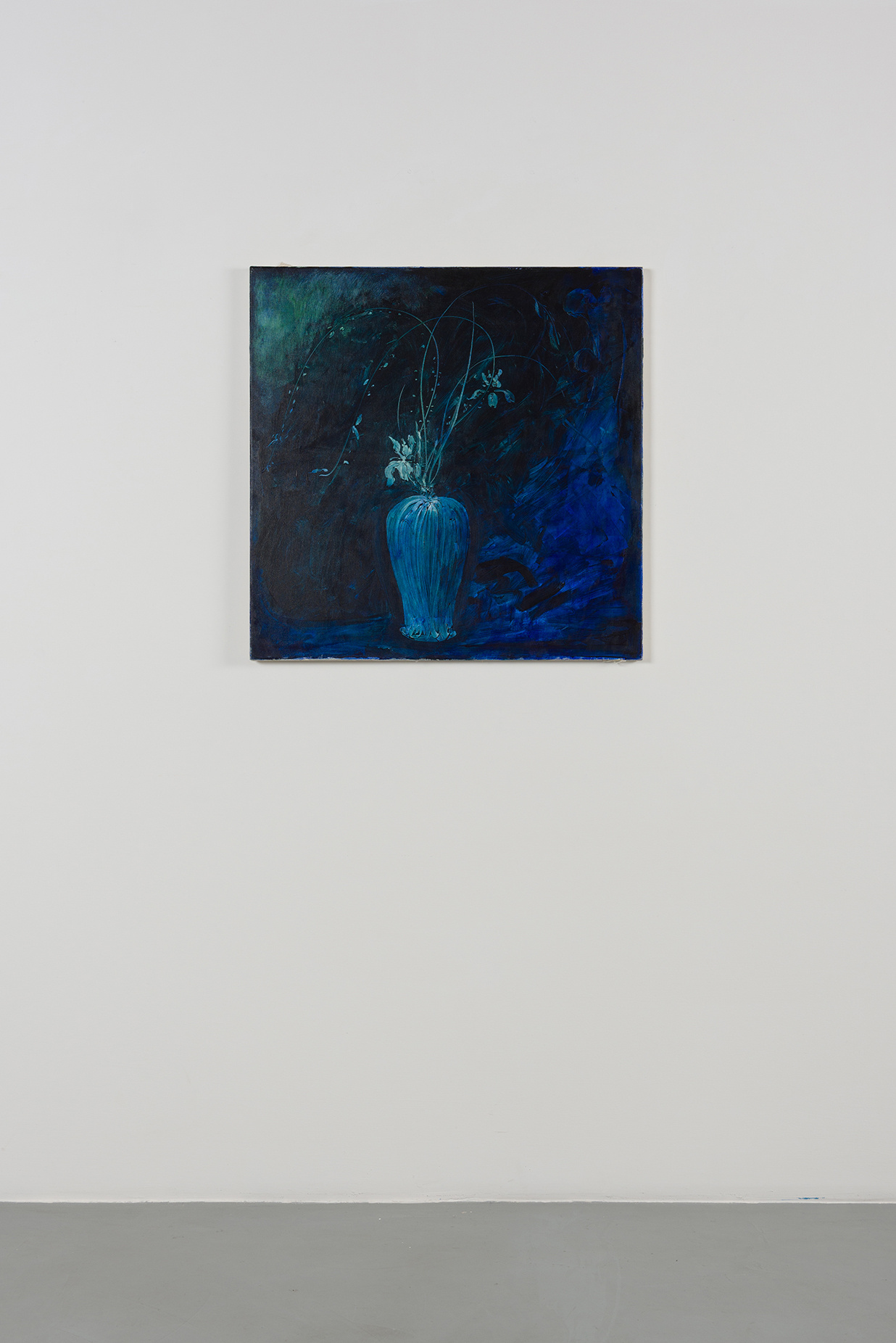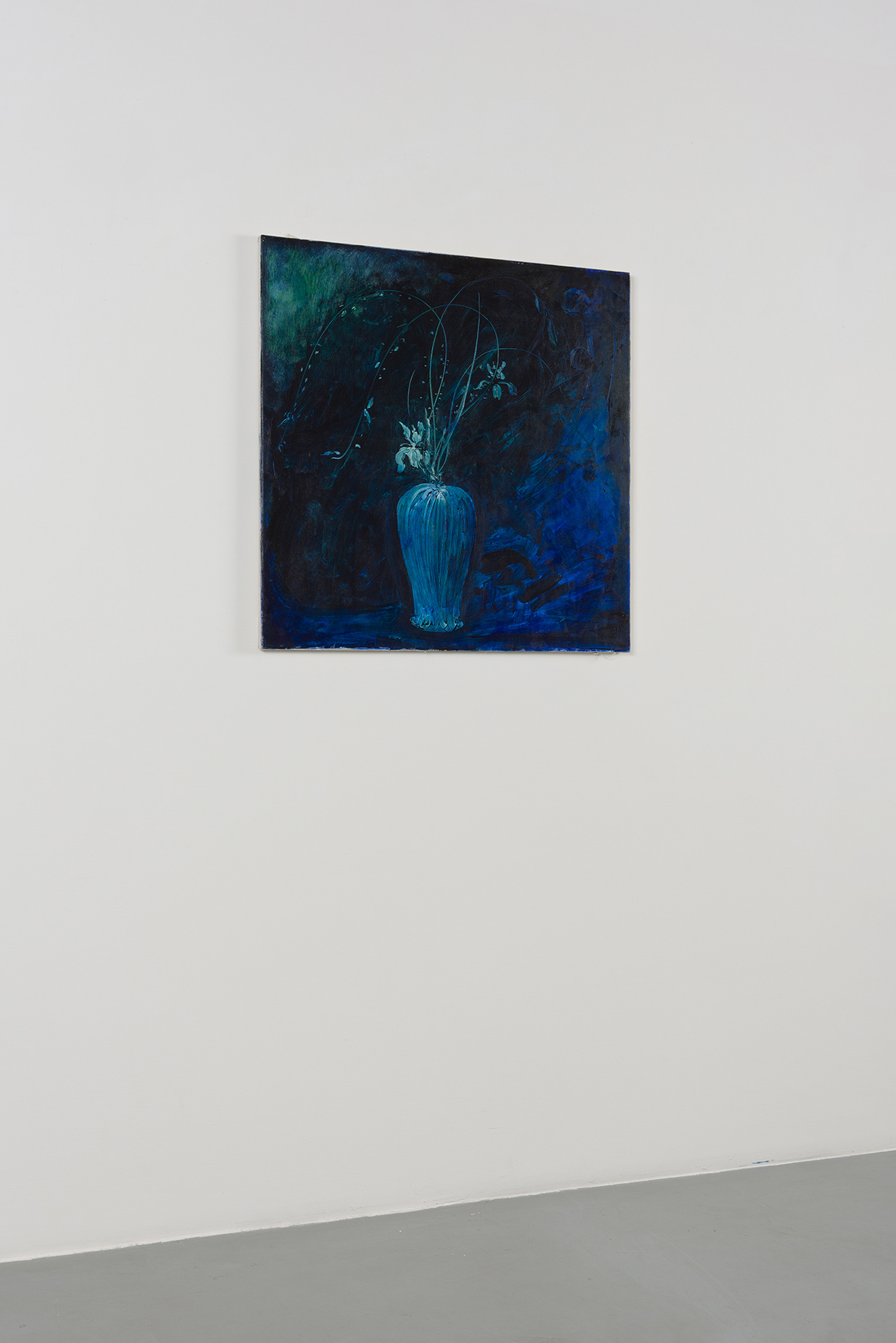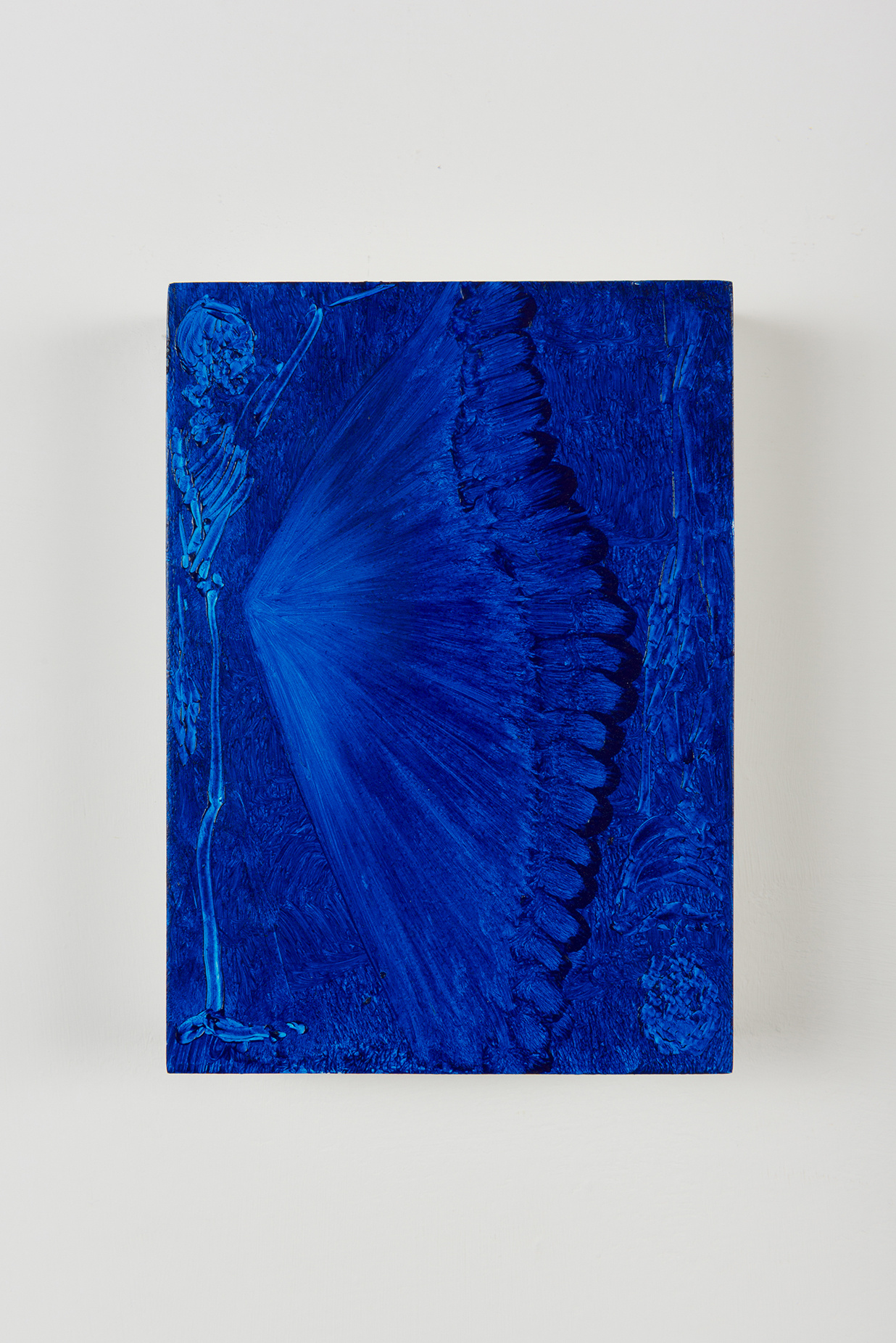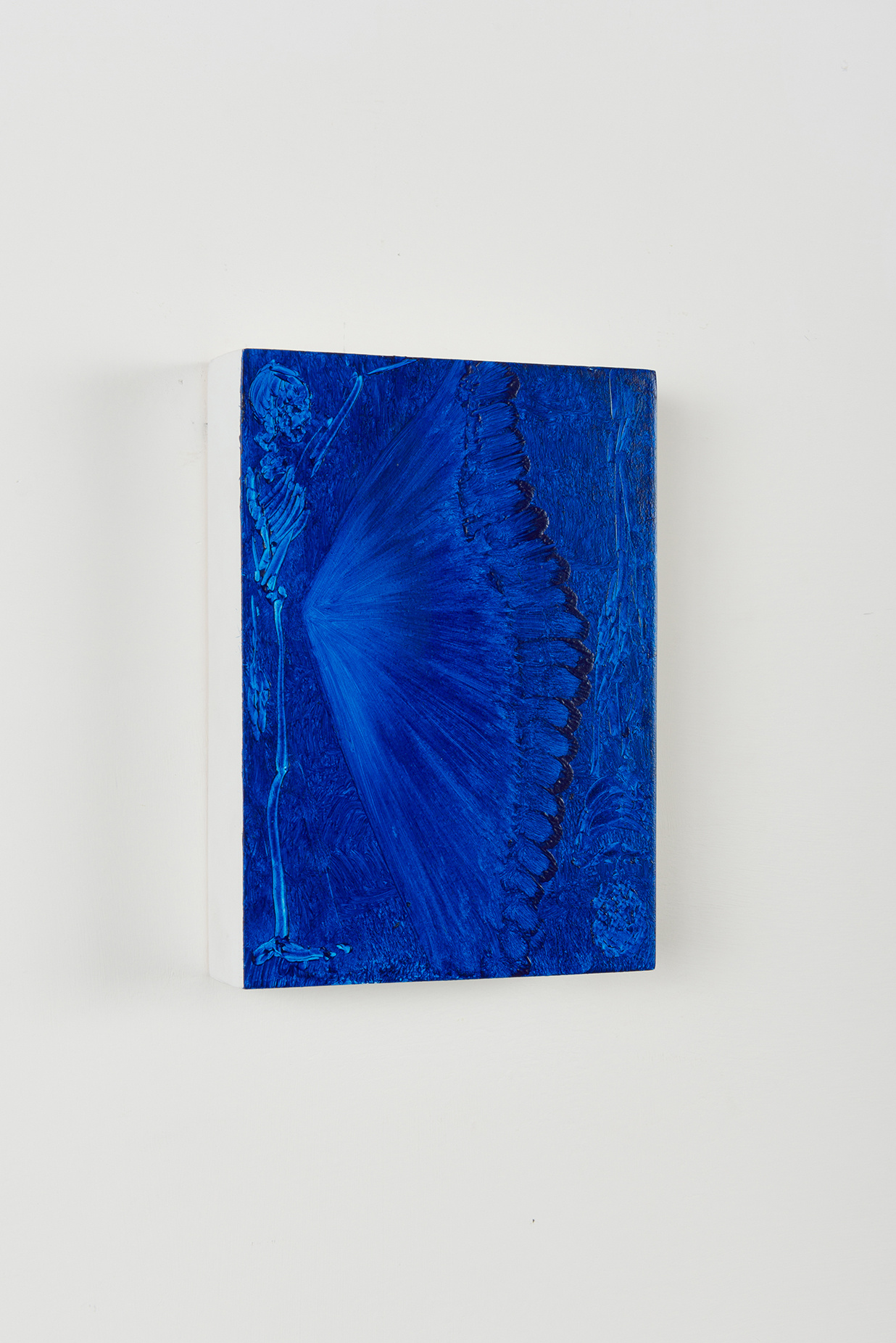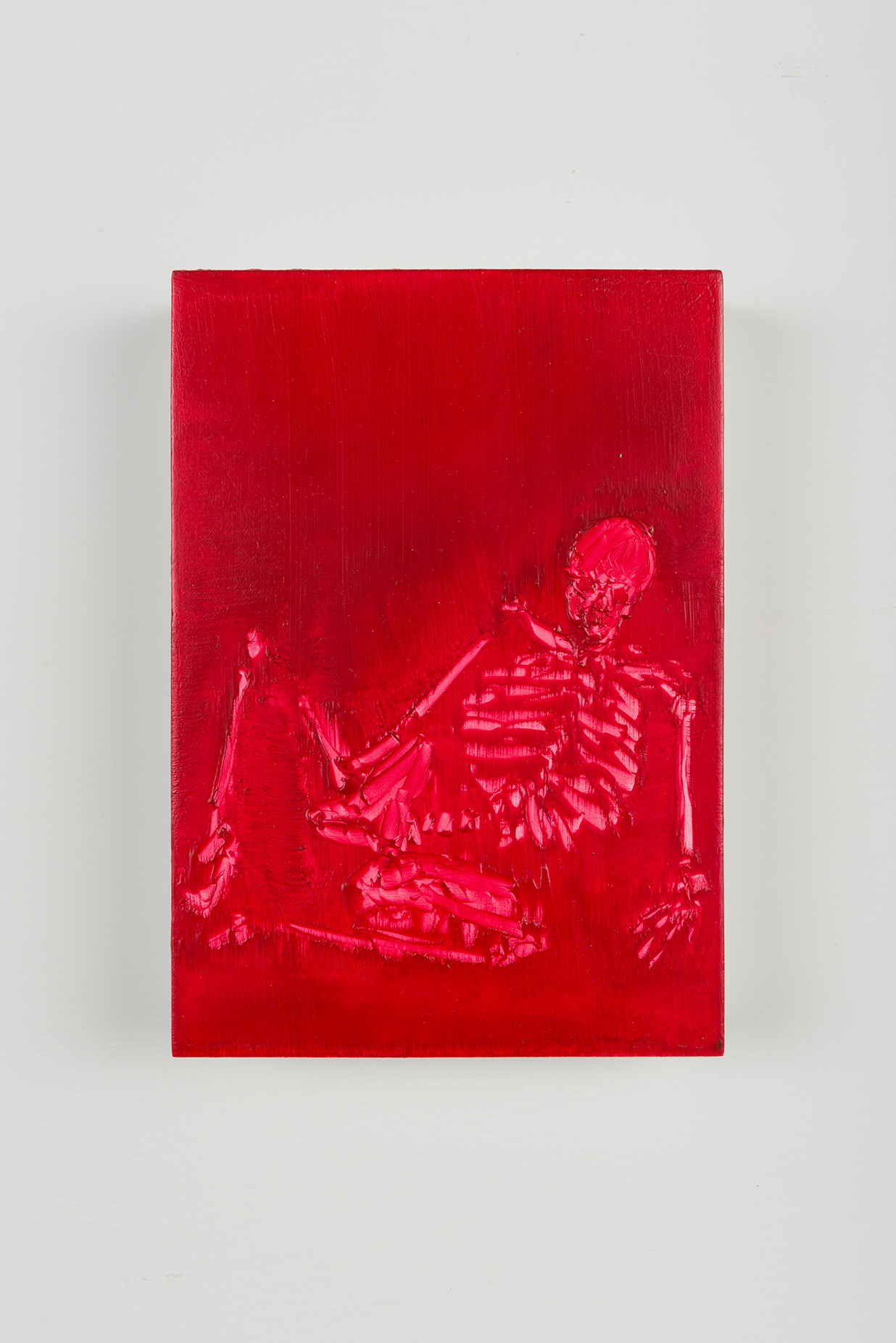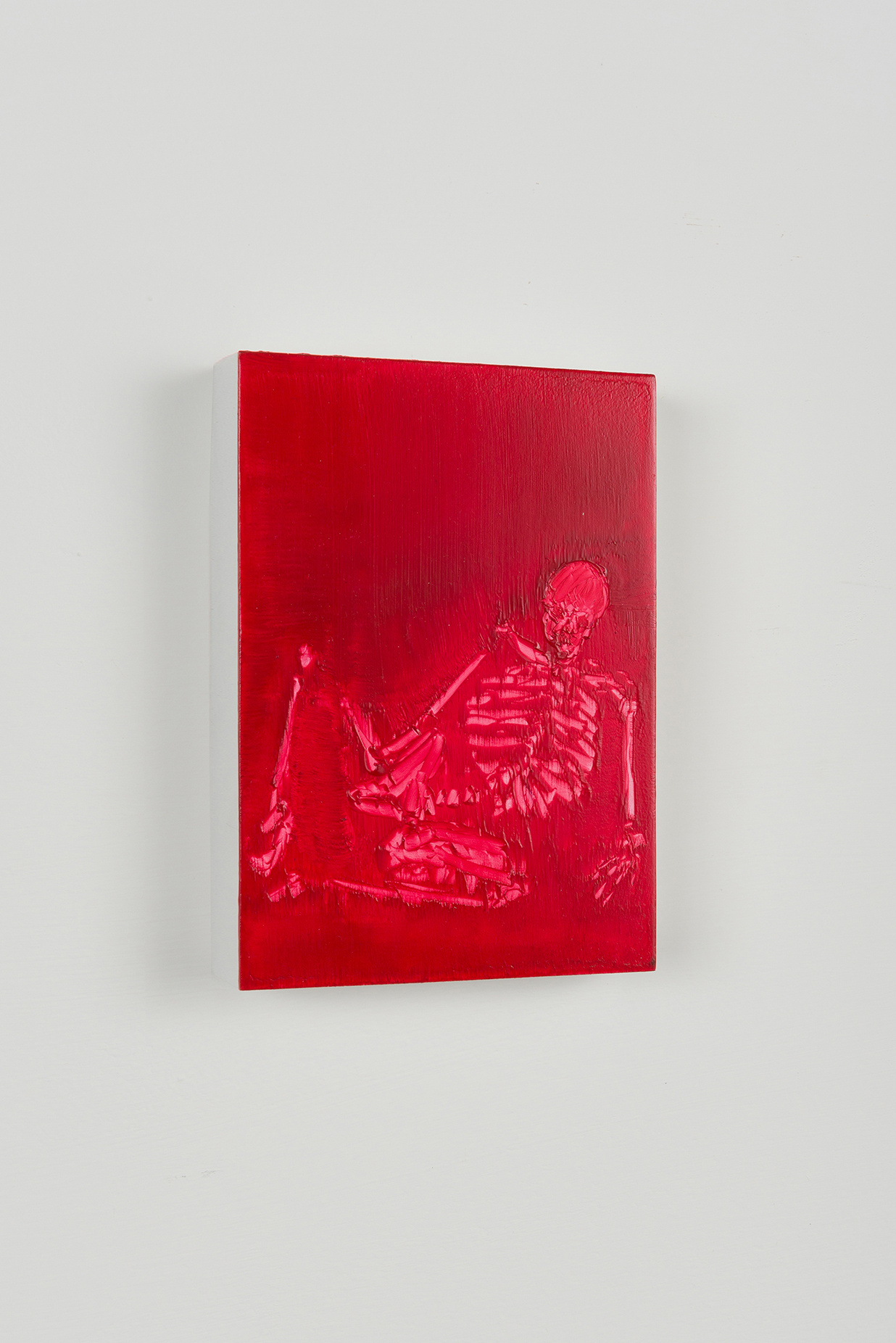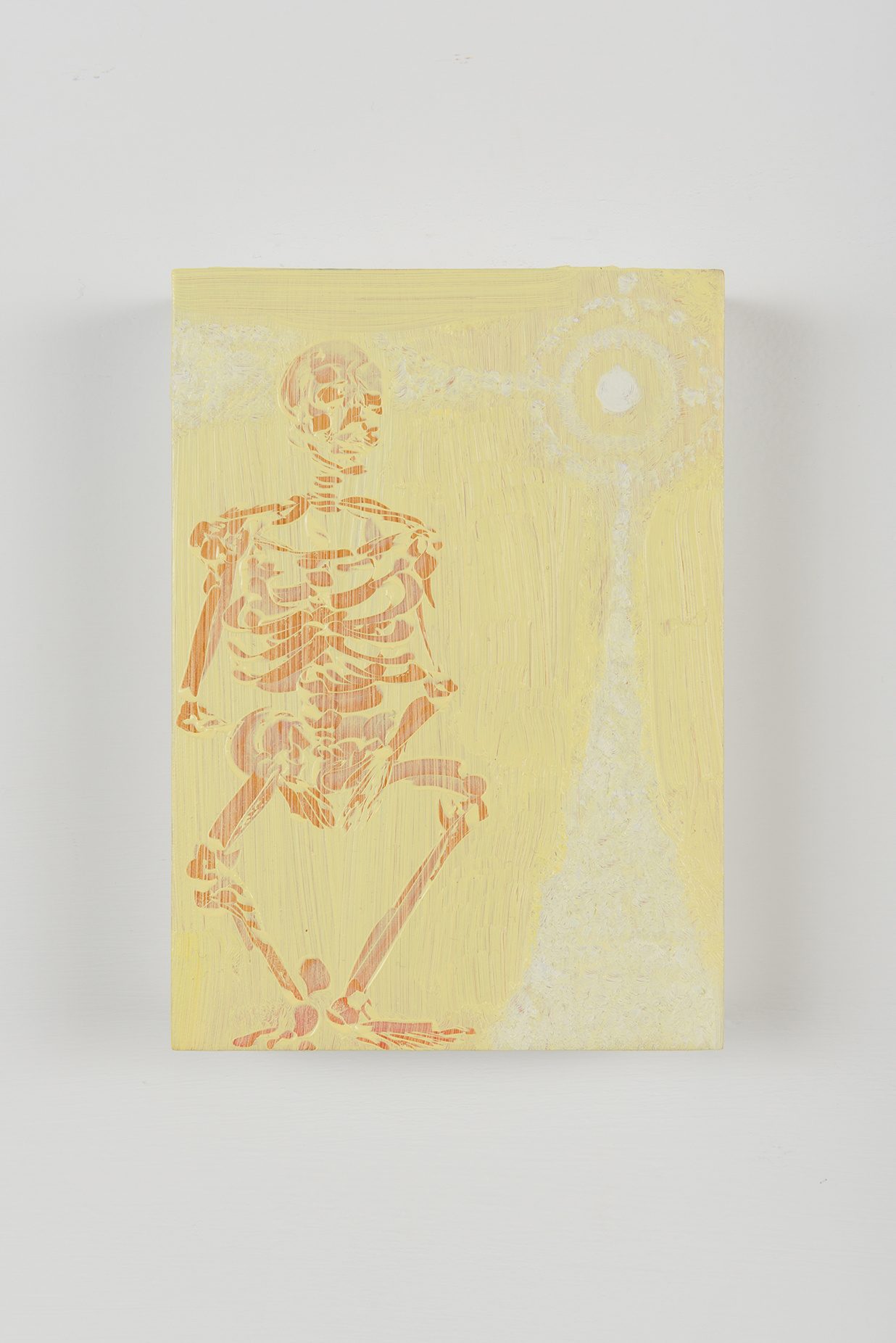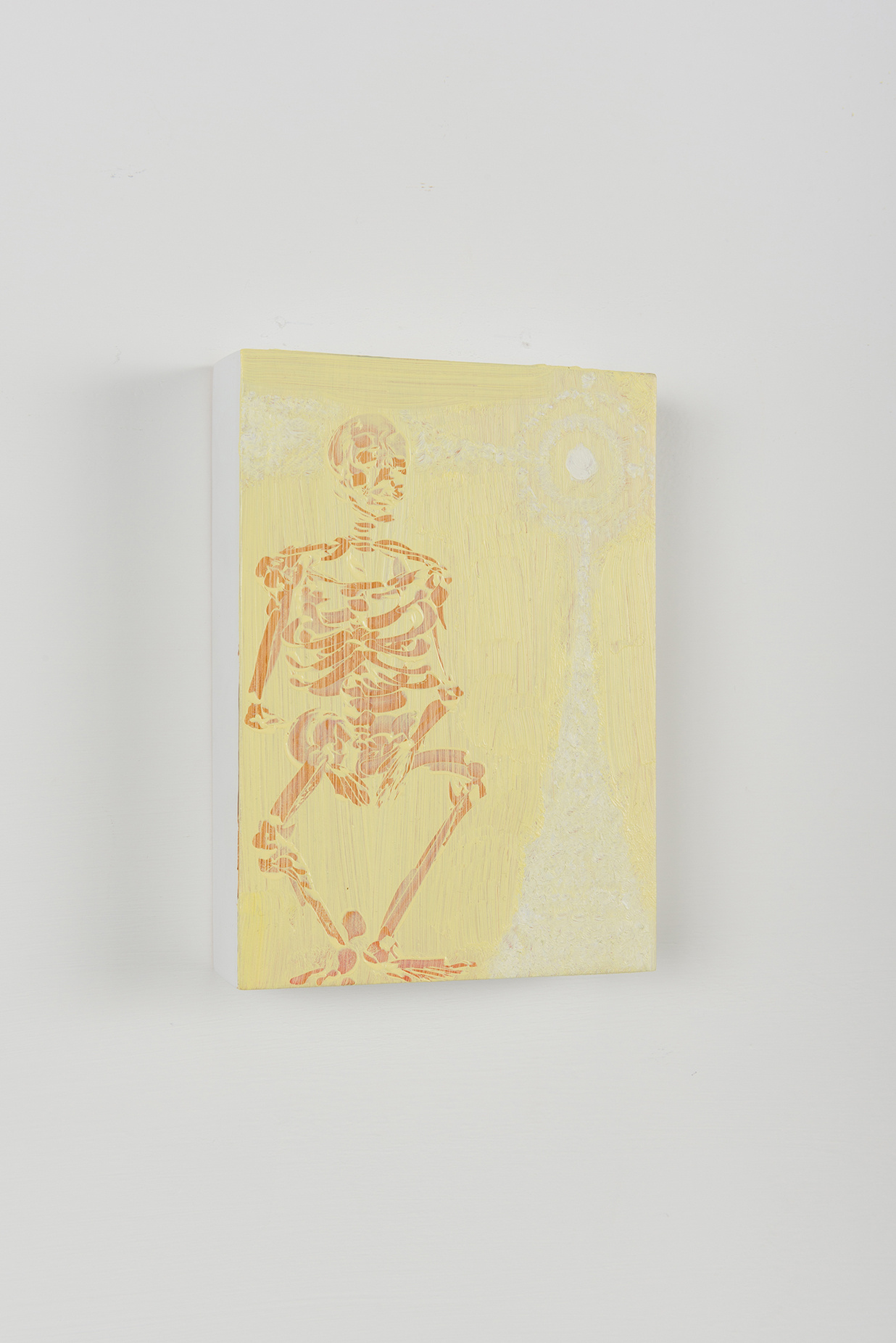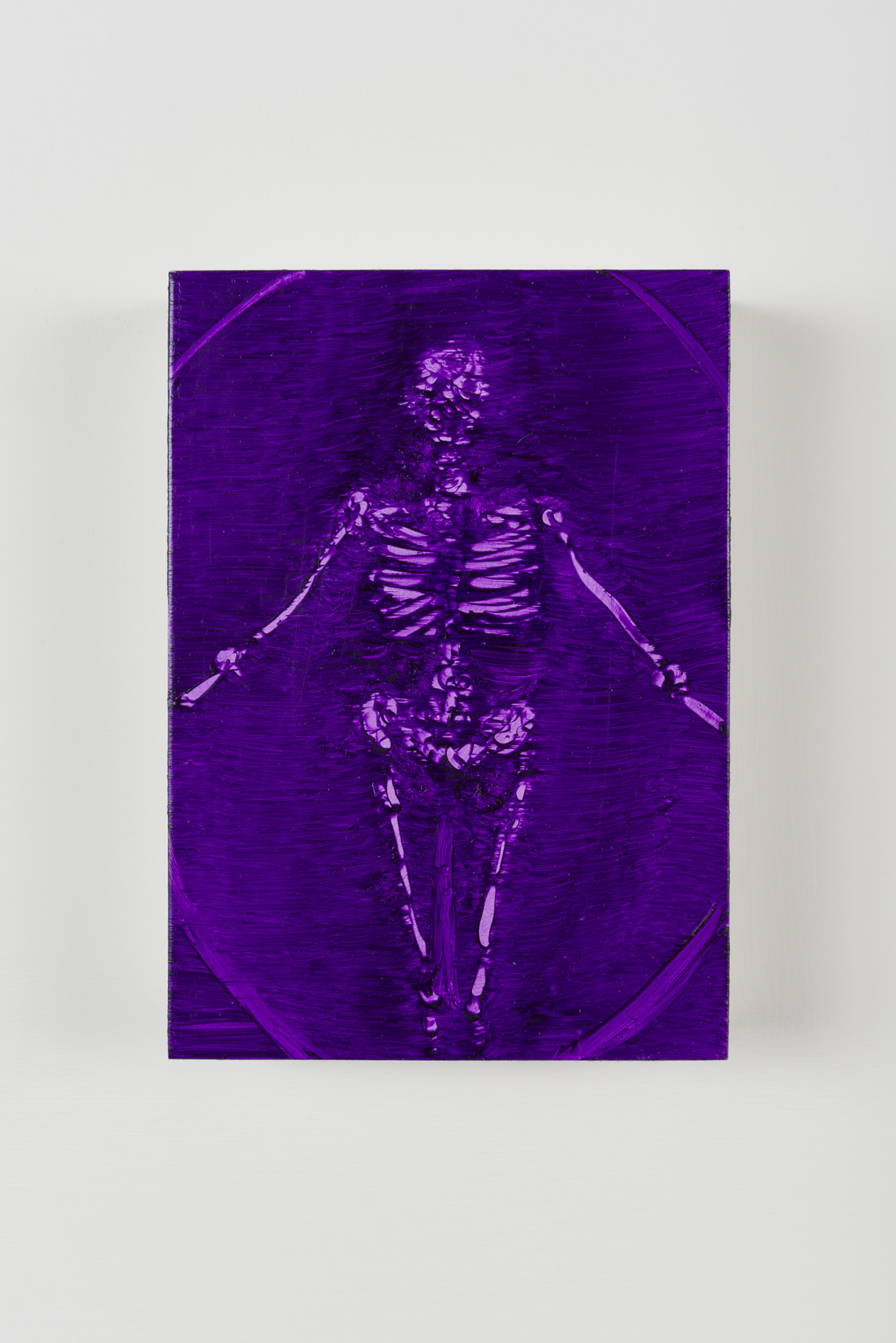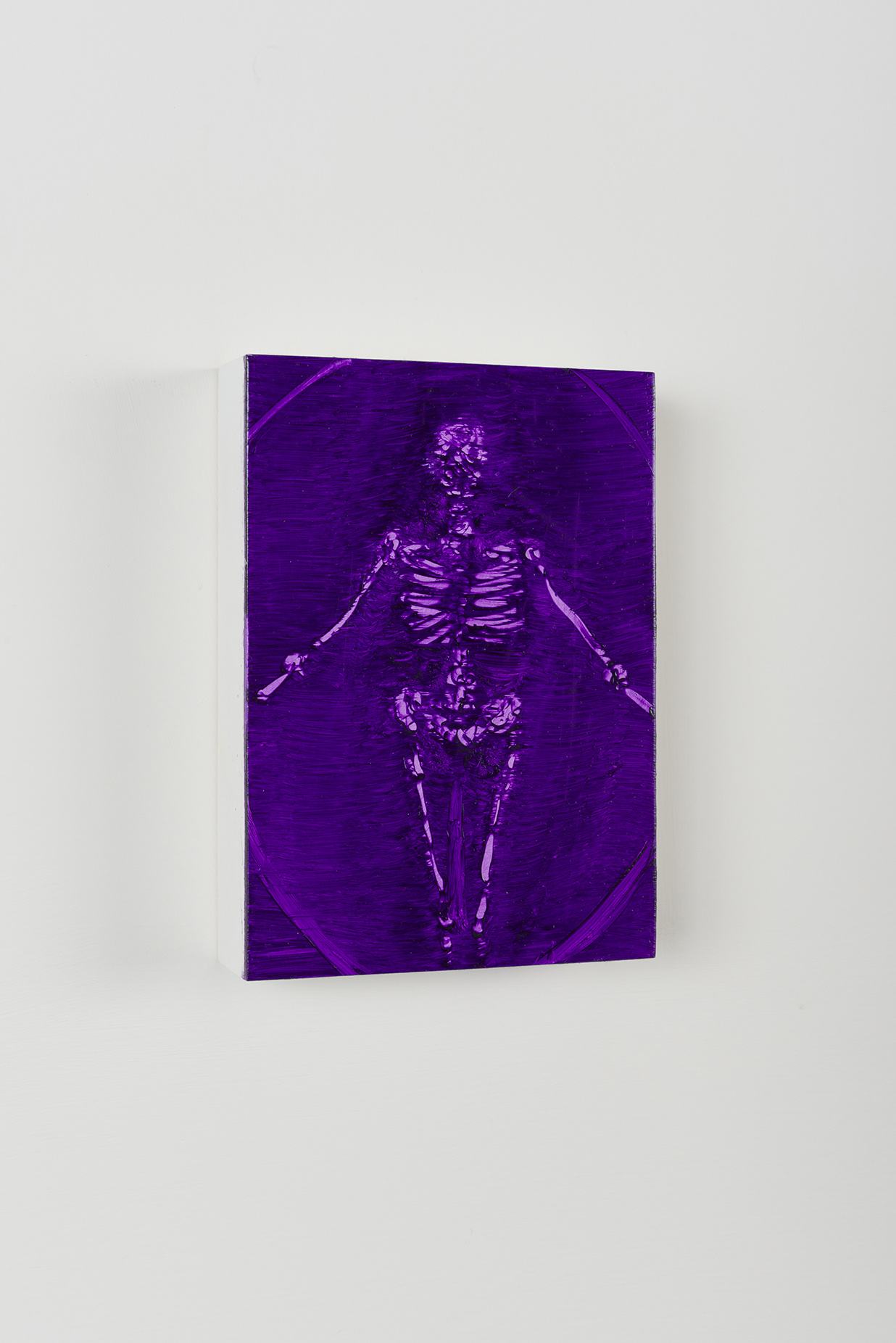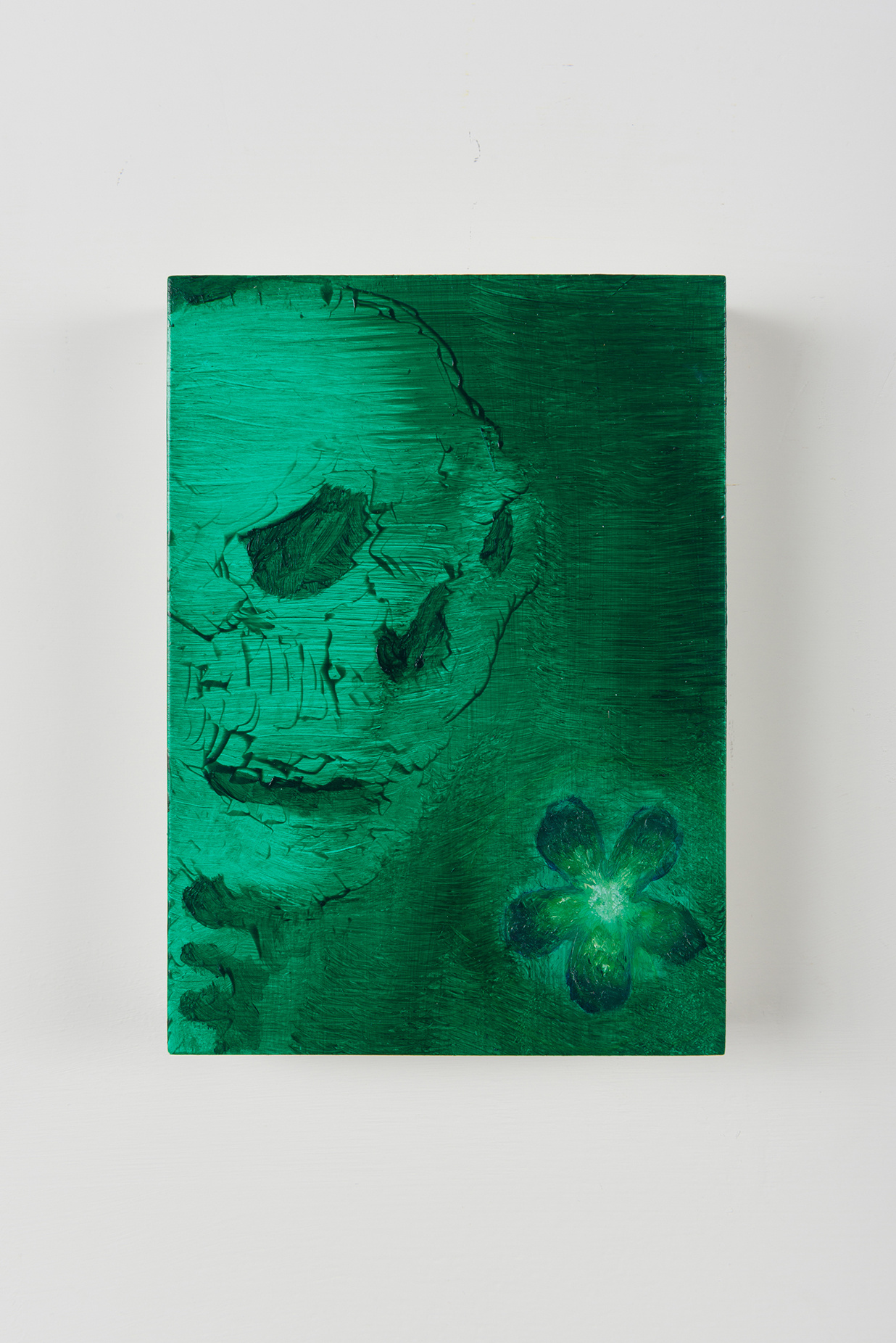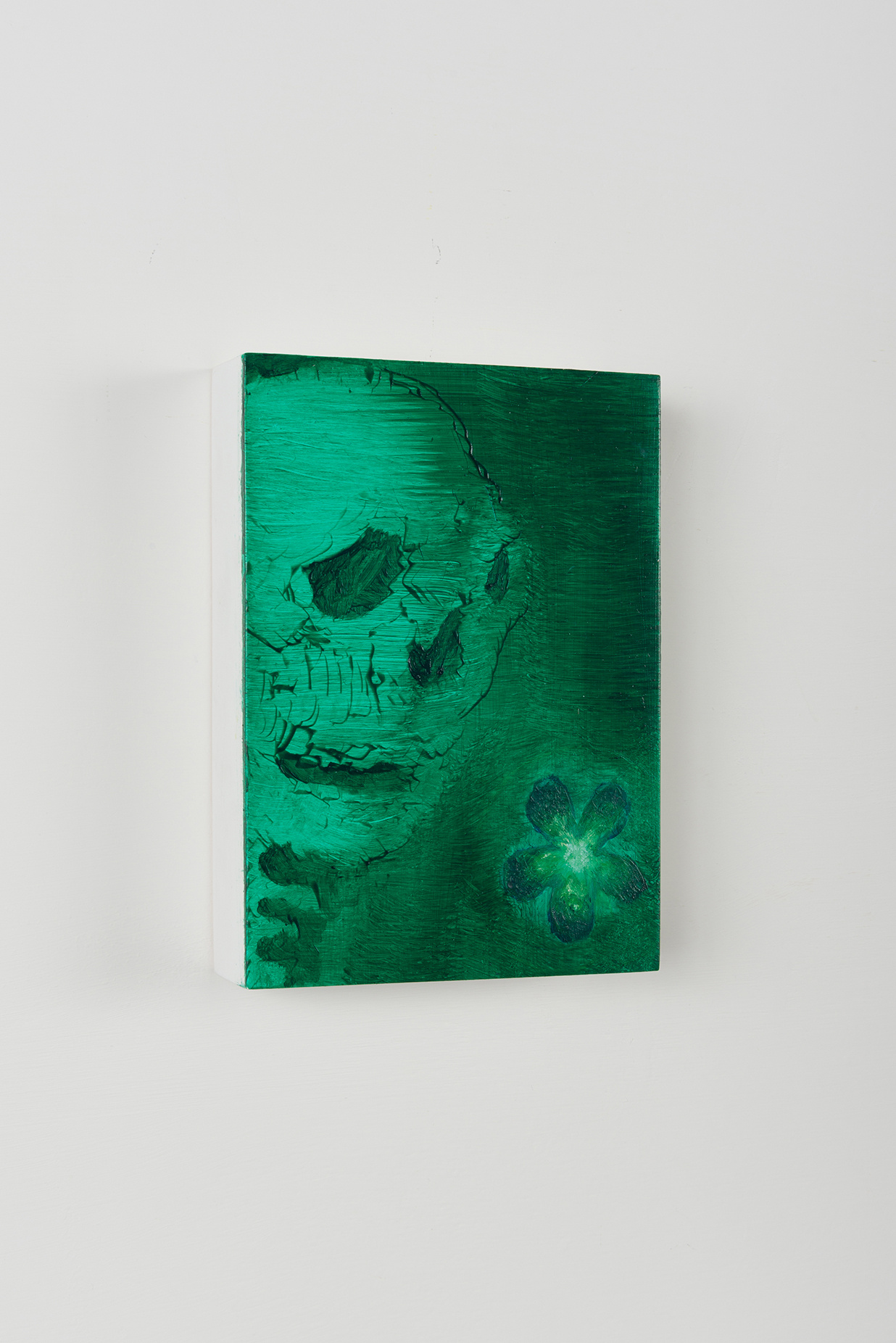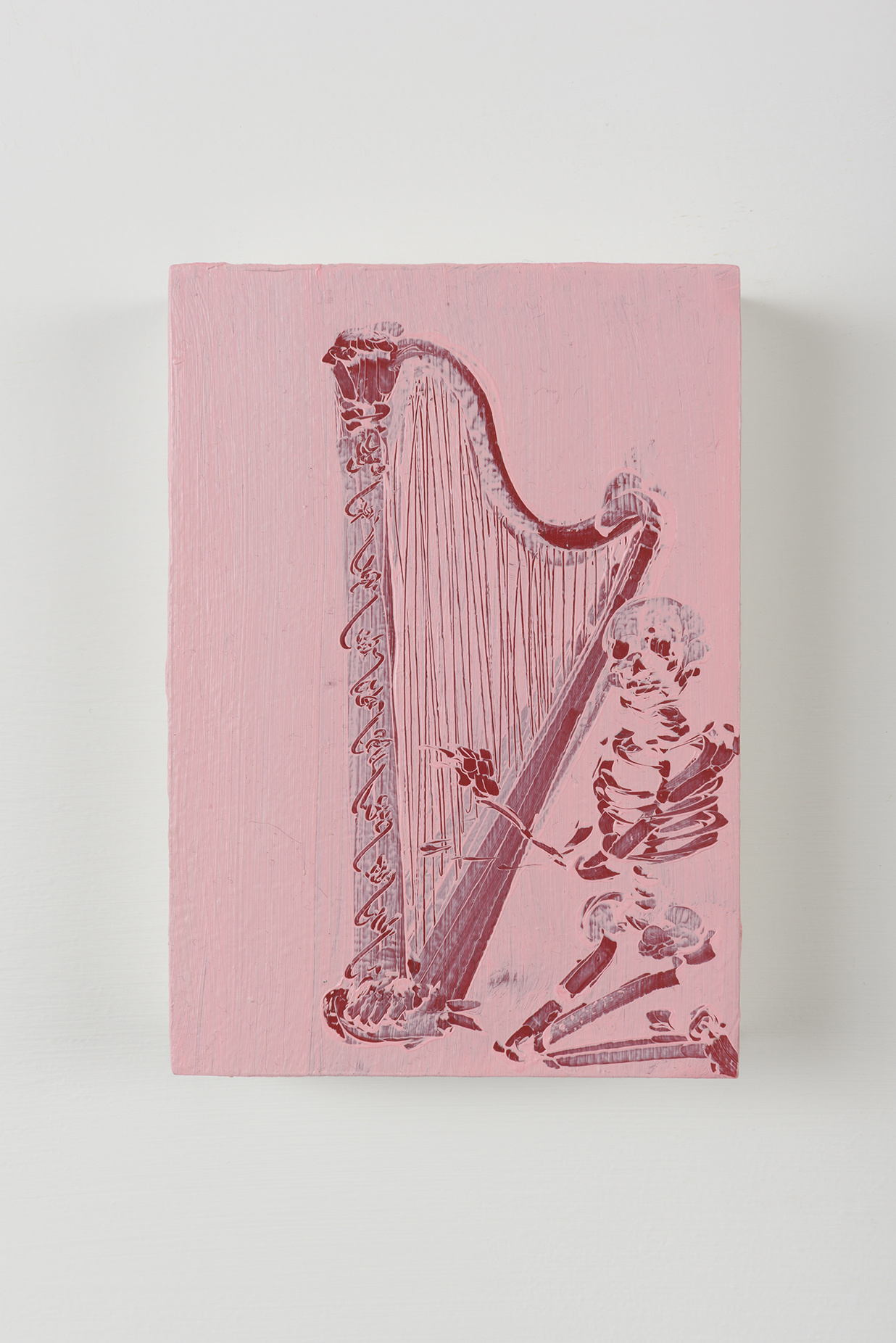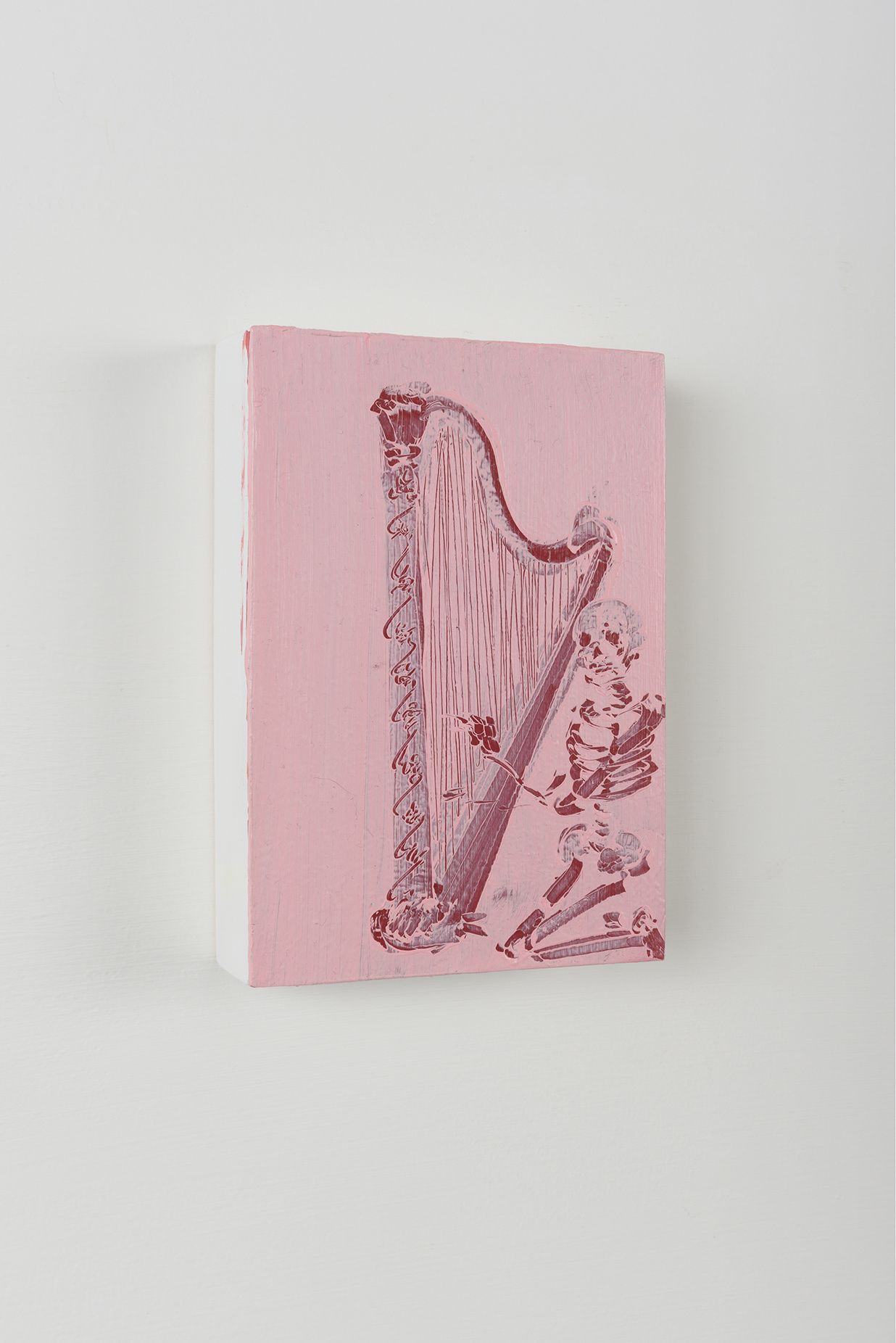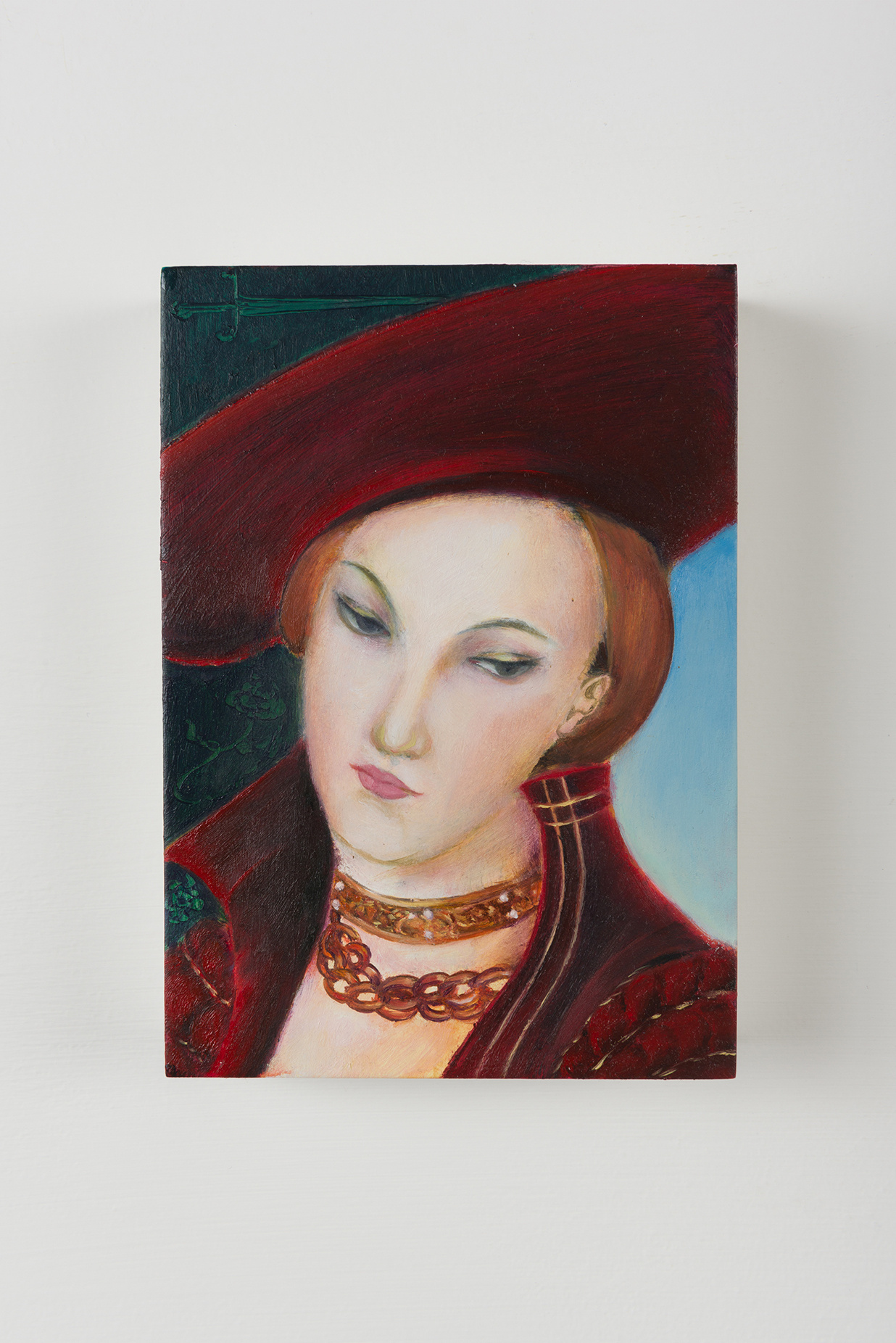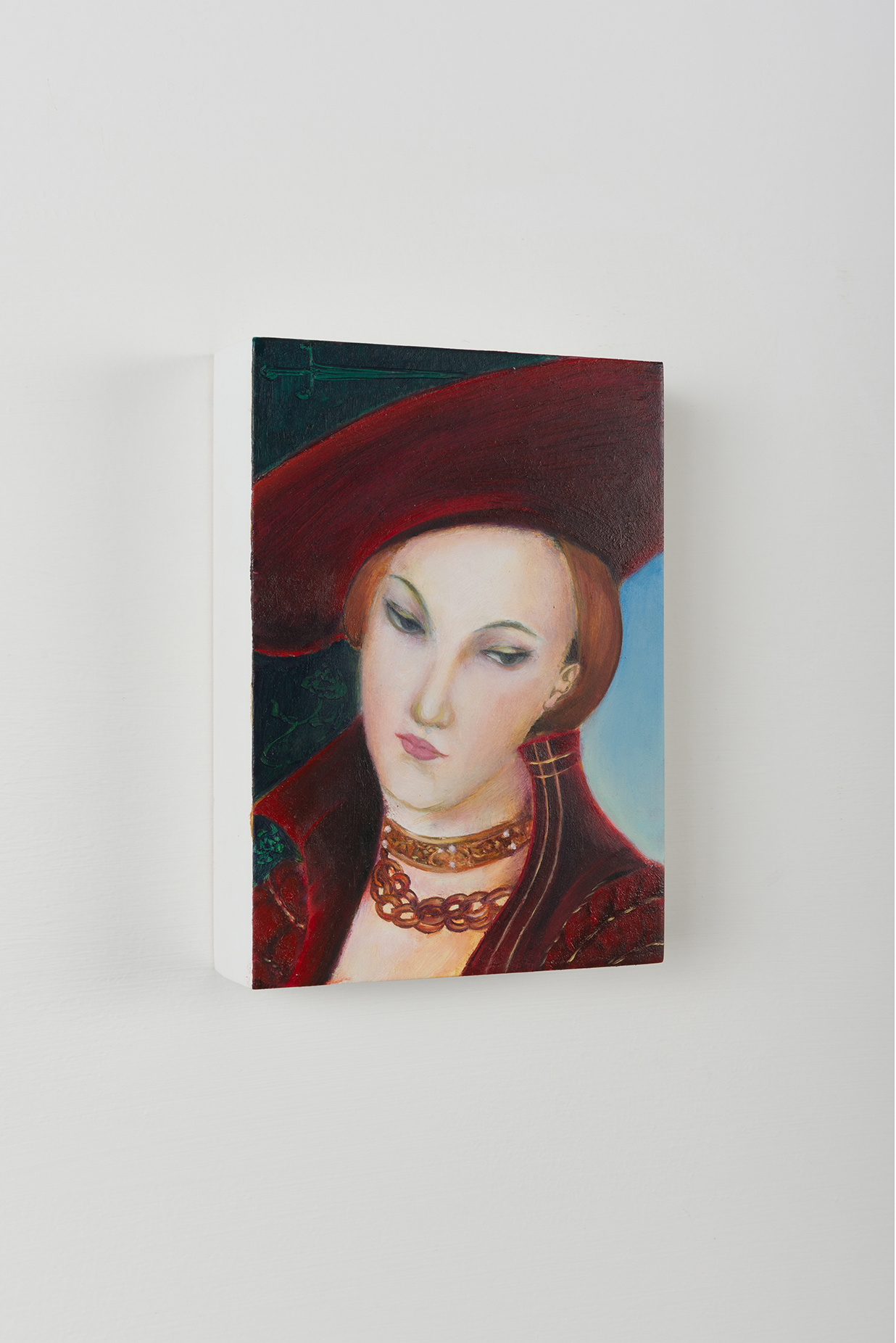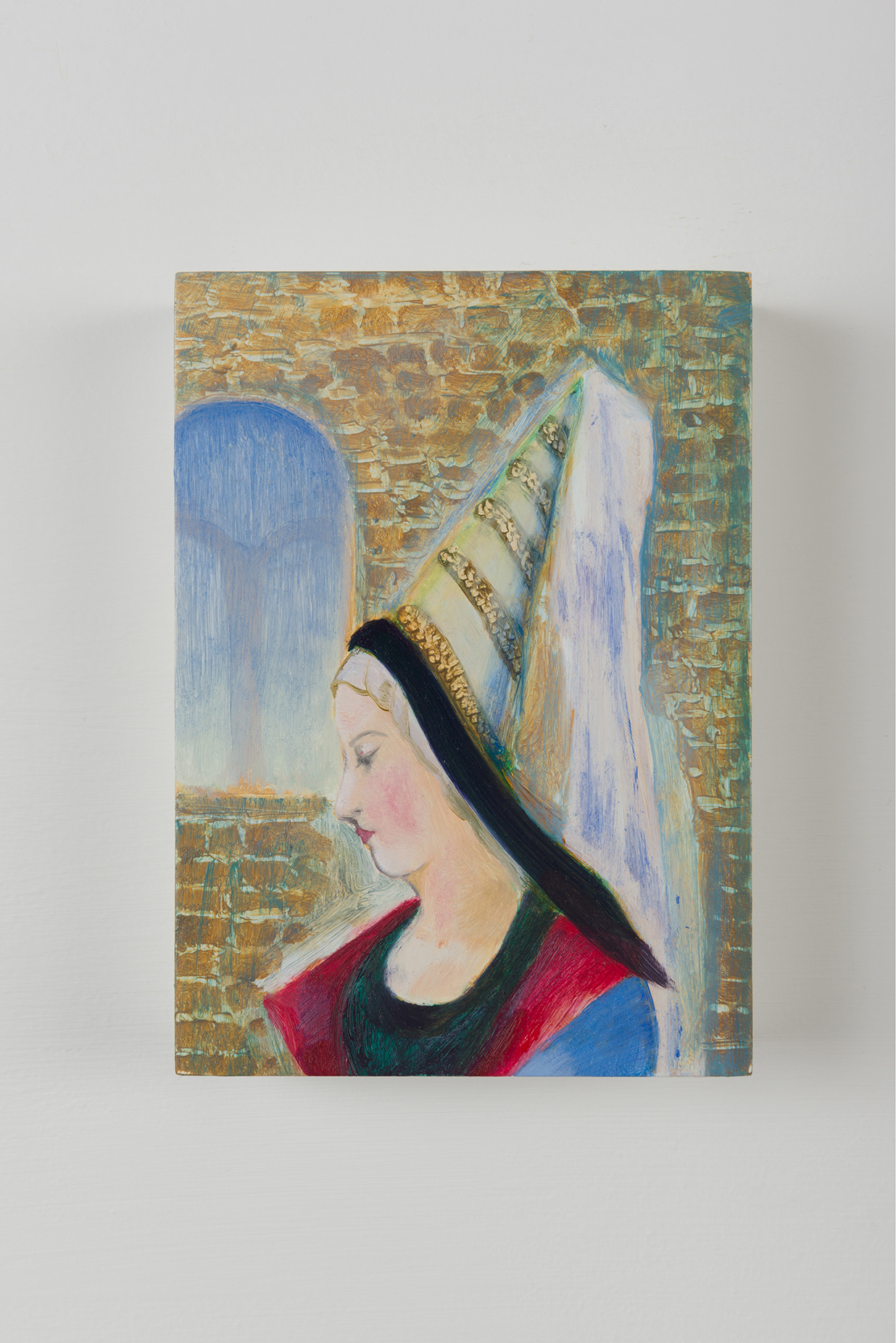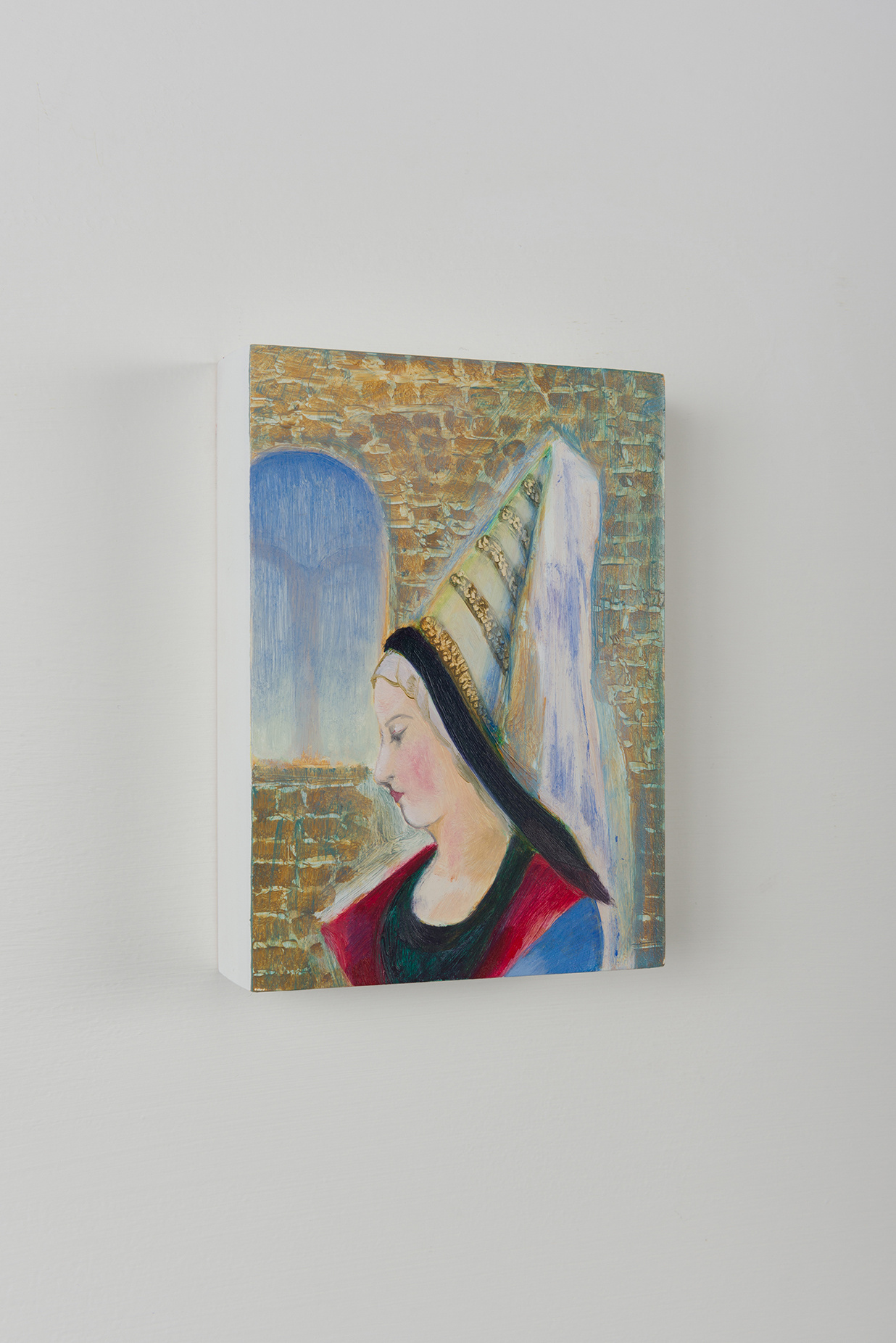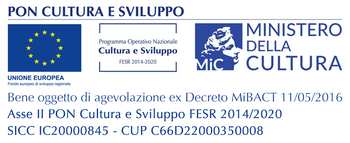Yage Guo’s artwork showcases a diverse range of techniques, including oil painting, graphite and charcoal drawing. Central to her practice are concepts such as time, metaphor and Nidāna (Sanskrit and Pali word that means “cause, motivation or occasion” most commonly associated with Buddhist philosophy, where it refers to the cyclical nature of existence, suffering, and rebirth). Through her paintings of figures, flowers, and still life, Guo captures an ethereal and sentimental essence that conjures dreamlike fantasies.
Dissolving Boundaries, the title of the show, draws inspiration freely from the Neapolitan novels by Elena Ferrante, particularly the theme of “smarginatura” – a dissolution of identity, where reality, self-perception, and societal structures blur and disintegrate. This notion of instability is central to Guo’s practice; exploring transformation, gender, and impermanence, highlighting the fluidity of form and meaning. Embodiment of change, while floral and skeletal elements symbolize ephemerality and resilience, emphasizing the interplay of life and death.
For the development of the current exhibition, Yage Guo was also immersed in texts and literature such as: Philippa Gregory’s Plantagenet and Tudor Novels, Quaderno Proibito by Alba de Céspedes, Stone Butch Blues by Leslie Feinberg or Detransition, Baby by Torrey Peters. These works examine women and queer individuals navigating identity, independence, and self-definition. They challenge rigid societal norms of womanhood, motherhood, and love, portraying femininity as a fluid, contradictory concept that coexists with masculinity, embodying both harmony and chaos.
In Study of Judith with the Head of Holofernes, she’s reimagining Judith as androgynous – defiant, self-possessed, and unwavering – stripping away the traditional depictions of seduction. The Medusa portrayal challenges the conventional narrative. She is often painted in defeat – her severed head held as a war trophy, grotesque and monstrous. The artist wanted to depict a Medusa who, though vanquished, remains eternal, ambiguous, seductive, and poised for vengeance.
Mythology, much like identity, is fluid and ever-changing. It is inherited, reinterpreted, and molded by the passage of time. I am drawn to these spaces of uncertainty – seeking to fill them with my own interpretations and alterations.
Yage Guo’s Skeleton Series explores materiality, color, and transformation, drawing inspiration from personal loss and the cremation process. This transition from flesh to bone reveals the history within bone white, while the skull and its subtle smile symbolize the return to one’s essential form. In exploring emotional weight through color, various hues represent different themes: deep blues reflect quiet meditation on death and rebirth; purples embody desire; greens reflect eerie stillness and untamed vitality; yellows radiate warmth and the act of waiting; reds reflect pulse with sensuality and intensity. The theme of imaginative narratives, influenced by astrology and tarot, the artist uses these metaphors to translate abstract qualities into vivid imagery.
This approach leads to imaginative reincarnations of figures from literature and history, such as Marguerite d’Anjou (Margaret of Anjou was Queen of England by marriage to King Henry VI from 1445 to 1461 and again from 1470 to 1471) as The Chariot card or a blindfolded centaur representing Sagittarius.
In her four expansive paintings, Guo explores moments of transformation, when identity dissolves and reforms: Veil of Spring symbolizes renewal and memory – a bold flower emerging, only to dissolve back into petals and time – echoing the desire to affirm one’s existence. Reverie embodies departure and disintegration. Unraveling illustrates the fluid coexistence of life and death – an orchid blooming while a dissolving body morphs into bone. Liminal Dance portrays a woman in blue, dancing through empty space – moving between pain and joy, life and death, caught in an eternal cycle of transition. (VVB)
Read less
Yage Guo’s artwork showcases a diverse range of techniques, including oil painting, graphite and charcoal drawing. Central to her practice are concepts such as time, metaphor and Nidāna (Sanskrit and Pali word that means “cause, motivation or occasion” most commonly associated with Buddhist philosophy, where it refers to the cyclical nature of existence, suffering, and rebirth). Through her paintings of figures, flowers, and still life, Guo captures an ethereal and sentimental essence that conjures dreamlike fantasies.
Dissolving Boundaries, the title of the show, draws inspiration freely from the Neapolitan novels by Elena Ferrante, particularly the theme of “smarginatura” – a dissolution of identity, where reality, self-perception, and societal structures blur and...
Read more
